| Edited By xuefei Chen Axelsson |
RISE (Research Institutes of Sweden), and Chalmers University of Technology have now begun, with support from the Swedish government, the establishment of a Swedish testbed for electromobility. Overall, contributions from the government, and the industrial partners CEVT, Scania, Volvo Cars and Volvo Group, enable an investment of 1 billion Swedish krona for the testbed.In 2017, RISE and Chalmers University of Technology were tasked by the Swedish government with creating a testbed for electromobility. It has now been decided that the testbed, called the Swedish Electric Transport Laboratory (SEEL), will be located in the Lindholmen area of Gothenburg, with facilities in the Stockholm region too. RISE and Chalmers will build and own the facility jointly, with industry as the customer base. The aim of SEEL is to strengthen the competitiveness of the Swedish automotive industry, to help Sweden remain at the forefront of innovations in the transport sector, and to accelerate the shift towards a fossil-free Swedish society. SEEL will provide testing for all the different areas of electrified transport. For example, electrified gearboxes and driveshafts for different types of vehicles, drivetrain and component testing for hybrids and electric vehicles, as well as charging and smart power-management. Even the marine and aviation sectors are expected to be able to make use of the testbed. “The automotive industry is extremely important for Sweden, and today we take an important step to secure Swedish automotive jobs in the great transition that is taking place in the transport sector. From fossil to renewable, from petrol and diesel to electricity. Our goal is to make Sweden one of the world’s first fossil-free welfare states. And to do that we need to both cut emissions and secure our competitiveness. The Swedish automotive industry will play a key role in this transformation,” says Mikael Damberg, Minister of Enterprise and Innovation. Stefan Bengtsson, President and CEO of Chalmers says, “this investment offers great opportunities for education, research and industrial development. The testbed complements the laboratories that Chalmers already has. It is ideal for us to take responsibility as one of the owners, to effectively contribute to rapid knowledge development relating to electric vehicles”. “SEEL is unique in terms of the close collaboration that will take place between industry, institutes and academia. It has all the potential to become a world-leading electromobility testing facility. Together with our testing area for active vehicle safety, AstaZero, and our new test facility for stress-testing automotive electronics and wireless communications, Awitar, SEEL makes RISE well-equipped to be a strong innovation partner for the Swedish automotive industry in the future,” explains RISE CEO Pia Sandvik. “CEVT has a clear mission within the Geely Group to become a world-leading innovation center. Electromobility is an area that allows for new features that will be absolutely essential for our future products to meet tomorrow’s requirements for fossil-free vehicles. Development of these features requires deep understanding of components and systems – SEEL will be part of the base we need to continuously develop this knowledge,” says Mats Fägerhag, CEO of CEVT (China Euro Vehicle Technology). “Scania is driving the shift towards a fossil-free transport system. Electrification will be an important part of that journey, and Sweden – with large vehicle makers, green energy and good cooperation between politics, academia and the corporate sector – has unique conditions to take a heavy role in this development globally,” believes Björn Westman, Senior Vice President and head of powertrain development at Scania. “The two electric transport laboratories will be very beneficial for both developing and testing of heavy electric vehicles in Sweden,” he continues. “We in the automotive industry have a major role to play in climate-management, and electrification is an important part of that work,” states Lars Stenqvist, Chief Technology Officer at Volvo Group. “We have started with buses and our first electric trucks, but much more research and development is required. SEEL will help us – and Sweden – to remain a leader in the development of vehicles and systems for climate-neutral transport.” “Volvo Cars’ ambitious electrification strategy means that SEEL will be an important tool when developing and verifying the new technologies we are planning for the coming years,” says Paul Welander, Senior Vice President at Volvo Cars. “During the years 2020-2025, we anticipate a significant shift towards electrified vehicles, so the timing for SEEL is ideal. It is also an investment that will benefit both the industry and society.” The different parts of the test bed will come into use as they become ready, with the lab expected to be fully operational by 2022. Source from Chalmers University. |
Monthly Archives: June 2018
中国之行(6)-走进侨乡青田
北欧绿色邮报网专题报道:
作者: 丑(曹)小姐
2016年7月15日,应浙江省青田县政府及瑞典青田同乡会会长叶克雄先生的邀请,先生赴侨乡青田讲学,我和两个儿子随同前往。
青田是一个充满传奇色彩,令人向往和值得探索的地方。青田对于我这个侨居海外二十多年的“老”华侨来说并不陌生,说它不陌生,是因为在瑞典王国,我身边生活着许多青田籍的朋友,我们彼此间交往频繁,感情笃厚;说它陌生,我也仅仅只看到侨居在瑞典青田人的部分缩影。青田人给我的印象是勤劳、好客和率真,每人都有自己创业的梦想和规划。
在瑞典他们大多数经营的是家庭式的中餐馆,秉承着传统的吃苦耐劳精神使他们的生意兴旺,日子过得红红火火。在瑞典,过去由香港人和台湾人占主导地位的中餐馆,现基本上被青田人所垄断。随着时代的快速发展,这些年已有部分青田华侨不满足于传统的餐饮业,他们把投资的眼光提升到更高的层次,转入国际贸易、房地产、宾馆业等等,可以说又上了一个新的台阶。
青田人是了不起的,这些看似平凡没有高深文化教育背景的青田人,却做出了不平凡的事业。几百年前青田人就开始漂洋过海闯世界,一代又一代,打出了一片属于自己的天空,掌握了自己的命运,谱写了一篇又一篇辉煌的让人如歌如泣的中国华侨海外发展史,造就了一个青田县成为全国闻名遐迩的侨乡。现如今青田华侨分布在世界五大洲八十多个国家,拥有了300多年的华侨史话。
是什么精神让青田这么一个小小县城名杨世界?没出国前,我从没听说过这个小县城的名字,但是当我来到瑞典后才知道,青田有着如此响亮的名气!心中带着十二分的好奇,我欣然踏进这个耐人寻味的山城小县城。
这是个艳阳高照的下午,车疾驶在温州开往青田的高速公路上,透过车窗远眺,群山环抱,山峦起伏秀丽,延绵不绝,植被郁郁葱葱。开车的刘先生是瑞典青田同乡会会长叶克雄的好朋友,一位健谈开朗之人。我有一个习惯那就是:每到一个地方,先了解一下当地的历史、文化和特产等。
宝马车在通往县城的高速公路上奔驰着,刘先生告诉我像这种豪华车在青田县城里比比皆是,没有什么特别的,这让我惊讶不已!他自豪地告诉我:“青田这个小县城单就春节来讲,从世界各地,特别是欧洲打进来的款项就有好几百万欧元,这都是我们这些闯天下的青田人孝敬家中的父母、孩子和亲人的”,这着实又令我惊呀!就是几天前我在故乡合肥市的一个“中国银行”里想提取1300欧元,结果银行里没有这笔款项,银行职员告诉我提取欧元必须得提前预约。刘先生告诉我在青田县银行想兑换和支付主要货币-欧元、美元比较简单。我看呀,这只有在青田侨乡的银行才有如此阔卓的手笔。刘先生还告诉我,每天在县城里人们谈论、关心最多的话题就是今天的美元、欧元是涨了还是跌了?
据县志记载:青田是位于瓯江下游,隶属丽水市的山区小县,群山环抱,由9镇、20个乡、3个街道共有414个行政村组成,面积2493平方公里,人口约53,5万。青田素称“九山半水半分田”人均只有三、四分的耕地,人稠地疏,早些年贫穷落后,俗话说:“树挪死,人挪活”,为了生存,早期的青田人携带着三把宝刀(菜刀、石刀、剃刀)开始闯天下,凭着青田人那骨子里特有的吃苦耐劳精神,在他乡淘到第一桶金后,就开始提携带动整个家族及旁系亲戚移民海外,最多分布在欧洲各国,如今青田县城里60% 滞守的是侨眷(老人、孩子),他们居住在海外的亲人们在县城中为他们购置或建造的高档小区里,过着悠闲的日子。这里的房价每平方要3到4万,价格不菲呀!比中国其他大中城市价格要高出许多,同时这几年从海外回乡投资建厂的青田人也在不断地增多。
时值七月,正是酷暑难当之时,漫步在县城的街道上,好一片繁忙和喧闹的景象。刘先生估计我们已经饿了,把车径直开到青田进出口商品城,他问我们最想吃点什么?儿子不假思索欢乐地说:“山粉饺和青田饼”,这可是我们唯一知道的青田美食。刘先生笑着说:“这就对了,它可是我们青田县的特色小吃呦!来到这里岂能不尝尝正宗的山粉饺和青田饼?”儿子们欢腾雀跃,拍手高兴。
山粉饺是青田人招待他乡客人的特色点心,它是用芋头和番薯粉掺揉,用碎肉、冬笋、豆腐、香菇、白菜作馅,包成三角形的,因为它的形状很像奔驰车的标志,故人们戏称为“奔驰饺”。
走进“柒七主题吧”酒吧里的装饰秉承了欧式风格,吧间里灯光幽幽,老板是刘先生的亲戚,传承着青田人热情、好客的特征。山粉饺端上来了,好爽心悦目!只见三角形的山粉饺徜徉在用绿菜叶铺底的餐盘中,诱人无比!我禁不起山粉饺的诱惑,放下斯文大口吃起来。山粉饺入口细滑,又素又香也不油腻,我认为这是人间美味,同时也体会到舌尖上的文化,这里的山粉饺比在瑞典青田朋友家里吃的山粉饺正宗多了,毕竟这里是山粉饺的故乡呀!,一边享受着山粉饺的美味,一边品尝着青田特色小菜,同时摇曳着手中的红酒杯,享受着法国原装红葡萄的醇香,惬意无比!从这一刻开始我便爱上了这座小山城了。
林先生刚从意大利回青田和“柒七主题吧”老板是发小,他操着蛮标准的青田普通话和我聊起他的故乡青田,他说:“我们青田人是带着三把刀出国闯天下和起家的,何谓三把刀?那就是石雕刀、菜刀和剃头刀”,我恍然大悟!早年的青田华侨就是靠着这三件“法宝”在海外谋生的。
儿子们大口享受着山粉饺和西式披萨的美味(这是他俩的酷爱),最后实在吃不动了,就拍着滚园的肚子,欢快地嚷着比试看谁的肚子大,我望着他俩脸上露出的笑容,心中感谢林先生的热情,也体会到侨乡人民那朴实的民风民俗。这时老板的岳父,一个朴实农民模样的阿叔也来到我们面前,他操着一口难懂的青田话,他慢慢地说,我努力地听,总算是听懂一点儿,阿叔一个尽地劝我们多吃些,我告诉他实在吃不下了,他操着那浓厚的青田方言连连地说“不多不多!”,一会儿他拿起了他心爱的竹笛,含在嘴里,就这样一曲悠扬的中国民歌就从他的嘴边飘荡过来,这是首熟悉和久违的民歌,听起来是那般的亲切!真没想到眼前这位朴实的阿叔能吹出这般优美的旋律,阿叔告诉我,青田这个小地方盛产竹子,小时候他就在山里竹林里玩耍成长起来,后来就慢慢地爱上了这翠绿的竹林和竹子那种不断向上的精神,后来他就成为青田一位民间吹笛艺人,这正所谓:靠山吃山,靠水吃水,一方水土养一方人啊!
窗外夏雨朦胧,带着丝丝的醉意,嘴里留有的Espresso咖啡的余香,我漫步在青田侨乡进口商品城里。这里有浓郁的欧陆风情,一间间店铺里摆满了进口商品,西班牙的大火腿被吊挂在橱窗里或用木架支撑着,意大利、法国、西班牙等国的红酒,或竖放或横放或金字塔似的摆设着,进口啤酒琳琅满目,西式咖啡吧、酒楼、茶楼、西餐厅、特色商贸、名衣名鞋店、化妆品店等,在这里你可以买到你想要的国外品牌产品,这里的经济发达消费水平已走在中国的最前列,侨乡的经济特色与优势在这里被淋漓尽致地展示着,这里是青田的世界!这里是世界的青田!这里更是大气的青田!
晚间,叶克雄会长邀请我们全家到农家乐品尝田鱼蒸饭,田鱼是一种红色鲤鱼,用其蒸饭是青田的特色菜肴。叶会长介绍说,这种红色的鲤鱼是在稻田里养大的,青田有着1200多年稻鱼共存的农业历史模式,这种纯生态养殖的田鱼,有很高的营养保健价值。田间水稻害虫成为鱼的食物,鱼类又成了水稻的肥料,种稻养鱼双丰收。青田这地方人多地少,这也是青田的祖辈们在有限的田地里寻找最大产值,就想出了这招在稻田里养鱼,可以这么说,这就是穷则思变的一个最有力成功的例子,也是创建生态型农业的最好例证。
用新鲜的稻米煮成的田鱼饭深受着青田人的喜爱!亲爱的朋友,您吃过连鱼鳞和鱼鳃都可以吃的田鱼饭吗?我想这绝对在我们普通的餐桌上见不到,但在这里青田的农家乐餐厅里却领略到。
叶会长盛情地给我夹了一大块带有鱼鳞的田鱼肉,我可从来没有吃过带鱼鳞的鱼饭,很担心鱼鳞会卡在嗓子上,皱了皱眉头有些儿犹豫,思索着这鱼鳞饭可怎么吃呢?叶会长仿佛看出了我的心思,他告诉我,田鱼鳞细腻、柔软,是可以吃的,而且营养特别丰富,所以青田人吃田鱼从来是不刮鱼鳞的,听了叶会长这番话,我悬着的心终于放了下来,轻轻地尝了一块连鱼鳞的田鱼,绝对不是想象中的恐怖。稻田鱼通体通红,外形美观,肉嫩可口,田鱼饭很香有味儿,我笑着对大家说:“现在我不需要其它任何菜了,可以吃三大碗田鱼饭”,大家都开心地大笑起来,晚宴在美酒、美食的催化下达到空前的高涨。
席间,瑞典籍华人周总慷慨地从他酒庄里带来了一箱子质量上乘的法国红葡萄酒来招待我们,周总是五年前回到青田家乡做起了法国、意大利红酒品牌生意。看着侨乡朋友们的热忱、慷慨,我为我们结交了这么多优秀的青田籍华侨而欣慰,也为他们今日的成就而骄傲,同时也为侨乡青田这块热土蕴育出这么多优秀华夏儿女而自豪。
带着几分的醉意,周总告诉我们一段鲜为人知的有关青田华侨的“野史”。据野史记载,早期上海滩的风云人物杜月笙手下有四大金刚,其中一员大将叫陈鹤年,他就是浙江青田人。陈鹤年当时管事的主要范围是输入劳务出口,也就是将廉价的华工输入到海外,他目睹家乡的亲友们由于土地的贫瘠,生活的潦倒和艰辛,便开始一批又一批输送家乡父老乡亲到欧洲去谋生,当时欧洲各国正处在经济腾飞的时期,需要大批劳工,于是乎一批又一批青田人为了谋生而飘洋过海。
据青田华侨史记载,早在17和18世纪,就有青田人前往欧洲从商,多以贩卖青田石雕为业,先行者立稳脚后,便提携亲友效仿此法到欧洲创业,他们通过陆路即上海乘船北上到旅顺,经陆地至东北满州出境,沿西伯利亚铁路到莫斯科,再辗转到欧洲各国。水路“藏舱”俗称为“偷渡”,这是一条艰难的旅程,在交通不便的年代远行,数百年间,一代代青田人就是躲在闷热潮湿,密不透风的船舱里漂洋过海,多少条鲜活的年青的青田人身躯就这样倒在这漫漫的旅程中,这是一部催人泪下、血泪斑斑的海外华人创业史,可以这么说每位青田华侨海外创业都有一部鲜为人知的辛酸史。听了周总的介绍后,我的眼泪在眼眶中打滚。青田人真的了不起!青田人的精神在激励着他们的一代又一代奋斗下去,这种精神至今还在绵绵不断地传承着。
没来青田之前,孤陋寡闻的我,只闻青田石雕之名却无缘相见,叶会长满足了我的心愿。从下塌的宾馆到青田石雕博物馆开车只需十几分钟,刚下车陈馆长就出来握手欢迎我们,为了让我们能够更进一步了解到青田石雕的历史,陈馆长建议我们先观看石雕的宣传片,这点正合我的心意,宣传片上那浑厚音美的男中音的解说词,让我如醉如痴……
讲解员带我们走进馆内,那一件件精美绝仑、生动鲜活充满生活气息的石雕作品,呈现在我的面前,令人叹为观止!这里的作品有国家级大师们捐赠的,有收藏家收藏而存放于此的,听讲解员说,石雕大师们都是根据石头自然构造而雕琢的。青田石雕博物馆,是中国唯一的石雕文化主题博物馆,它是6000年石雕的缩影。这里收藏了八十个矿区所有雕刻品种和各种类型印章的石头,它是青田向世界展示石雕文化的窗口,也是青田侨乡的一块金色名片。青田闻名遐迩,除了因为它是著名的侨乡,还得益于一块块湿润如玉,色彩斑斓,灵性通人的青田美石 ,它和寿山石、昌化石、巴林石并称为“中国四大名石”。
博物馆里拥有的青田石的品种繁多,令人神迷,令人感慨大自然的造化。青田石雕是大自然赋予的天生地造的柔性石,与生俱来就带有斑斓的色彩,石雕大师根据石头自然构造,天然纹路,相形度势,巧妙构思,雕琢而成,或山、或水、或人、或物,都雕刻的栩栩如生,充满了灵气,在大师们的眼中,每一块石头就是一幅画。
沉浸在这丰满灵动的石雕世界,被一块块湿润如玉,灵性通人的青田石所包围,我直感叹其背后那一双双出神如画神奇造物之手。石雕手法有平雕、浮雕、线刻,而最为特色的是镂刻,真实的立体感充分地体现了青田石雕的精湛艺术。听陈馆长介绍说,青田的石雕大师们和艺人们基本上都不是什么科班出身,他们大多是继承家风衣钵,世代相传,一代又一代延承下来,当然大师们都必须有自得的天赋和悟性。
我久久地停留在“石雕泰斗”中国工艺美术大师林如奎先生的遗作“高粱”作品前,这是一幅鲜活的五谷丰登喜庆图,那精美绝伦的构图和精雕细琢的工艺令我赞叹不已!我和林如奎大师的后代在瑞典国交往深厚,十分有缘,我和他的女儿在内蒙古相处了几日,她给我留下很深很美好的印象,年青时她跟随着父亲学习雕刻。
林如奎大师的女婿叶克清先生1979年走出国门,来到了瑞典国,经过30多年勤勉艰苦打拼,创造了一个囊括酒店、连锁、国际贸易、房地产等企业的赫赫有名的瑞典叶氏家族事业发展集团,叶氏集团的产业实现了多元化稳步发展。叶先生致富后,不忘乡情,经他之手就从家乡带出很多青田华侨,其中不乏成功创业者。叶克清先生有一幅与生俱来的古道热肠,他慷慨无私,待人真诚,接济青田乡亲,在瑞典凡是从他手下出来的乡亲想开辟自己天地时,他都会慷慨解囊,借钱出资帮助他们,他借钱给乡亲,连借条都不需要打。叶克清先生在瑞典侨界德高望重,凡受惠于他帮助的人,都对叶克清先生怀有一颗感恩的心,他是一位倍受尊敬的长辈,也是瑞典著名的爱国侨领。我虽然不是青田人,但通过与叶克清先生平日的交往和对叶氏集团的了解,对他怀有一颗崇敬的心情,他是我们华人的骄傲!
叶克清先生也是一位青田石雕精品的收藏家,他钟情于那些会说话的青田美石。每当他抚摸他的石雕收藏品,他就感慨地说:“几十年一路走来,不管身在何处,故乡青田始终在我心中,没有她的哺乳,就没有我今天的一切。所以,我一直心怀感恩,心怀梦想,我愿意做一块会唱歌的石头,讲好中国故事,传播中国好声音,让青田石雕走向世界的每一个角落”。他还告诉我们:“青田石是我们青田人走向世界的一个重要介质,它向世界各国人民展示中国的传统文化,进而增进对中国的了解,对青田的了解,在青田流行着这么一句名言:每一个华侨,都是块出国的石头,每一块石头,都是出国的华侨!”好一句经典的话儿,叶克清先生就是那无数“侨行天下”的杰出代表。
林如奎大师的儿子林伯正先生的石雕代表作“ 稻鱼共生” 细腻精巧,把稻鱼共生刻画的惟妙惟肖、淋漓尽致。
据我了解,中餐馆是海外青田华侨的基础产业。它的兴旺,让青田华侨在短短时间内就完成了原始资本积累,而这种积累,则让他们有了做大生意的勇气和信心,又产生了新的“青田梦”,目前他们在国内以消费和置业为主,同时提高教育程度,早先青田华侨受教育程度低下,他们把期望放在下一代上,融入侨居国主流社会已成为青田华侨们的共识,从这种意义上讲青田精神,青田人的梦想又深化了许多。
席间我问叶克雄会长,30多年前,您的梦想是什么?他笑着说:“那就是翻山越岭,走5、6个小时的山路来到青田县城看看,当时的小县城对他来讲就是京城了,这就是他年轻时的梦想,如今梦早已成真,这个梦又早已成为了历史,而今天叶克雄先生的梦想又是什么呢?人没有梦想,就不会有追求,没有追求就不会去奋斗,没有奋斗就不会有梦想实现的一天,愿大家都拥有一颗追梦的心!
参观石雕博物馆后,来到休息室,跟陈馆长闲聊起来,不知何故我对馆内石雕作品里杨梅的雕刻叹为观止,陈馆长告诉我杨梅是青田著名特产,青田素有“杨梅之乡”的美誉,它具有质优、果大、味美等特点。现在时值七月,杨梅季节已过。陈馆长是一位细心之人,看出了我遗憾的表情,十分钟之后,他让人弄来了一小筐冰冻杨梅,筐里的杨梅红中带紫,个头足有乒乓球般大小。陈馆长随手拿了一个放在嘴里,我们大家跟着吃了起来。青田的杨梅,肉质细软,汁多香甜,鲜嫩可口,略带丝丝酸味。当我们吐出杨梅核时,陈馆长告诉我们,杨梅核有着较好的护胃功能,应连同果肉一起嚼咽下去,我觉得太不可思议了,这么大的杨梅核如何能咽下去呢?我努力地尝试把杨梅核吞咽下去,最终还是儿子们把杨梅核吃了下去,他们拍着手高兴地叫着:“我们成功啦!”。我和先生虽然以失败告终,但仍然十分高兴,因为我看到了青田人吃杨梅是连着核一起吃的,我想这也许是侨乡的另一特色吧!
离开博物馆,陈馆长又带我们参观了叶建海石雕艺术馆。叶建海,青田石雕行业协会副会长、丽水市工艺美术大师,出生于1983年的叶建海先生中等身材、敦实而有一点腼腆,看了他的石雕作品,很是惊讶!实在难以想象如此精美的石雕艺术品出自这位刚过而立之年的他,叶先生介绍起他的石雕作品来却判若两人,滔滔不绝、如数家珍。陈馆长告诉我,叶先生自幼受父亲影响,酷爱石雕艺术,同时他有着与生俱来的天赋,他爱美石且视美石为知己,酷爱它的妖媚,他可以读懂青石,青石仿佛也可以读懂他,他与美石是两情相悦,是情侣。我问叶先生,创作一幅石雕作品大约需要多长时间,他告诉我,很多时候是几件作品同时进行雕刻的,雕刻是需要灵感,而灵感需要细细地揣摩,需要充分发挥想象,灵感一旦来了,就像那决堤的洪水,拦都拦不住,在创作过程中,时而他会兴奋不已,时而他也会迷茫无措。
置身于这石雕艺术神话般的世界,我目不暇接,流连忘返,感慨大师们拥有天地造物般的妙手,能够有幸和石雕大师面对面地交流,亲眼目睹和抚摸那些精美的石雕作品,我感慨万千,真诚祝愿这位年轻的石雕大师在今后的石雕创作中取得更加辉煌的成绩!
青田之旅,短暂而又精彩!侨乡让我充分领略到它淳朴的民风、奋发向上的精神,也看到海外华人的爱国之心、爱乡之情,这是浓浓的桑梓情怀。
亲爱的朋友,请来侨乡青田看看吧!在这里你也许会找到你所需要找的东西,在这里你也许会找到你的精神所需,这是一个与世界同步的青田。
我爱你–青田!
今日头条:瑞典专业外国记者协会记者访问中国驻瑞典大使馆
北欧绿色邮报网报道(记者陈雪霏)– 瑞典专业外国记者协会(PROFOCA)于5月23日组织会员记者访问中国驻瑞典大使馆。中国驻瑞典大使桂从友和使馆政务参赞张彪等在百忙之中热情接待了PROFOCA记者。
参加访问的有瑞典专业外国记者协会会长陈雪霏,副会长纳瓦鲁,秘书长瓦瑟曼和印度记者斯卡内尔。
桂从友大使向记者介绍了中国的“一带一路”创意,中国十九大以来进入新时代确立了全面脱贫攻坚的宏伟目标,中国人民正在向全面建成小康社会迈进等中国的国情和大政方针。
桂大使说,他欢迎外国记者到中国去走走看看。百闻不如一见。
瑞典专业外国记者协会会长陈雪霏对桂大使的热情接待表示感谢。瑞典专业外国记者协会是由那些有良知的记者组成,他们将积极报道有关中国和瑞典的各种报道。
双方还就瑞典政治经济文化和人文交流等方面问题交换了意见。
图文 陈雪霏
今日头条:瑞典专业外国记者协会记者随团访问哥德堡纪实
北欧绿色邮报网报道(记者陈雪霏)– 瑞典专业外国记者协会会长陈雪霏和副会长候海. 纳瓦鲁于5月31日随瑞典外交部新闻司支持的瑞典外国记者协会组织的哥德堡之行一起访问了哥德堡。
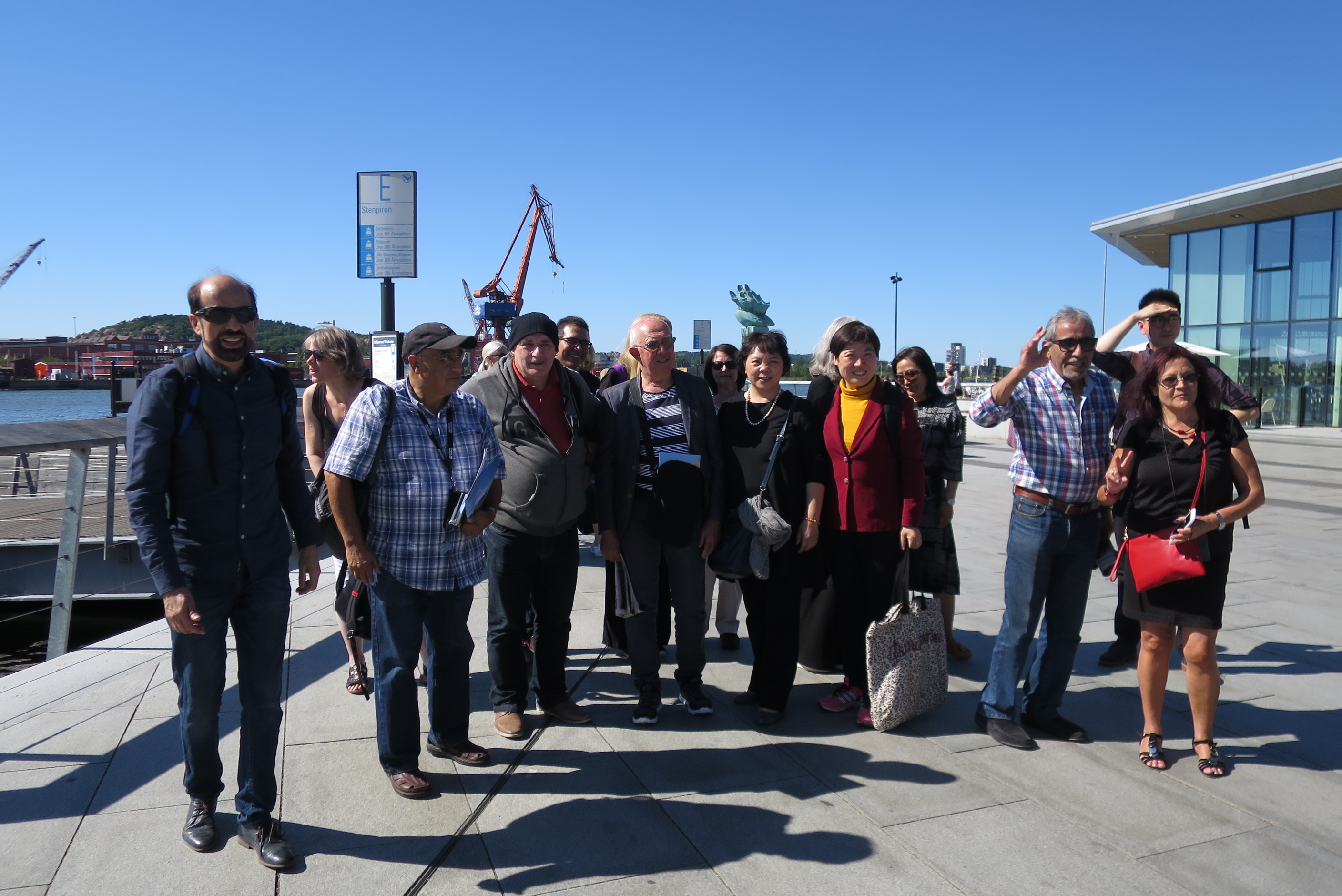 随团的15名记者来自中国,瑞典,波兰,俄罗斯,安哥拉,墨西哥和智利等10多个国家。访问团由外交部新闻司Boel Lindberg和瑞典外国记者协会会长Irina带队。第一站是著名的阿斯利康制药厂哥德堡研发总部。
随团的15名记者来自中国,瑞典,波兰,俄罗斯,安哥拉,墨西哥和智利等10多个国家。访问团由外交部新闻司Boel Lindberg和瑞典外国记者协会会长Irina带队。第一站是著名的阿斯利康制药厂哥德堡研发总部。
 一进门,在接待处就悬挂着分子模型,大厅中央的整个建筑模型更是给人清晰明了的感觉。据介绍,近年来阿斯利康的股票直线上升,这与它的开放合作有很大关系。
一进门,在接待处就悬挂着分子模型,大厅中央的整个建筑模型更是给人清晰明了的感觉。据介绍,近年来阿斯利康的股票直线上升,这与它的开放合作有很大关系。
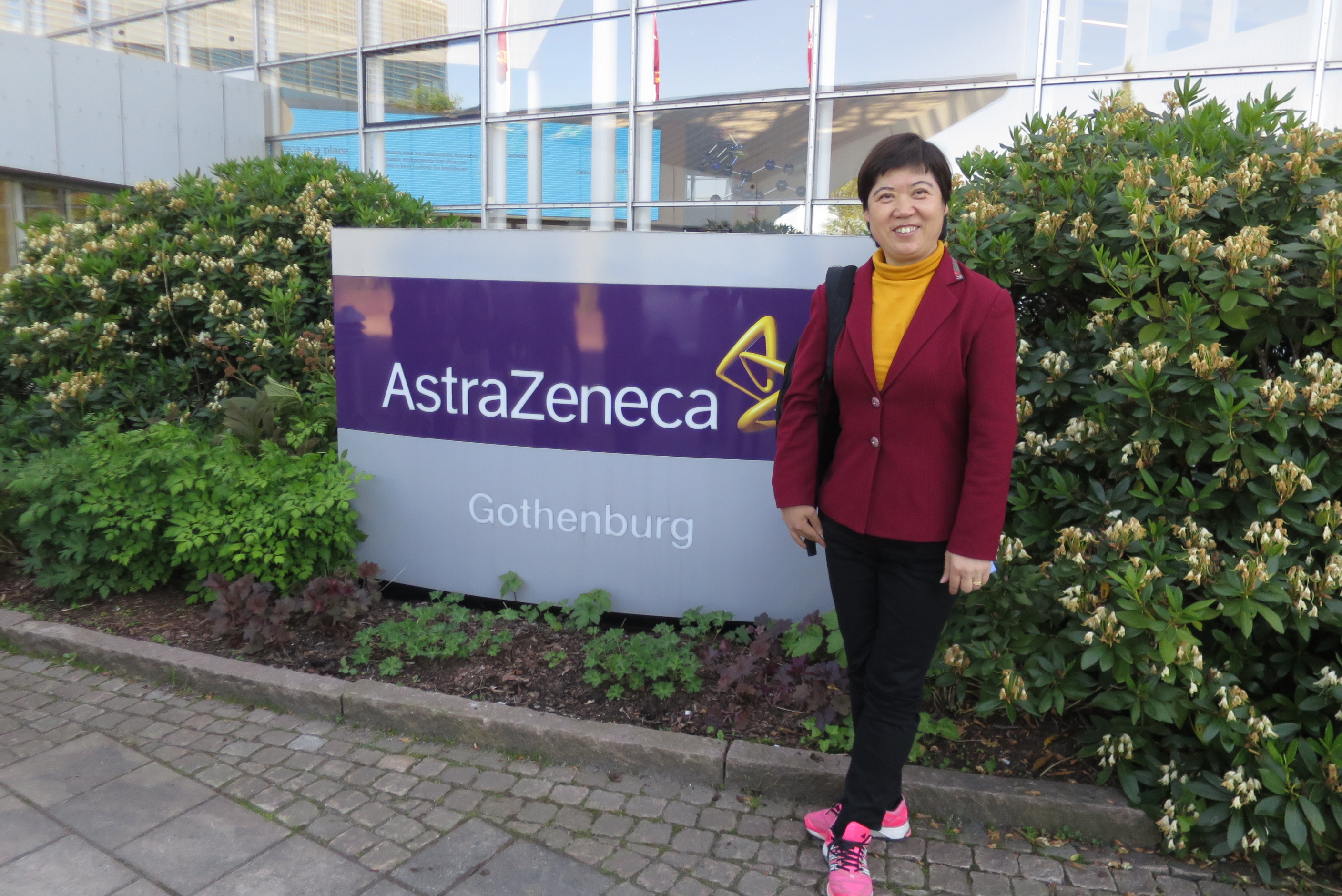 阿斯利康在保证不泄漏自己的秘密的前提下,尽最大可能开放,那就是竭尽全力吸引人才,吸引年轻人,为他们提供孵化器,为他们提供聚集点,为他们提供展示成果的平台。
阿斯利康在保证不泄漏自己的秘密的前提下,尽最大可能开放,那就是竭尽全力吸引人才,吸引年轻人,为他们提供孵化器,为他们提供聚集点,为他们提供展示成果的平台。
通过吸引年轻人加入,阿斯利康保证了人才的充足,生产的有效。和很多公司感觉人才青黄不接的情况形成鲜明的对比。
实际上,阿斯利康的巨大资源就是有地,有厂房,有空间,所以,他们就开发了一些适合吸引年轻人的项目,烧一点钱,但是,换来的的新鲜血液。
阿斯利康是一家由瑞典阿斯特拉公司(Astra AB)和英国捷利康公司(Zeneca Group PLC)于1999年4月6日合并而成的大型英瑞合资制药企业。总部在伦敦,研发中心在哥德堡,生产基地在南泰利耶以及中国无锡等地。
据介绍,阿斯利康研发、制造及销售用于治疗消化、心血管、肿瘤、中枢神经、呼吸系统和麻醉药物。2014年8月1日以548亿市值成为伦敦证券交易所上市的第六大公司。
2015年12月16日阿斯利康(AstraZeneca)斥资5.75亿美元收购日本武田药品(Takeda Pharmaceutical)的核心呼吸药品业务,包括可预防慢性阻塞性肺病(COPD)的药品,在美贩售的药品名为 Daliresp,在欧洲则称为 Daxas。Daliresp 乃 COPD 市场首个也是唯一一个选择性磷酸二酯酶-4抑制剂。
2015年12月17日阿斯利康(AstraZeneca)斥资40亿美元收购未上市生物制药企业Acerta Pharma的55%股权,以便获得后者的一种治疗白血病的新药。
阿斯利康很会宣传,其药品曾经为教皇治病,教皇特意写来感谢信。
阿斯利康的内部管理十分严格规范。
在公司的墙壁上清晰记录公司的发展历史。
进入实验室形象生动地观察人体的循环机理。了解科学家是怎样工作的。
此图展示人体是如何接受和吸收药物的。
阿斯利康积极和中小企业合作,和年轻人合作,对外开放,吸引人才,吸引新技术,新创意,为他们提供孵化器。
这里就是移动实验室的一部分。
移动实验室就是一个项目,招收六个月的实习生,都是博士生。其口号是,只要我们一起努力就可以更好地为未来服务。每天都要发现积极的方面尽管有时你必须非常努力才能发现。未来依赖于我们现在做什么。
“有些人梦想成功,而其他人已经醒来并努力实现梦想。” “开始行动的方法就是停止空谈,并开始行动。”“不要告诉人们你的梦想,要秀给他们看。”
这是借助沃尔沃的平台。
有关负责人介绍哥德堡经济区的发展规划。哥德堡也在向中国学习,开始进行高层建筑的建设。要让人聚居密集一些。生活方便一些,一些大型建筑将等待我们。
这就是哥德堡科技园的标志性建筑。
随后,大家对哥德堡市区进行了一番旅游。在16世纪和17世纪,哥德堡的位置对于整个瑞典来说有战略上的重要意义。它位于丹麦和挪威领土之间的瑞典西岸,是瑞典出海的西大门。在几次失败后,哥德堡于1621年由古斯塔夫二世国王成立。哥德堡的城市纹章里的狮子是来源于瑞典国徽,象征性地拿着一面有三顶皇冠图案的盾牌,来抵挡敌人的进攻。人们看到的是哥德堡的最古老的市场。这里曾经是东印度公司的所在地。有轨电车在这里依然行驶。
1731年,瑞典东印度公司成立,和亚洲的国家建立了贸易往来,哥德堡开始繁荣起来。
随着与西方的贸易增加和瑞典到北美的移民潮兴起,哥德堡逐渐发展成瑞典的主要港口。
街道,通往大学。
这里是早期的军事领地,现在改造成商业区。
由于得天独厚的地理位置,哥德堡是斯堪的纳维亚地区最大的也是最重要的港口基地。哥德堡是瑞典东印度公司的总部,贸易和航运在18世纪是最重要的经济产业。之后工业发展起来,如SKF、沃尔沃集团和爱立信。
蓝领工业的支柱地位一直维持到1980年代,航运业开始走下坡路。现在城市已经发展成为一个综合性高科技工业城市,沃尔沃汽车是最大的雇主,另外有大批小软件公司成立起来。
音乐学院。
哥德堡为鼓励餐饮业和维护良好的市容市貌,每年评比最受欢迎的咖啡馆。这是去年被评上的咖啡店。
由于紧邻海边,哥德堡有很多顶级的海鲜餐馆。哥德堡还拥有不少顶级主厨,在过去的几十年里一共有7位哥德堡的主厨夺得了瑞典年度主厨大奖。最出名的购买新鲜食材的地方是Feskekôrka,一个室内的鱼市场,建筑的外观与哥特式教堂很相像。2006年,有4家餐馆被《米其林指南》杂志评为星级餐馆。[8]
哥德堡也许是全瑞典咖啡馆最集中的城市,城市中心有大量的学生有喝咖啡的传统习惯。咖啡馆的数量在1990年代大幅度增长。哥德堡也有很多酒吧和迪厅。
瑞典的水晶宫。去年去伦敦的时候住在水晶宫附近,但是,没有水晶宫了。因为19世纪博览会结束以后,水晶宫就被拆除了。如今在这里看到的水晶宫似乎又想起了当年的照片。
其实,这里是温室房,里边都是热带植物。但看起来非常好看。
这个公园是前两年刚刚修葺一新。
花草丛中一座雕塑,这是典型的瑞典特色。艺术无处不在。
过去这里是可以行船的。
最古老的旅馆。
最古老的中央火车站。
鲜花即使只开放一两个月的时间,也是值得让它们在该开放的时候开放。这就是生活。这就是瑞典人的生活,或者说是哥德堡人的生活。
工作中要努力创新,生活中要有很好的环境,一切都以和谐、环保和可持续为宗旨。创新过程中可能有无数次失败和死亡,但还是要不断地探索,不断地创新,万一成功了呢!
图文/ 陈雪霏
欧华妇联总会参加在旧金山举行的中国旗袍观摩大赛
《北欧绿色邮报网》驻荷兰特约记者 张卓辉 报道:欧洲华人华侨妇女联合总会(下称:欧华妇联总会)会长熊国秀率领总会代表团应美国无极限美亚文化基金会邀请,于2018年3月10至17日出席了在美国三藩市(旧金山)举行的中国旗袍观摩及大赛活动。
会长熊国秀(左1率领总会代表团应美国无极限美亚文化基金会邀请,-225x300.jpg)
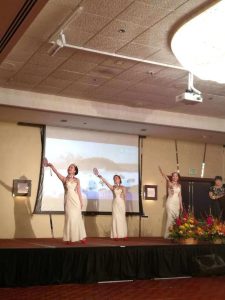 “百年旗袍·风靡美国”。由来自法国、法属圭亚那(法国海外省)、 西班牙、 英国、 捷克、 荷兰 、比利时等国姐妹组成的欧华妇联总会代表团(队)参加了在美国西部三藩市(旧金山)旷周持久的该大赛活动,其中来自法国 法属圭亚那、西班牙、英国等国的姐妹都获得了最佳表演优秀奖及多个奖项,与居住欧美国家的华人姐妹为宣传中国旗袍文化做贡献,大家通过相互交流和学习,增进了友谊和团结。将中国旗袍文化推向欧美,推向世界,成为大家的共同心愿。
“百年旗袍·风靡美国”。由来自法国、法属圭亚那(法国海外省)、 西班牙、 英国、 捷克、 荷兰 、比利时等国姐妹组成的欧华妇联总会代表团(队)参加了在美国西部三藩市(旧金山)旷周持久的该大赛活动,其中来自法国 法属圭亚那、西班牙、英国等国的姐妹都获得了最佳表演优秀奖及多个奖项,与居住欧美国家的华人姐妹为宣传中国旗袍文化做贡献,大家通过相互交流和学习,增进了友谊和团结。将中国旗袍文化推向欧美,推向世界,成为大家的共同心愿。
领略美国文化风土人情
 活动期间,欧华妇联代表团参观游览了美国西部三藩市(旧金山)、拉斯维加斯、洛杉矶、好莱坞等名胜古迹,领略了美国的文化和风土人情,感悟到美国西部的大自然美景令人心旷神怡,美国的先进、人们的单纯和高素质与发达的欧洲人一样。
活动期间,欧华妇联代表团参观游览了美国西部三藩市(旧金山)、拉斯维加斯、洛杉矶、好莱坞等名胜古迹,领略了美国的文化和风土人情,感悟到美国西部的大自然美景令人心旷神怡,美国的先进、人们的单纯和高素质与发达的欧洲人一样。
(图片 由欧洲华人华侨妇女联合总会 提供)
四海一家亲 共圆中国梦
北欧绿色邮报网报道(驻荷兰特约记者张卓辉)中国侨联、中国侨联国际文促会、湖北侨联、随州侨联于2018年6月9日,迎接来自世界各地华人华侨在湖北随州炎帝神农诞生地、编钟发源地参加了震撼而又隆重的炎帝祭祖大典。

 应中国侨联和湖北侨联、随州侨联邀请,荷兰侨领暨欧华妇联会长熊国秀女士荣幸地代表欧洲华人华侨妇女联合总会与海外华人代表一道赴鄂北参加向炎帝敬上高香仪式。炎帝神农是我们中华民族的人文始祖。
应中国侨联和湖北侨联、随州侨联邀请,荷兰侨领暨欧华妇联会长熊国秀女士荣幸地代表欧洲华人华侨妇女联合总会与海外华人代表一道赴鄂北参加向炎帝敬上高香仪式。炎帝神农是我们中华民族的人文始祖。

值得一提的是熊国秀在担任荷兰荷中商务文教交流协会会长、鹿特丹中华文化中文学校校长期间,坚持数十年组织青少年夏令营活动,为一带一路政策讲好中国故事尽份绵力,多做贡献。
与中国侨联康小萍副主席-300x225.jpg) 现在,她业余时间除了担任培训教师导师以外,继续组织和带领30多个12岁以上的华裔学生于2017年7月19日至8月3日期间到中国参加2017年中国寻根之旅少林夏令营。
现在,她业余时间除了担任培训教师导师以外,继续组织和带领30多个12岁以上的华裔学生于2017年7月19日至8月3日期间到中国参加2017年中国寻根之旅少林夏令营。
 2017年7月21日,由荷兰荷中商务文教协会(原荷兰中荷文化促进会)组织华二代参加国务院侨办及河南侨办在郑州皇帝故里举办的寻根之旅少林夏令营,并受大会委托熊国秀代表来自世界各地的荷兰、比利时、英国、徳国、法国、葡萄牙、西班牙等8个国家的全体华人老师和华二代学生们的武术营,在开营仪式及拜祖大典活动中致词。
2017年7月21日,由荷兰荷中商务文教协会(原荷兰中荷文化促进会)组织华二代参加国务院侨办及河南侨办在郑州皇帝故里举办的寻根之旅少林夏令营,并受大会委托熊国秀代表来自世界各地的荷兰、比利时、英国、徳国、法国、葡萄牙、西班牙等8个国家的全体华人老师和华二代学生们的武术营,在开营仪式及拜祖大典活动中致词。
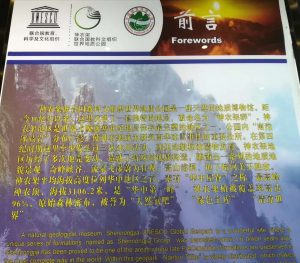 联合国教科文组织湖北神农架地质基地、王昭君和平使者纪念基地迎来了一批又一批的海内外嘉宾,这些美丽而又有历史意义的圣地,令人向往,成为传播中华文化策源地。
联合国教科文组织湖北神农架地质基地、王昭君和平使者纪念基地迎来了一批又一批的海内外嘉宾,这些美丽而又有历史意义的圣地,令人向往,成为传播中华文化策源地。
(图片 由欧洲华人华侨妇女联合总会 提供)
Why should Nordic countries build fast train?
By Xuefei Chen Axelsson
STOCKHOLM, June 27(Greenpost)– Nordic Ministers for Transport and Infrastructures have met to discuss financing the infrastructure especially crossing borders recently.
This is a gesture in the right track. I strongly recommend Nordic countries invest in fast train track and operation. Why?
When I came to Sweden in 2006, I thought Swedish train was quite good. But when I went back to China three years later, that was in 2009, China began to operate the fast train in Northeast China, the Concord Train was more than 250 kilometers per hour and I noticed that Swedish journalists were very positive about it too.
But soon people played down this idea to say that it was too expansive, Sweden doesn\t have that amount of people. This was also said in China. We don\t have a lot of money. We have a lot of people, but people were poorer. But after the fast train went into operation, they were full very soon. A lot of young couples took the fast train instead of driving a car or took the slow train.
Traveling time was substantially shortened. People are happy and people are proud. People take the chance to do business.
I think the fast train has three advantages:
First, it shortens the travelling time. It means there will be more travelling and more business chances and more meeting time. More meeting time will give more ideas. It is good for communication.
Second, Sweden has fewer people, but if the transporting time is halved, it means there will be more chance to do business.
Thirdly, people have to think in the long run, the same as you think of the tunnel bana in the 1940s. Man must be forward-looking.
If Nordic countries can make joint efforts to invest in fast train and build it from Oslo to Gothenburg and to Stockholm or from Karlstad and then build it to Malmo and to Copenhagen, then it will substantially shorten the travelling between countries. It will be a project benefiting the future of nordic countries.
Anyway, people are willing to pay a certain amount to improve the railway conditions, but if you pay a little more and build the fast train with Chinese speed between 250 -300 kilometers per hour, it will greatly promote Nordic market.
I encourage the Nordic ministers to talk more about it and take action as soon as possible. I am sure it will promote nordic economy substantially.
Nordic ministers discussed infrastructure financing
STOCKHOLM, June 26(Greenpost) — Infrastructure financing is undergoing a fundamental change, where relying on public budgetary resources alone is not a sustainable option. It is important to find new financial instruments and practices to enable efficient infrastructure development on a long-term basis, according to a statement from Finland.
Such new instruments were explored in the seminar “Rethinking Infrastructure Financing in the Nordics”.
The participants included the Finnish Minister of Transport and Communications Anne Berner, Norwegian Minister of Transport and Communications Ketil Solvik-Olsen, Icelandic Minister of Transport and Local Government and Nordic Cooperation Sigurdur Ingi Jóhannsson, and Director-General Ola Nordlander from the Swedish Ministry of Enterprise and Innovation.
“A well-functioning and up-to-date infrastructure is a prerequisite for competitiveness. Any delays or failures in the projects may cause substantial economic and social costs. It is most natural for us to work together to find the best practices,” says Minister of Transport and Communications of Finland Anne Berner.
“Infrastructures in the Nordic countries have a lot in common. Being able to share our ideas and solutions is important to maximize the possibilities and utility from future projects. Getting the most out of the funds we invest in infrastructure is the key to building a transport system that fits future needs,” says Ketil Solvik-Olsen, Minister of Transport and Communications of Norway.
“It is very important not only to discuss the investment itself but also how to finance operation and maintenance. I am looking forward to learn about the views and experiences of the other Nordic Countries. Communications and transport are merging and the future is interesting,” says Sigurdur Ingi Jóhannsson, Minister of Transport and Local Government and Nordic Cooperation, Iceland.
What next?Discussion about the financial instruments continues among the Nordic countries. There are significant benefits to be gained in infrastructure financing especially from transboundary investments and coordinated transport policies.
Editor Xuefei Chen Axelsson
今日头条:瑞典对墨西哥3:0进入八分之一决赛
北欧绿色邮报网报道(记者陈雪霏)–前天,一位墨西哥记者和一位瑞典退伍军人在谈论世界杯。瑞典人说,我们一定能赢墨西哥,我们必须赢。那口气十分自信,也好像是必须的。
确实,如果瑞典不能赢墨西哥,那就该退出了。因此,瑞典必须赢墨西哥。
今天的比赛确实出彩,笔者从国王大街一路走来,几乎每个饭店酒吧门口都挤满了人,都在看世界杯,都在看瑞典对墨西哥的比赛。
当走到家门口的莱温斯基酒吧的时候,发现那里已经水泄不通,整个步行街街口都挤满了人,都在看足球赛。
到家里,发现男主人也是眼睛盯着电脑屏幕在看世界杯。不一会儿,瑞典进球啦!尽管一个人,也呼声很高。再过一会儿又进一个,最终,瑞典对墨西哥3:0进入八分之一决赛。瑞典球迷欢呼雀跃!
前两天跟德国比赛输了两个球,非常沮丧,这回终于赢回了自己的自尊。
今日头条:山西省外事侨务办梁淑娟副主任一行访问瑞典
北欧绿色邮报网北欧中华网联合报道(瑞典斯德哥尔摩华助中心供稿 撰稿:丘潇卉;摄影:丘潇卉、单振华)6月26日由山西省人民政府外事侨务办公室副主任梁淑娟率领的代表团访问瑞典,代表团其他成员包括晋城市人民政府副市长冯志亮、太原市人民政府外事侨务办公室主任潘保欢、山西省人民政府外事侨务办公室处长曹海胜、晋城市旅游发展委员会科长赵姝丽和山西省人民政府外事侨务办公室副处长师晓华。
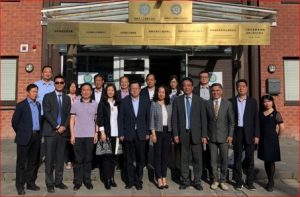
代表团一行6人走访了中国驻瑞典大使馆、斯德哥尔摩华助中心、北欧国际交流协会等华人华侨社团,受到使馆和侨领侨胞们的热烈欢迎。
6月26日下午16点,代表团来到斯德哥尔摩华助中心会所,与中国驻瑞典大使馆商务参赞韩晓东、经商处一等秘书郭颖、斯德哥尔摩大学商学院房晓辉教授、斯德哥尔摩华助中心主任王建荣、华助中心常务副主任/北欧国际交流协会会长季展有等华侨华人社团侨领和侨胞代表们进行座谈。
参加座谈会的还有使馆商经处臧红朝三秘、瑞典华人工商联合总会副会长/北欧国际交流协会监事会主席夏海龙、瑞典华人工商联合总会副会长/瑞典中国烹饪文化推广服务中心主任周岳酉、瑞典华人工商联合总会秘书长刘晨、华助中心办公室主任王建华、北欧国际交流协会秘书长丘潇卉、北欧国际交流协会副会长单振华和学者沈伟。
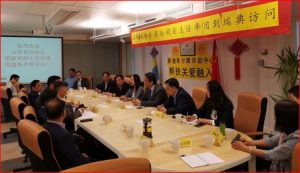
华助中心主任王建荣致欢迎辞,他代表侨胞和华助中心热烈欢迎山西省外侨办梁淑娟副主任一行/使馆商经处领导来到瑞典华助中心考察/指导工作。王建荣主任就国侨办授牌斯德哥尔摩“华助中心”、华助中心正式揭牌成立以及以后如何开展工作等相关事宜做了简单介绍,并讲述了华侨华人在北欧/瑞典的奋斗历史和现状、以及未来的发展。“华助中心”是在国侨办和大使馆大力支持下,由侨胞自办、立足华社、面向全侨、各方参与、依法运营、政府支持的民间非营利性为侨服务机构,旨在发挥“帮扶(敬老、扶弱、救急)、关爱(回馈社会、扶助友族)和融入(生活、就业、法律服务)”功能,为广大侨胞服务。
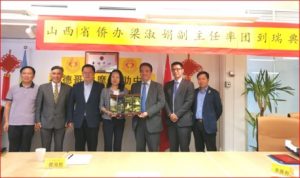
山西省外事侨务团走访斯德哥尔摩华助中心: 山西省外侨办副主任梁淑娟(中)、中国驻瑞典大使馆经济商务参赞处韩晓东参赞(左三)、斯德哥尔摩华助中心主任王建荣(右三)、华助中心常务副主任/北欧国际交流协会会长季展有(右二)、斯德哥尔摩大学商学院房晓辉教授(左二)、晋城市人民政府副市长冯志亮(左一)、瑞典华人工商联合总会副会长/北欧国际交流协会监事会主席夏海龙(右一)。
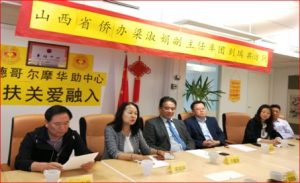
山西省外侨办梁淑娟副主任简要介绍了山西的基本情况,她说,山西是中华民族的主要发源地之一,拥有悠久的历史和绚烂的文化。山西有面食、晋剧、老陈醋等优秀传统文化,还有乔家大院、平遥古城、云冈石窟、华严寺等著名历史文化景点。山西资源丰富特别是煤矿产资源,梁副主任风趣地说,北京夜景里每三盏灯中就有一盏是山西煤点亮的。但山西也需要向瑞典这样的高科技国家学习、传统经济需要积极转型发展。这是山西外侨办首次来到瑞典访问考察,希望此行能了解瑞典和北欧的侨务情况、侨胞们更多了解山西的历史和文化、扩大山西影响、推进山西和瑞典在文化、教育、旅游等方面的进一步沟通和了解,也希望通过华侨华人帮助山西省扩大对外交流合作、寻求合作机遇。
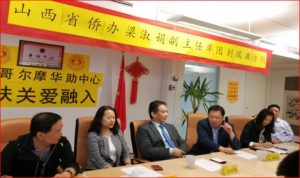 中国驻瑞典大使馆经济商务参赞处韩晓东参赞讲话。
中国驻瑞典大使馆经济商务参赞处韩晓东参赞讲话。
中国驻瑞典大使馆经济商务参赞处韩晓东参赞讲话。韩参赞代表使馆经济商务参赞处热烈欢迎山西外侨办代表团。他希望山西省与瑞典华侨华人社团以后多来往和互相了解、适当时候创造更多交流合作机会。瑞典创新能力在欧洲甚至世界名列前茅,希望华助中心和北欧国际交流协会团结当地侨社、发挥作用、务实合作、资源共享、推动国内与瑞典的双边经济文化科技发展。韩参赞认为国内与北欧建立友好合作关系的一个很好途径是建立友好城市关系,依托华侨华人社团和侨胞们优势和实力、搭建好经济文化科技友好合作的大平台。
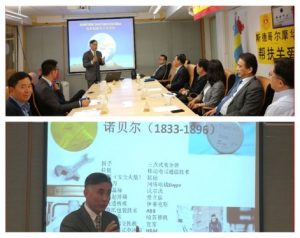 斯德哥尔摩大学商学院房晓辉教授做瑞典国情专题报告。
斯德哥尔摩大学商学院房晓辉教授做瑞典国情专题报告。
斯德哥尔摩大学商学院房晓辉教授做了关于瑞典国情的专题报告。房晓辉教授主要从事跨文化谈判与沟通、北欧文化及管理风格、中国文化及谈判风格、中国传统哲学和智能对未来社会政治等研究。房教授用图文并茂的PPT生动有趣地讲述了瑞典的国情、瑞典的科技创新技术、瑞典人的生活环境以及低调行事的关系,激发了山西外办代表团想要更多了解北欧的兴趣;对北欧他总结出来的北欧五怪,引来与会嘉宾们的阵阵笑声。
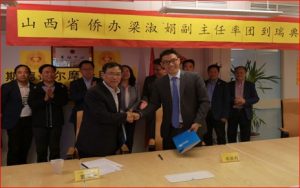 山西省外侨办曹海胜处长与华助中心常务副主任/北欧国际交流协会季展有会长签署委托协议
山西省外侨办曹海胜处长与华助中心常务副主任/北欧国际交流协会季展有会长签署委托协议
经山西省外侨办与斯德哥尔摩华助中心共同协商,达成了在瑞典斯德哥尔摩联系单位委托协议。委托方-山西省人民政府外事侨务办公室、受托方-瑞典斯德哥尔摩华助中心。山西省外侨办曹海胜处长与华助中心常务副主任/北欧国际交流协会季展有会长签署在瑞典斯德哥尔摩联系单位委托协议。委托协议的主要内容有:
山西省外侨办委托瑞典斯德哥尔摩华助中心为其在瑞典斯德哥尔摩的联系单位。希望斯德哥尔摩华助中心积极协助山西省外侨办与瑞典各界、各地区增进联系、开展交往,帮助山西扩大宣传,促进山西对外贸易,协助山西引进国外资金、人才,推动与受托方所在国在经贸、科技、文化、教育、旅游等方面的交流与合作;协助山西省和山西省辖市、县与受托方所在国有关地区建立友好省际(城市)关系,开展前期考察、牵线搭桥、签署协议、后续推进等工作;协助山西省外侨办做好与瑞典政府代表团、重点侨领团组赴山西访问的联络等工作;协助做好山西省公务团组赴瑞典访问的联络及接待等工作;联系瑞典华侨华人、重点人士为山西经济建设和社会发展献计献策,成为“一带一路”倡议的积极参与者。
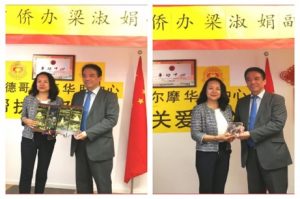 山西省侨办梁淑娟副主任与华助中心主任王建荣互相交换纪念品
山西省侨办梁淑娟副主任与华助中心主任王建荣互相交换纪念品
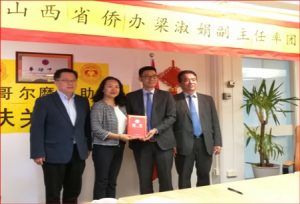
华助中心常务副主任/北欧国际交流协会会长季展有表示,一定不辜负山西外侨办和山西人民的期望,充分发挥好海外侨团和侨胞们的独特作用,借用海外侨商、侨企、侨资的人才和资源优势,借力侨资、侨智和侨力,拓展工作渠道,尽职尽责做好工作,以实际行动为山西经济建设和发展献计献策。
座谈会结束后全体到会人员转到市中心蒙古饭店宴请代表团和与会嘉宾。参加欢迎晚宴的还有瑞典Vinge律师事务所资深顾问顾群律师、瑞典华人工商联合总会顾问袁放生、瑞典上海联谊会副会长/秘书长谈继东、瑞典华人工商联合总会副会长黄炳旺、瑞典华人工商联合总会副秘书长郭晓璐。
座谈会由华助中心常务副主任/北欧国际交流协会会长季展有主持。
编辑 陈雪霏
Huai Jinpeng presents how to serve 91 million scientific workers in IVA
By Xuefei Chen Axelsson
STOCKHOLM, June 26(Greenpost)– Vice Executive President of China Association for Science and Technology, CAST, Professor Huai Jinping who is also academician of Chinese Academy of Sciences Wednesday made a presentation at the Royal Swedish Academy of Engineering Sciences conference center in Stockholm.
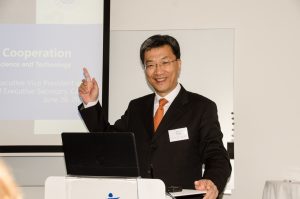
He briefed the audience about how his association serve 91 million scientific workers in China.
He said that his association has the mission to popularize scientific knowledge and gave advice to the central or local government on scientific development policies.
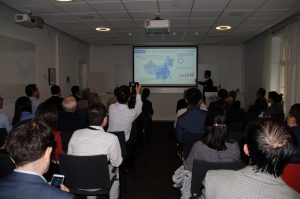 He said his association also shoulders the task to help poverty eradication by 2020. They send a lot of doctors to the poor areas to help cure diseases because usually a poor family was a result of someone in the family has serious disease. It was diseases that leads to poverty. Another way is to send scientific personnel to the countryside to teach farmers how to grow crops scientifically and use less pesticides to have a sustainable agriculture.
He said his association also shoulders the task to help poverty eradication by 2020. They send a lot of doctors to the poor areas to help cure diseases because usually a poor family was a result of someone in the family has serious disease. It was diseases that leads to poverty. Another way is to send scientific personnel to the countryside to teach farmers how to grow crops scientifically and use less pesticides to have a sustainable agriculture.
The third way for poverty eradication is to have partnership with industries.
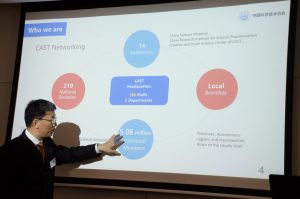 Huai also said that the purpose of this visit was to establish a good relation with the Swedish counterparts for future cooperation.
Huai also said that the purpose of this visit was to establish a good relation with the Swedish counterparts for future cooperation.
He said China also took a lot of measures to attract young people to be interested in science.
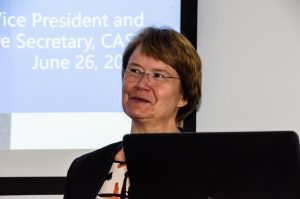 Professor Tuula Teeri, President of Royal Swedish Academy of Engineering Sciences, IVA said what Huai said in many ways similar to Swedish way in practice.
Professor Tuula Teeri, President of Royal Swedish Academy of Engineering Sciences, IVA said what Huai said in many ways similar to Swedish way in practice.
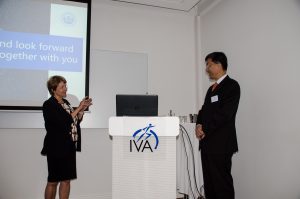 One experience from Sweden is to recruit young students from senior high school to be an intern in a science and engineering program for four months before they decide to go to universities. After these four months, those who have had these experiences usually choose to stay with science and engineering and can continue to work in this field. That is an effective way to attract young people who have the potential to be engaged in scientific research or engineering.
One experience from Sweden is to recruit young students from senior high school to be an intern in a science and engineering program for four months before they decide to go to universities. After these four months, those who have had these experiences usually choose to stay with science and engineering and can continue to work in this field. That is an effective way to attract young people who have the potential to be engaged in scientific research or engineering.
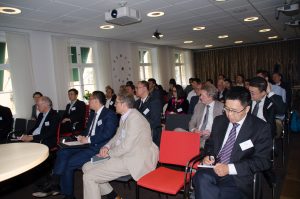
Zhang Biao, Charge Daffair from the Chinese Embassy, Dai Gang, Counsular of Sci-tech department at the Chinese Embassy, Cao Yihai, professor at the Karolinska Institutet and about more than 30 scientific workers attended the presentation and asked questions.
Tibetologist points out that Dalai Lama’s Middle Way Is Independence in Essence
By Xuefei Chen Axelsson
STOCKHOLM, June 26(Greenpost) – Chinese Tibetologist Hao Shiyuan has pointed out that Dalai Lama’s so-called `Middle Way` is in essence seeking independence in Tibet.
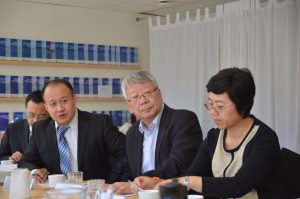
He made this clear at a seminar in Institute For Security and Development Policy on Tuesday when he led a delegation of Tibetologists from China to visit Sweden.
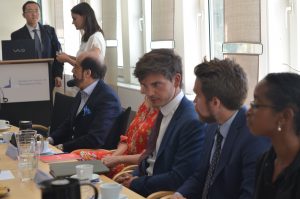
This was also an answer to the question asked by Oskar Gustafson, editor of ISDP on what problem China is really facing between the central government and the Tibet Autonomous Region or Dalai Lama.
Hao said the Chinese central government had kept contact with Dalai’s private representative for a long time. But after the March 14th incident took place in Lhasa in 2008 and the disturbance of the Beijing Olympic Torch, Dalai Lama issued a MOU. To summarize the content of this MOU, China held that the so-called Middle Way is an idea that took place in colonized countries after the Second World War.
“He also borrowed the idea of Hong Kong SAR to ask the central government to implement one country two systems idea. But this idea is against the Chinese Regional ethnic autonomy system. Tibet Autonomous Region has been a part of China. Due to this different ideas, China held that there is no way to continue the dialogue. Although Dalai Lama said he wanted to have dialogue, his stance left no room for further dialogue. The condition to have dialogue is to admit that Tibet is already a region of China. “ said Hao.
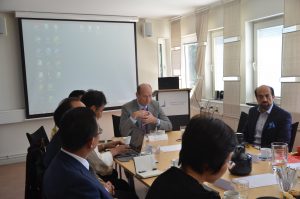
ISDP’s Mats . Engman presided over the seminar and he said Sweden likes to have dialogue with China on Tibetan issue even though Tibetan issue is not a focus for ISDP.
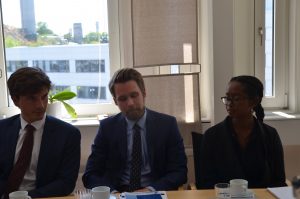
Erik Isaksson from ISDP explained that ISDP is an independent research institute which has two offices, one in Sweden and the other in the US. They mainly research on Asia, Central Asia and Caucus’ areas. Since their establishment in 2007, it has received many Chinese, North Korea and South Korean researchers. Currently they have two researchers from Chinese PLA Academy.
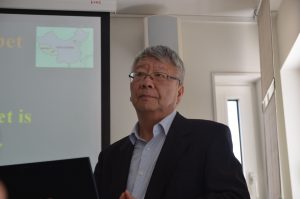
Hao Shiyuan gave a presentation about the History and Reality of Tibet. In his presentation, he gave a sharp contrast picture of the past and the present. He said before the liberation of Tibet, it was a political entity with a combination of politics and religion. Only 5 percent of the chiefs and religious leaders enjoyed the privilege while 95 percent of the total population were serfs and slaves who had no personal freedom at all. Even the British historian Goldstein described Tibet as a primitive medieval place. But Dalai Lama has described Tibet as a heaven in human society. Maybe it was true for his 5 percent of the population, but for majority of the Tibetans, it was suffering.
Hao said in 1951 when Chairman Mao met with Dalai Lama, the latter agreed to 17 provisions of peaceful revolution and reform. Maybe he understood that the Tibetan political system came an end, yet the reform will also end the system. According to the 17 provision agreed by both Dalai Lama and the central government, Dalai Lama position would remain the same. But after he attended a meeting in India in 1959, Dalai Lama changed his stance. After his flee to India, Tibet experience a democratic reform and the serfs and slaves became the master of themselves.
Hao said today Tibetan people enjoy very good education and a complete education system has been established. They also enjoyed the religious freedom. Currently 1700 temples function normally.
Hao said Dalai Lama think of how to get independent while central government is thinking of how to improve the living standards of the Tibetan people. In Tibet, tourism is one of the pillar industries. Pregnant women and baby death rate are very low and the rights level are up to the national average. By 2020, Tibet will also have to eradicate all the poverty as planned.
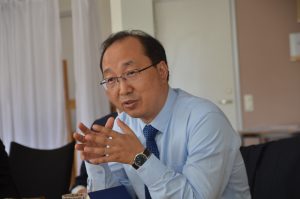
Zhaluo said in Tibet Autonomous Region, there are mainly the Gelu sect of Buddhists, but there are a few others too. Even some people believe in Christianity and Islam.
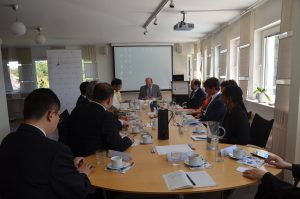
Mats. Engman asked “Tibet must fall into the debate of border issues between India and China since there is still disagreements on territory in that region. What is China’s approach to ensuring that all partners are brought to the table to discuss the potential security dilemmas on this issue?”
Hao said Sino-Indian border issue has great to do with the British legacy of irrelevant borderline, but has nothing to do with Tibet.
About Chinese map, Hao said before 1949, Chinese map was decided according to history. For example from Qin Dynasty to Song Dynasty, people often thought land outside the Great Wall did not belong to China. But when the Mongolians united China, Chinese map became larger and larger. Tibet Autonomous Region is a historic assets to China left from Chinese history. Only after 1949, China has entered into a modern country.
Gustafson asked: how can the PRC better engage with the Tibetan Government in Exile (or the Central Tibetan Administration) and what issues could they see arising if effective dialogue is not achieved?”
Hao said if Dalai Lama really changes the Tibetan system, it will definitely cause great contradiction. But according to Chinese regional ethnic autonomy system, Tibetans enjoy autonomous freedom. Meanwhile, the economic and social development in Tibet will resist the violence.
Hao said Dalai Lama announced in 2011 that he would retire and then established a so called exiled government. Chinese government does not recognize this organization, nor will contact it, or treated as representative of Dalai Lama.
Engman said“ISDP strives to anticipate where future conflicts might break out.
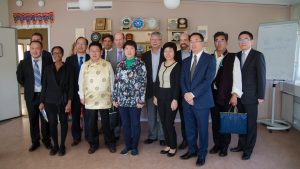
Zhang Biao, Charge D\affair at the Chinese Embassy, Chen Jiliang, Director of Political Department of Chinese Embassy, Cirenpingcuo, Gesangyixi,Xiaojie and Wang Lixin from the delegation and Fatoumato Diallo from ISDP attended the seminar. Journalists Jorge Navarro from Mexico, Ulrika Bergsten from Sweden and Xuefei Chen Axelsson from Green Post in Sweden were also present at the seminar.
今日头条:中国科协副主席怀进鹏在瑞典皇家工程院做报告
北欧绿色邮报网北欧中华网联合报道(记者陈雪霏)– 中国科学技术协会常务副主席、书记处第一书记怀进鹏26日在斯德哥尔摩IVA会议中心就如何为中国9100万科技工作者服务等问题用英文做了演讲。

会上,瑞典皇家工程学院院长图拉.特里(Teeri , Tuula)教授致欢迎词,对怀进鹏副主席一行的到来表示欢迎。

怀进鹏副主席说,中国科协前身是“中华全国自然科学专门学会联合会”和“中华全国科学技术普及协会”。这两个组织于1958年9月合并,并举行了中国科学技术协会第一次代表大会,正式成立了“中华人民共和国科学技术协会”。在1980年3月举行的第二次代表大会上,又将团体定名为“中国科学技术协会”。

中国科协是中国大陆科学技术工作最主要的民间团体之一,目前有160名工作人员,下辖210个全国性学会和32个省级科协,拥有506万名会员的科技团体。中国科协及其所属单位参加了240多个国际民间科技组织,有100多名中国科学家在这些组织的专业机构中任职,是“党和政府联系科学技术工作者的桥梁和纽带”。 中国科协目前主要开展学术交流和训练、学术成果鉴定、专业技术职务资格评审、表征优秀科技工作者以及普及科学知识等工作。
怀进鹏说中国科协肩负这扶贫攻坚的任务。中国计划在2020年全面脱贫,那么,科协要发挥应有的作用。科协将派出更多医生到贫困地区去,因为大病是导致贫困的一个重要原因,因此,如果能把贫困地区人的病治好,就非常有利于脱贫。第二是在农业科研领域进行科普,让农民能够实现科学种田,减少病虫害,减少农药残留,减少农药使用等等有很大空间可为,第三就是和企业合作,成为合作伙伴,共同完成脱贫攻坚的任务。
 他说,过去中国讲“学好数理化,走遍全天下”。如今,也有很多人不愿意做艰苦的研究工作,因此,科协也是在想办法提高青少年对科研的兴趣。例如,为他们找到更好的工作,为他们建立更好的交流平台。尤其是中国的国家政策是提倡双创,大众创业,万众创新,对年轻人的创业有很大支持。
他说,过去中国讲“学好数理化,走遍全天下”。如今,也有很多人不愿意做艰苦的研究工作,因此,科协也是在想办法提高青少年对科研的兴趣。例如,为他们找到更好的工作,为他们建立更好的交流平台。尤其是中国的国家政策是提倡双创,大众创业,万众创新,对年轻人的创业有很大支持。
与此同时,科协也在拓展国际合作,此次来瑞典访问的主要目的就是要和瑞典工程院及有关部门进行深入合作,搭建平台,为双方合作创造更好的条件。
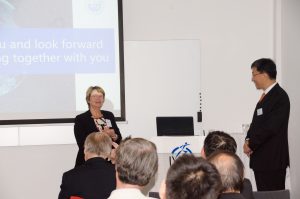 特里院长说,听了怀院士的讲座感觉中国科协的很多做法和瑞典的做法是很相似的。只是,中国有那么多科技工作者,比瑞典整个国家的人都多,着实不易。瑞典在培养青少年对科研的兴趣方面也是花了不少心思。有一个项目就是在高中阶段有四个月的实习,都是理工科的。实践证明,报名参加这个实习的人大多都报考了理工科大学,而且入学以后也没有辍学的,最后都坚持了下来,而且大部分也在这个领域工作。因此,早期实习,让学生们了解自己的兴趣也是一个不错的方法。
特里院长说,听了怀院士的讲座感觉中国科协的很多做法和瑞典的做法是很相似的。只是,中国有那么多科技工作者,比瑞典整个国家的人都多,着实不易。瑞典在培养青少年对科研的兴趣方面也是花了不少心思。有一个项目就是在高中阶段有四个月的实习,都是理工科的。实践证明,报名参加这个实习的人大多都报考了理工科大学,而且入学以后也没有辍学的,最后都坚持了下来,而且大部分也在这个领域工作。因此,早期实习,让学生们了解自己的兴趣也是一个不错的方法。
 出席讲座的有中国驻瑞典大使馆代办张彪,使馆科技参赞戴钢,瑞典皇家工学院的白瑞楠,卡罗林斯卡医学院教授曹义海等40多位科技工作者出席了讲座并进行了提问交流。
出席讲座的有中国驻瑞典大使馆代办张彪,使馆科技参赞戴钢,瑞典皇家工学院的白瑞楠,卡罗林斯卡医学院教授曹义海等40多位科技工作者出席了讲座并进行了提问交流。
今日头条:藏学家指出:达赖喇嘛的所谓“中间道路”实质还是“藏独”
北欧绿色邮报网报道(记者陈雪霏)– 中国藏学家代表团6月25日在斯德哥尔摩访问瑞典安全与发展政策研究所时指出,达赖喇嘛的所谓“中间道路”实质还是“独立理念”。
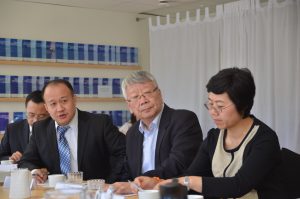
中国社科院学部委员郝时远研究员指出,中国中央政府与达赖的私人代表一直保持接触。直到2008年奥运会前夕的3.14暴力事件发生,包括奥运圣火受到严重干扰。随后,达赖提出了一份备忘录。备忘录的内容概括为“中间道路”。中国认为所谓“中间道路”是二战后脱离殖民统治的理念,也是借鉴“港人治港,高度自治”的理念。但是,这样的理念违背了中国的《民族区域自治法》,因为西藏已经是中国的一部分。因为这个分歧,就没有办法对话了。尽管达赖每到一个地方都说他要对话,但是根据他的立场,就没有对话的余地了。对话的前提是要承认西藏是中国的一部分。
 瑞典安全与发展政策研究所的埃里克.伊萨克松介绍了其研究所的情况。该研究所有两个研究领域,一个是亚洲项目,一个是美国项目,是独立的研究机构,有17人。经常接待中国,朝鲜和韩国的访问学者和研究员。
瑞典安全与发展政策研究所的埃里克.伊萨克松介绍了其研究所的情况。该研究所有两个研究领域,一个是亚洲项目,一个是美国项目,是独立的研究机构,有17人。经常接待中国,朝鲜和韩国的访问学者和研究员。
 中国社科院学部委员郝时远说,他们这次访问的主要目的是要推动科技和人文交流。虽然说ISDP没有藏学项目,但是,因为探险家斯文.赫定早期在西藏地区探险的文献资料凸显瑞典对西藏的研究很早。中国认为现代接触需要进一步加强。这次来,他主要想介绍一下西藏的历史与现实。
中国社科院学部委员郝时远说,他们这次访问的主要目的是要推动科技和人文交流。虽然说ISDP没有藏学项目,但是,因为探险家斯文.赫定早期在西藏地区探险的文献资料凸显瑞典对西藏的研究很早。中国认为现代接触需要进一步加强。这次来,他主要想介绍一下西藏的历史与现实。
郝时远研究员说,达赖喇嘛等人由于长期流亡国外,他们对西藏的描述是西藏就是“人间天堂”。但这要看是谁的天堂。过去,西藏的三大领主,只占全区人口的5%,他们是统治阶级,因此,拥有奴隶和农奴。这在英国历史学家Goldstein的著作中可以看出他们对西藏的判断,那就是西藏相当于欧洲中世纪的一个落后国家。
他介绍说,1950年,十四世达赖喇嘛同意改革,是他认识到了西藏政治制度走到了尽头,但是,改革也会结束政教合一的制度。本来中央政府同意维持达赖的统治,但是1959年他出走以后,西藏立即进行了改革。农奴翻身得解放。
59年后的今天,西藏人民的教育水平得到了大幅度提高,建立了完整的教育体系。宗教信仰自由。目前有1700多所寺庙。都在发挥正常作用。
郝时远说,达赖想的是如何独立,而中央政府想的是怎样建立现代社会。让人民收入水平不断提高。在西藏,旅游业是地方经济的重要支柱。人权得到很好的保障。例如妇女儿童的权利,孕妇和婴儿死亡率均达到全国平均水平。中国宣布进入中国特色社会主义新时代,这对于西藏来讲,意味着,要力争让全区300万人口中的59万贫困人口在2020年全部脱贫。
 针对记者问西藏有多少教派的问题,扎罗说,在西藏的300万人口中,大部分人信仰格鲁派藏传佛教,也就是黄帽派。其他的如袈裟派都是很小的派别。藏民主要是敬仰山神,水神,这在佛教传入以后,依然有明显特征。不过现在在西藏也开始多元化,也有人开始信天主教和伊斯兰教的。
针对记者问西藏有多少教派的问题,扎罗说,在西藏的300万人口中,大部分人信仰格鲁派藏传佛教,也就是黄帽派。其他的如袈裟派都是很小的派别。藏民主要是敬仰山神,水神,这在佛教传入以后,依然有明显特征。不过现在在西藏也开始多元化,也有人开始信天主教和伊斯兰教的。
在双方座谈环节,古斯塔夫松问中央和西藏自治区到底面临什么问题和挑战。郝时远研究员回答说,问题就是达赖说的话和他做的不一致。
 马兹.恩格曼主持会议。他问中印边界问题是否和西藏问题有关?中国认为西藏是中国的一部分是否经过国际法庭认证?郝时远说,中印1962年的冲突起源于英国划出的麦克马洪线。
马兹.恩格曼主持会议。他问中印边界问题是否和西藏问题有关?中国认为西藏是中国的一部分是否经过国际法庭认证?郝时远说,中印1962年的冲突起源于英国划出的麦克马洪线。
关于版图问题,郝时远说,中国的疆土在1949年之前都是根据历史划分的。只有到1949年之后中国才进入现代国家,中国目前与周边国家的边界都已经划定。只有中印之间还存在着10多万平方公里的土地问题。但这个问题与西藏问题无关。这种问题可能不会一下子解决,但我们相信通过一带一路创意,双方可以解决这个问题。
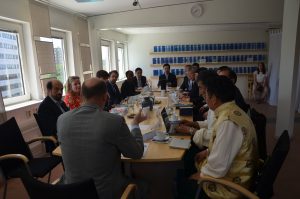
关于墨西哥记者问到是否中国的版图确定与中国的革命史有关,郝时远说,中国的版图是中国历史演化而来的。例如,早期的历史认为长城以外都是关外不属于中国的。但是,13世纪北方游牧民族统一了中国,于是,中国的版图越来越大,西藏地区的主权归属是历史留给中国的资产。1949年以后,中国建立了社会主义国家政权,当时,西藏制度需要变革,1951年中央与达赖签署了和平协议。
 古斯塔夫松问,如果没有有效的对话机制,中国政府将怎样更好地和西藏流亡政府接触,会出现什么样的问题?郝时远说,如果达赖喇嘛对历史制度进行巨变性改动一定会引起矛盾。但是,中国的《民族区域自治法》规定了西藏的地位和享有的自由。同时,加强经济和社会发展也可以形成抵御暴力的能力。
古斯塔夫松问,如果没有有效的对话机制,中国政府将怎样更好地和西藏流亡政府接触,会出现什么样的问题?郝时远说,如果达赖喇嘛对历史制度进行巨变性改动一定会引起矛盾。但是,中国的《民族区域自治法》规定了西藏的地位和享有的自由。同时,加强经济和社会发展也可以形成抵御暴力的能力。
对于2011年达赖宣布的所谓退休,成立了“流亡政府”。中国中央政府对这个架构或政治组织的态度是不承认,不接触,也不认为它是达赖的代表。
恩格曼说,历史学家更注重历史,ISDP倾向于对未来的预测。将来如果有更多时间,可以好好学习历史,以便加强对未来的预测。墨西哥记者评论说,历史是现实的一面镜子。不了解历史,就很难了解现实,因此,对历史的研究还是非常重要的。如果单纯靠现实来预测现实是远远不够的。
时光飞逝,两个小时的时间很快过去,与会者希望以后能有更多时间进行更多的对话。
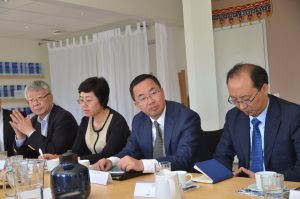 出席座谈会的还有中国驻瑞典大使馆代办张彪,政治处主任陈季良,政治处李珂,代表团成员还有Cirenpingcuo(次仁平措),Gesangyixi(格桑益西),扎罗,肖杰,王立新等,ISDP除了恩格曼,伊萨克松和古斯塔夫松外还有Fatoumata Diallo.
出席座谈会的还有中国驻瑞典大使馆代办张彪,政治处主任陈季良,政治处李珂,代表团成员还有Cirenpingcuo(次仁平措),Gesangyixi(格桑益西),扎罗,肖杰,王立新等,ISDP除了恩格曼,伊萨克松和古斯塔夫松外还有Fatoumata Diallo.
 出席座谈会的记者有瑞典记者乌尔利卡.贝尔特斯坦,墨西哥记者侯海.那瓦鲁和北欧绿色邮报网记者陈雪霏。
出席座谈会的记者有瑞典记者乌尔利卡.贝尔特斯坦,墨西哥记者侯海.那瓦鲁和北欧绿色邮报网记者陈雪霏。
图文/陈雪霏
Top news: Chinese Dongfeng Race Team win the Volvo Ocean Race 2017-18
By Xuefei Chen Axelsson
STOCKHOLM, June 25(Greenpost, Chineseonline)– Chinese Dongfeng Race Team won the Volvo Ocean Race 2017-18 in the closest pass in race history.
Skipper Charles Caudrelier led his team to victory on the final leg of the race, a 970-mile sprint from Gothenburg, Sweden to The Hague.
Incredibly, it marked the first leg win for the team — it couldn’t have come at a better time.
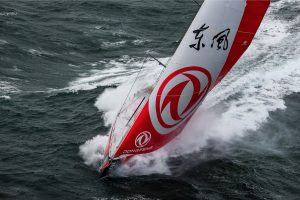 Three teams started Leg 11 of the race on Thursday in a dead heat on the overall leaderboard. The finishing order between MAPFRE, Team Brunel and Dongfeng Race Team at The Hague would determine their place on the overall race podium.
Three teams started Leg 11 of the race on Thursday in a dead heat on the overall leaderboard. The finishing order between MAPFRE, Team Brunel and Dongfeng Race Team at The Hague would determine their place on the overall race podium.
Each of those three teams led at various points on the leg and had their opportunities to grab the prize.
But it was Caudrelier and his crew who made a bold call on Saturday evening to take a coastal route to the finish, which squeezed them tight against the shoreline and separated from the other leaders by a series of Exclusion Zones.
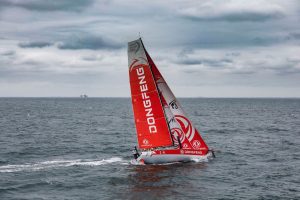 “We were not in such a good position, but we trusted our choice and we pushed,” Caudrelier said. “The others didn’t follow us, but we believed and we won…”
“We were not in such a good position, but we trusted our choice and we pushed,” Caudrelier said. “The others didn’t follow us, but we believed and we won…”
The decision hurt the team in the short term as they tumbled down the leaderboard. But by Sunday morning, with less than 100 miles left to race, weather routing projections had the top boats finishing within minutes of each other. None had been able to break away overnight, despite the significant splits on the race course.
“We knew that we would fall behind initially and that if it came good it would only be at the end. The last position report (1300 UTC on Sunday) we were 27-miles from the finish and they were 20-miles and we thought it was over. But then I did a small weather routing and it showed we could end up one-mile ahead so I woke everyone up and said, ‘let’s push!’”
As the teams finally converged again on Sunday afternoon, just a few miles from the finish, it was Dongfeng Race Team, flying down the coast from the north sliding in front of the offshore group, to earn their first leg win, propelling Caudrelier’s team to overall victory.
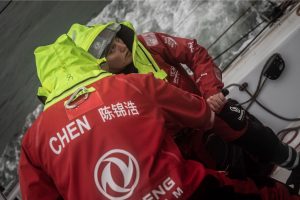 “We always trusted each other. Nobody thought we were going to win this last leg, but I had a good feeling,” an emotional Caudrelier said, after thanking his supporters and team. “I said ‘we can’t lose, we can’t lose, we can’t lose’… and we won!”
“We always trusted each other. Nobody thought we were going to win this last leg, but I had a good feeling,” an emotional Caudrelier said, after thanking his supporters and team. “I said ‘we can’t lose, we can’t lose, we can’t lose’… and we won!”

The overall results make this the closest finish in the 45-year history of the race and marks the first win for a Chinese-flagged team. It also means Carolijn Brouwer and Marie Riou were on board as the first women sailors to win the Volvo Ocean Race.
Xabi Fernández’s MAPFRE was third on the leg, which put the team into second overall.

“It has been tough,” Fernández admitted. “We sailed very well the whole way around the world and on this leg as well, so naturally we’re a bit disappointed. We were very, very close this time, but it was not quite enough. So we have to say congratulations to Dongfeng who sailed a little bit better than us.”
Team Brunel skipper Bouwe Bekking would have liked nothing more than to win the race for the first time in eight tries with a home finish in The Netherlands. But it wasn’t to be. His fourth place leg finish left the team in third place overall.

“Third place, still on the podium, I think we can be pretty proud of that as a team,” he said. “We thought we had made the right choice (to go further offshore) and we expected a windshift. It came 90-minutes too late and that was the race. But that’s yacht racing. And of course we have to congratulate Dongfeng and MAPFRE for their results.”
Second place on the final leg into The Hague was Dutch skipper Simeon Tienpont and his team AkzoNobel, who had previously secured fourth place on the overall leaderboard.
“It’s incredible to finish on the podium in our hometown,” Tienpont said. “We would have loved to have been fighting into The Hague for the final podium but to have set the 24-hour speed record and to get six podium finishes in the race is a testament to the job everyone on our team – on the boat and on shore – have done.”
Vestas 11th Hour Racing had already been locked into fifth place on the scoreboard and after a promising start to Leg 11, had a disappointing seventh place finish on the leg.
“We have a great group of folks on this team,” skipper Charlie Enright said. “We’ve been through a lot and I’m not sure any other group could have dealt with the challenges we have faced the way we did. It’s something special and we’re going to continue to work together moving forward. This was a tough way to go out certainly, but we have one more opportunity with the In-Port Race this weekend.”
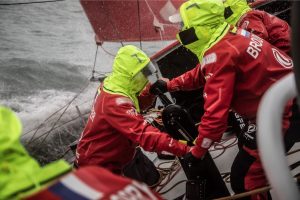 That In-Port Race, scheduled for Saturday afternoon, will determine the sixth and seventh place positions in this edition of the Volvo Ocean Race. Both SHK/Scallywag and Turn the Tide on Plastic finished the Volvo Ocean Race on equal points.
That In-Port Race, scheduled for Saturday afternoon, will determine the sixth and seventh place positions in this edition of the Volvo Ocean Race. Both SHK/Scallywag and Turn the Tide on Plastic finished the Volvo Ocean Race on equal points.
The tie-break mechanism is the In-Port Race Series, where David Witt’s Scallywag team currently holds the lead. But Dee Caffari’s Turn the Tide on Plastic is just three points behind and a strong finish on Saturday could lift them off the bottom of the leaderboard.

“We can’t help but smile today. We’ve done it,” said Caffari. “This leg was like the longest In-Port Race ever. A lot of corners to go around, and we gave it 100 per cent and left nothing in the tank.”
For David Witt, the finish was bittersweet the loss of John Fisher overboard in the Southern Ocean top of mind.
“I have very mixed emotions right now,” Witt said dockside immediately after finishing. “I’m incredibly proud of our team both on and off the water. We’re very tight and we have gone through a lot… But I’m also sad of course. I didn’t finish it with my best mate (John Fisher) who we started with. So very mixed emotions, but I’m glad we finished it.”
The teams will celebrate their accomplishments and take well-earned rest on Monday. The rest of the week will see activities in The Hague building towards the final In-Port Race and Awards Night on June 30.
Volvo Ocean Race Leg 11 Final Leaderboard — Saturday 23 June
1. Dongfeng Race Team – 3 days, 3 hours, 22 minutes, 32 seconds
2. team AkzoNobel – 3 days, 3 hours, 38 minutes, 31 seconds
3. MAPFRE – 3 days, 3 hours, 39 minutes, 25 seconds
4. Team Brunel – 3 days, 3 hours, 45 minutes, 52 seconds
5. Turn the Tide on Plastic – 3 days, 3 hours, 56 minutes, 56 seconds
6. SHK / Scallywag – 3 days, 4 hours, 01 minutes, 32 seconds
7. Vestas 11th Hour Racing – 3 days, 4 hours, 05 minutes, 36 seconds
Volvo Ocean Race Overall Points Leaderboard after Leg 11
1. Dongfeng Race Team – 73 points
2. MAPFRE – 70 points
3. Team Brunel – 69 points
4. team AkzoNobel – 59 points
5. Vestas 11th Hour Racing – 39 points
6. SHK / Scallywag – 32 points *
7. Turn the Tide on Plastic – 32 points *
* Should there be a tie on the overall race leaderboard at the end of the offshore legs, the In-Port Race Series standings will be used to break the tie.
Source: www.volvooceanrace.com
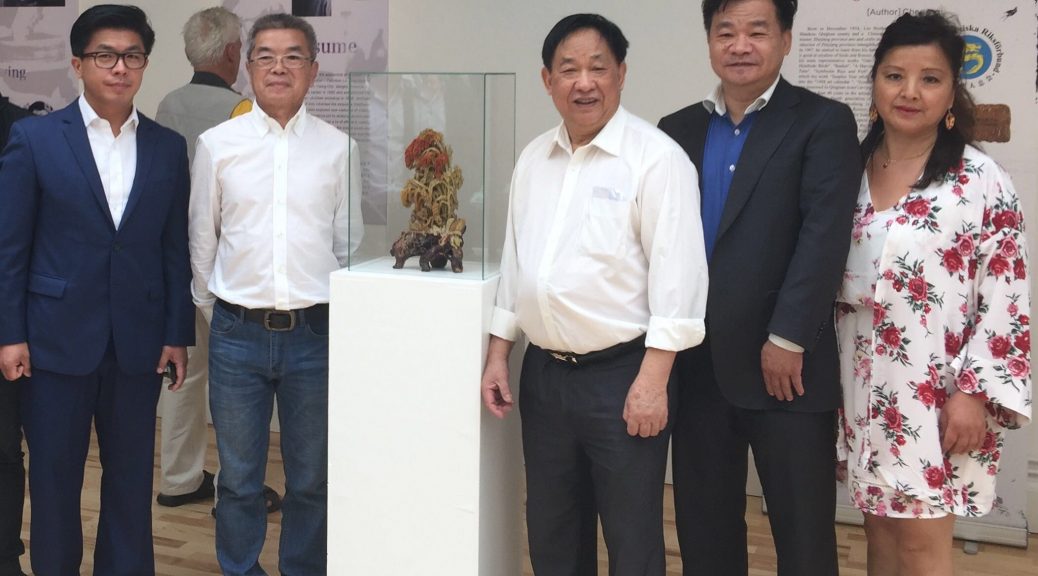

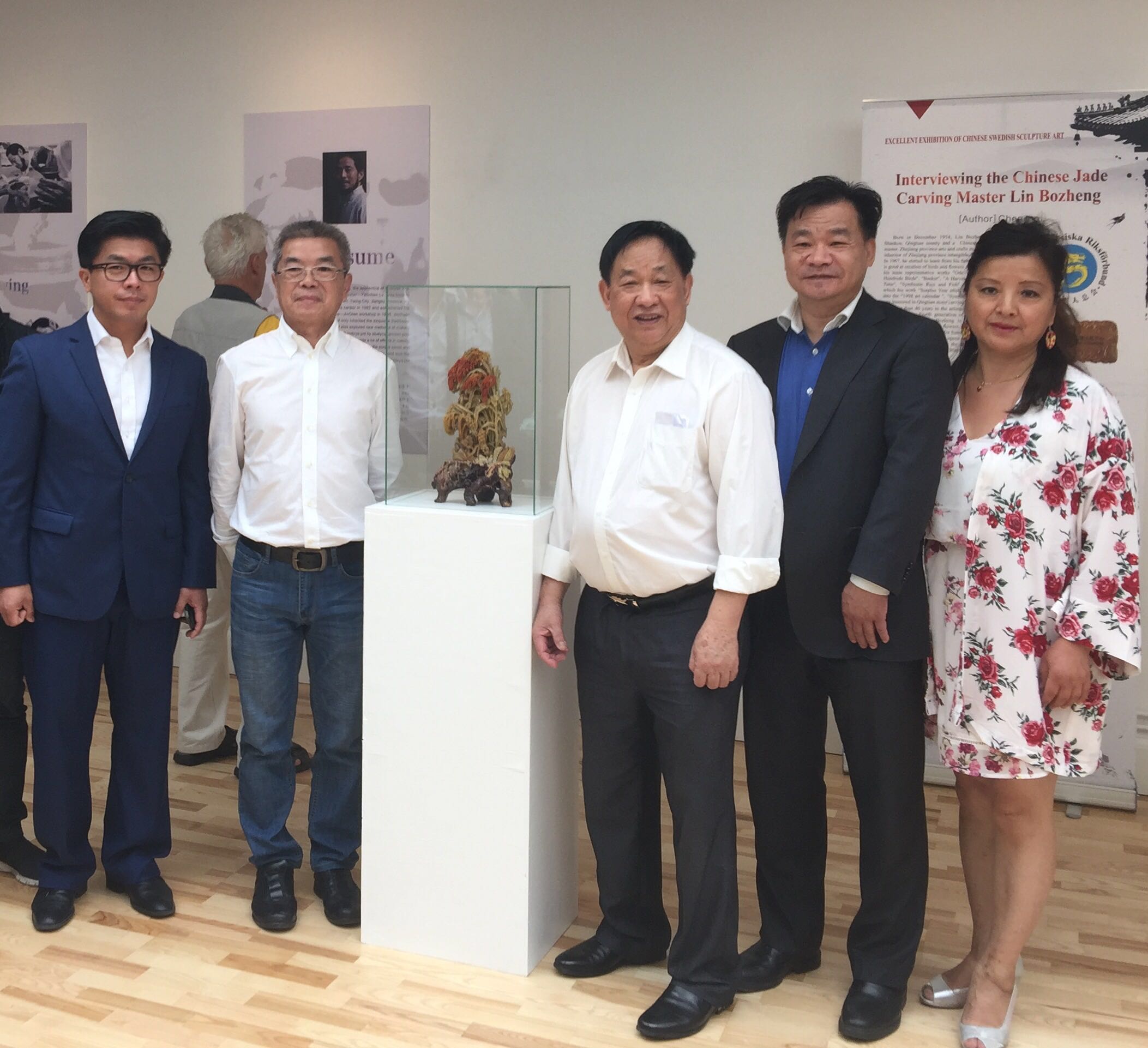

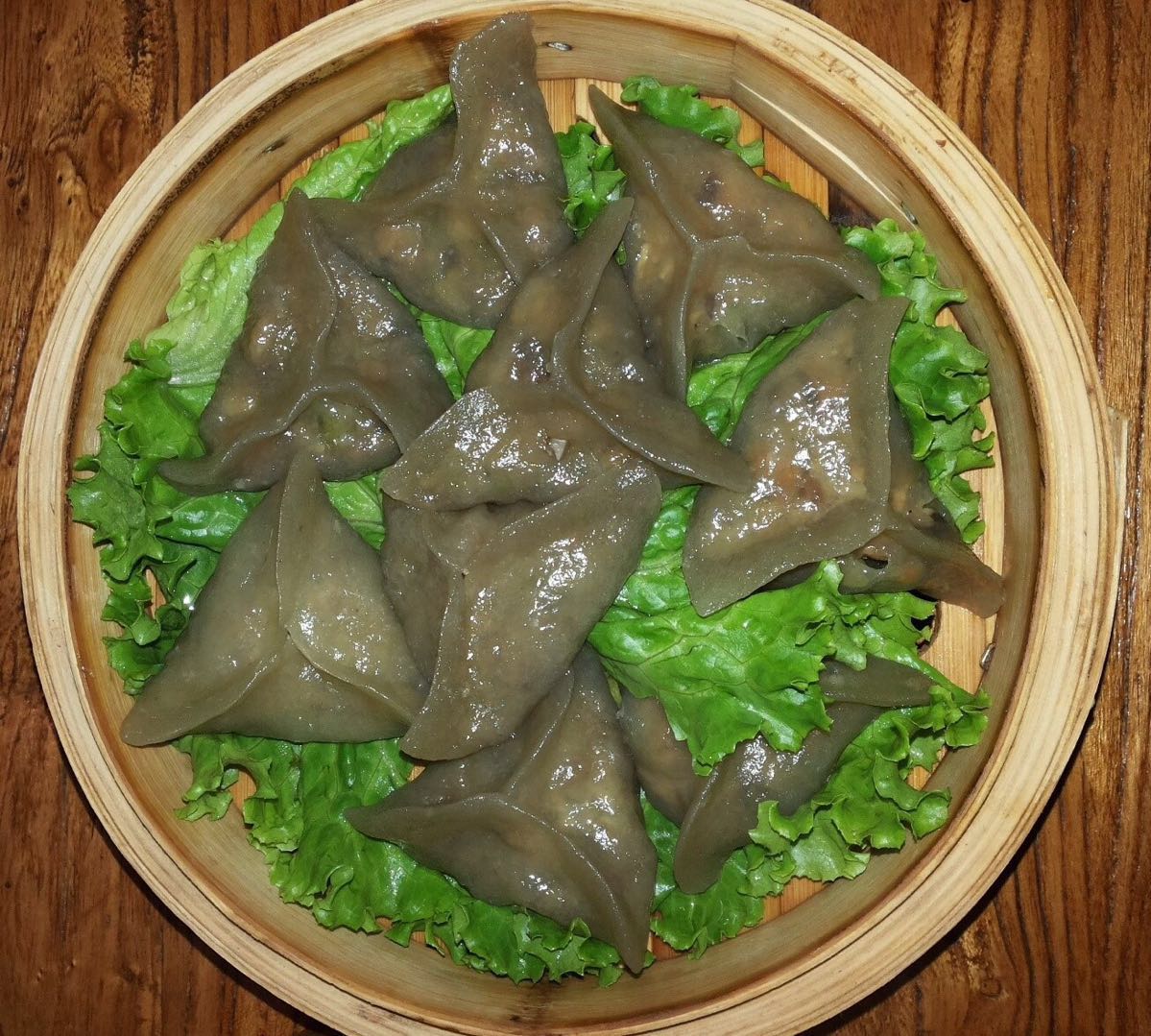











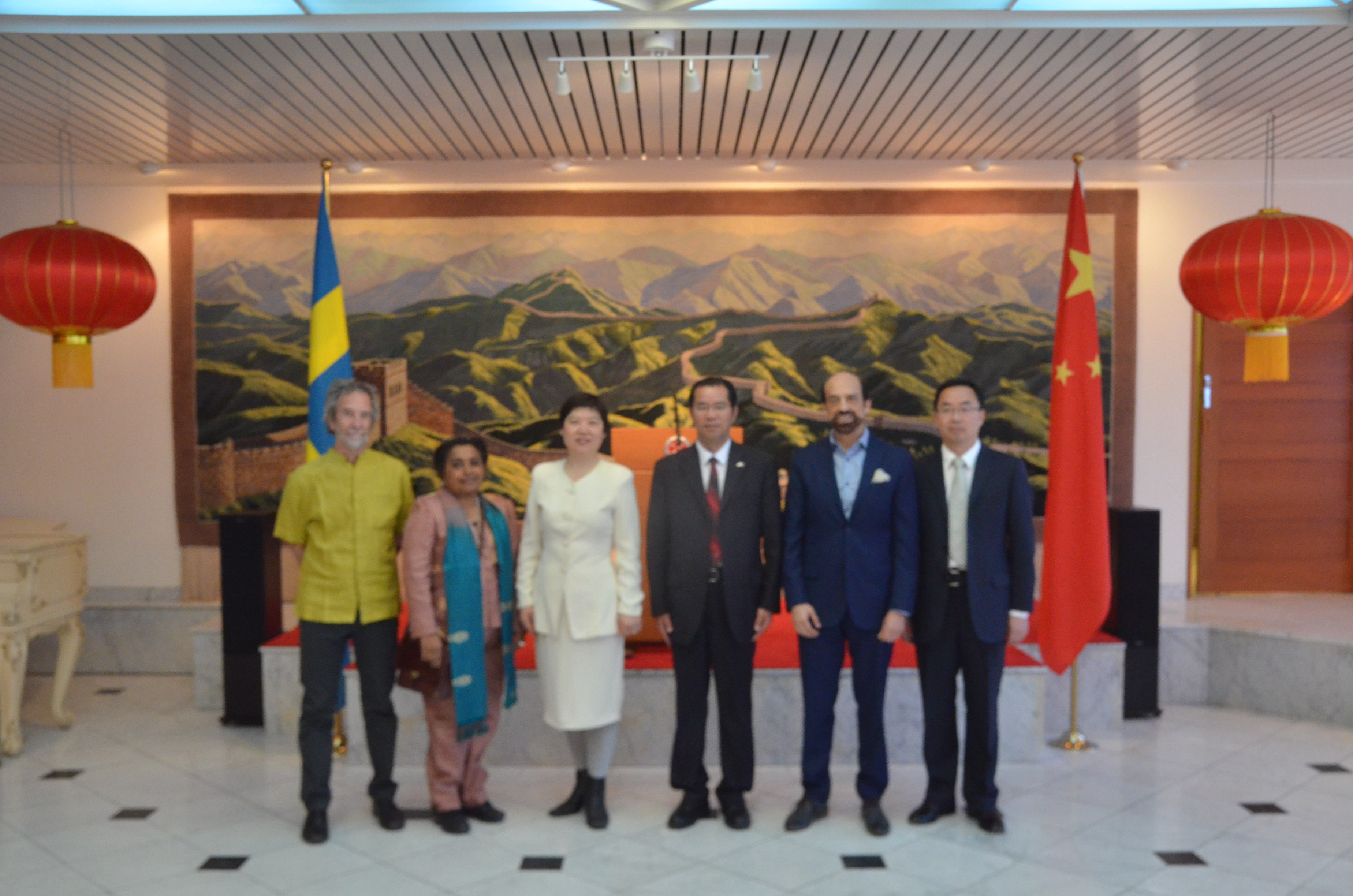

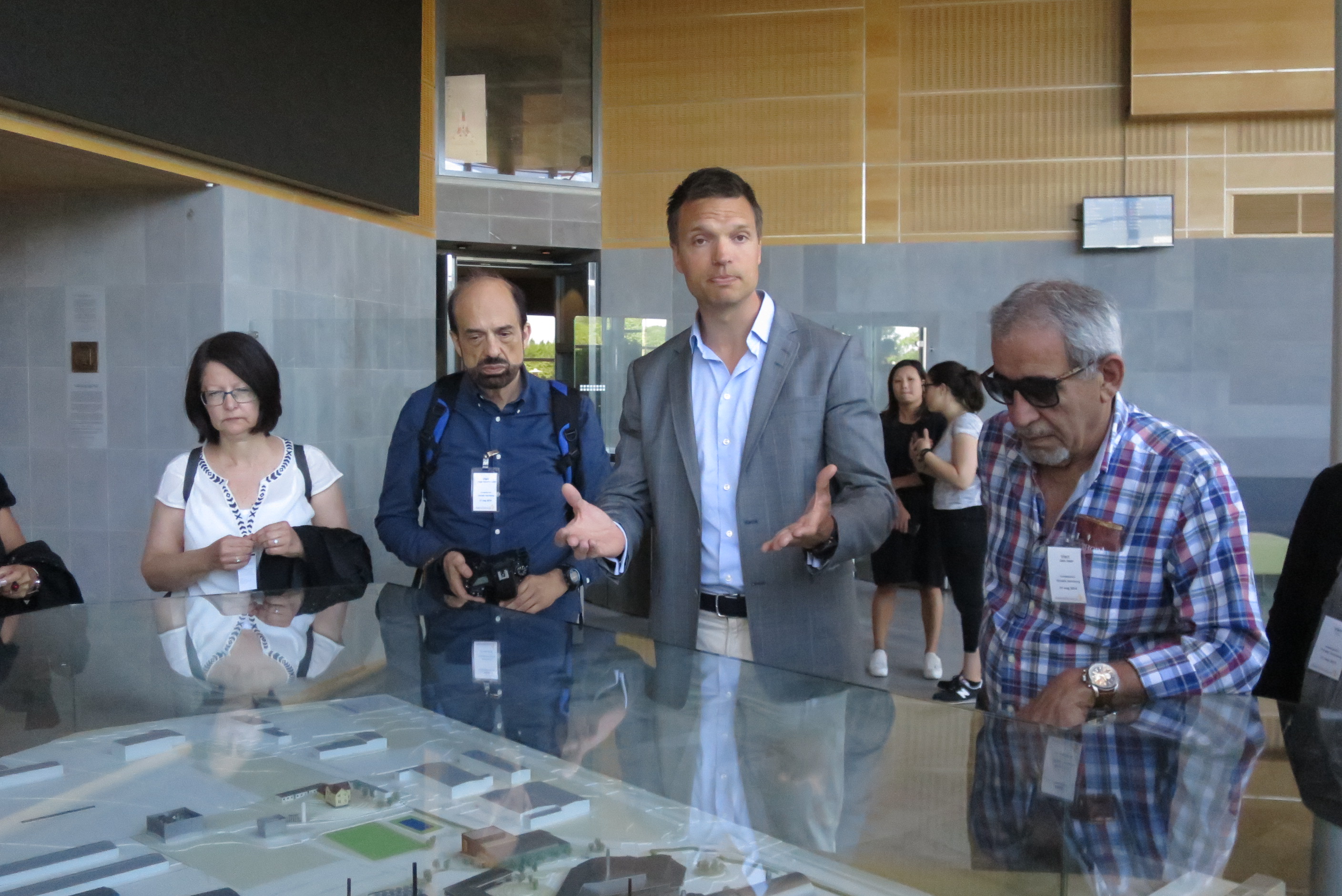
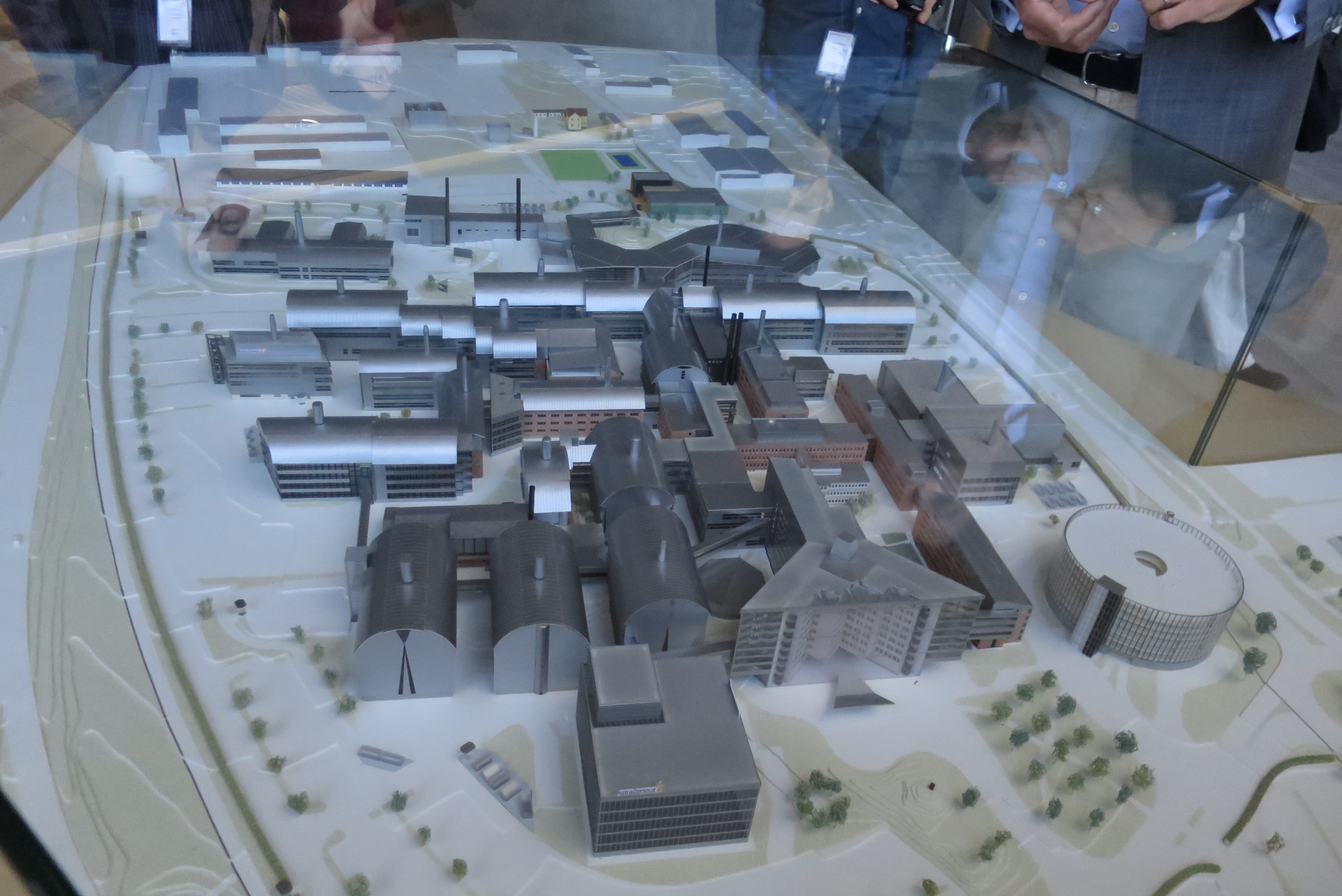
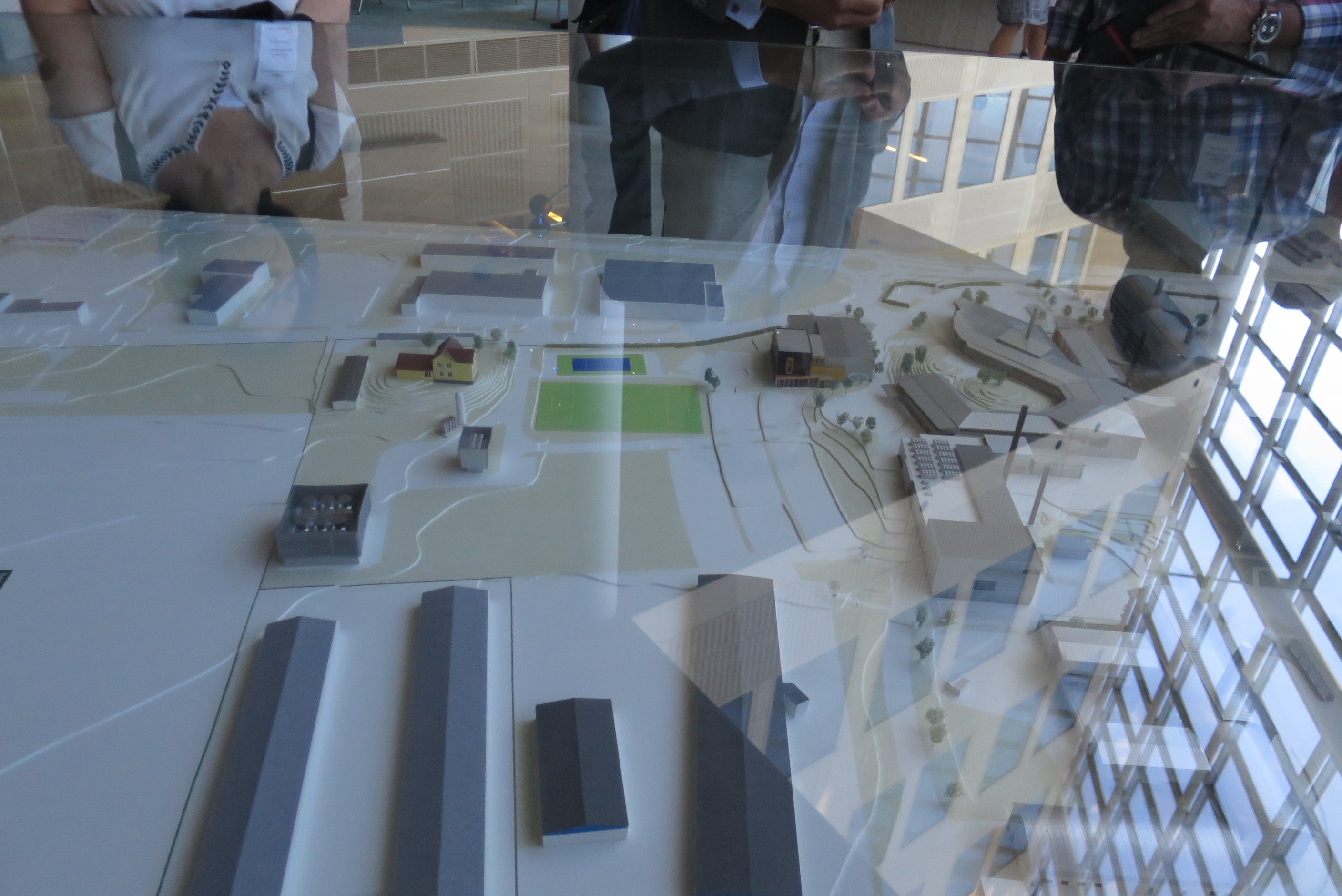

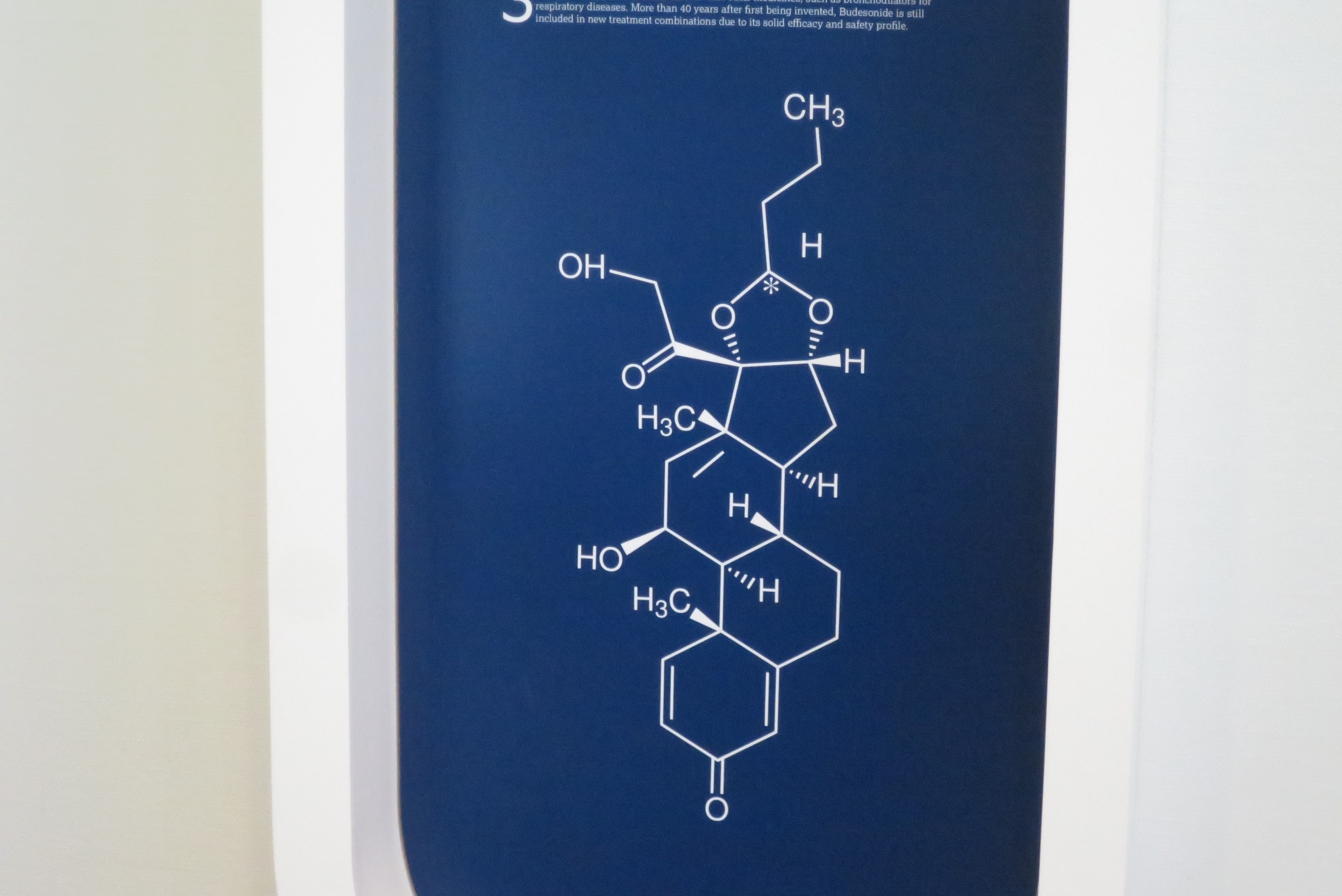
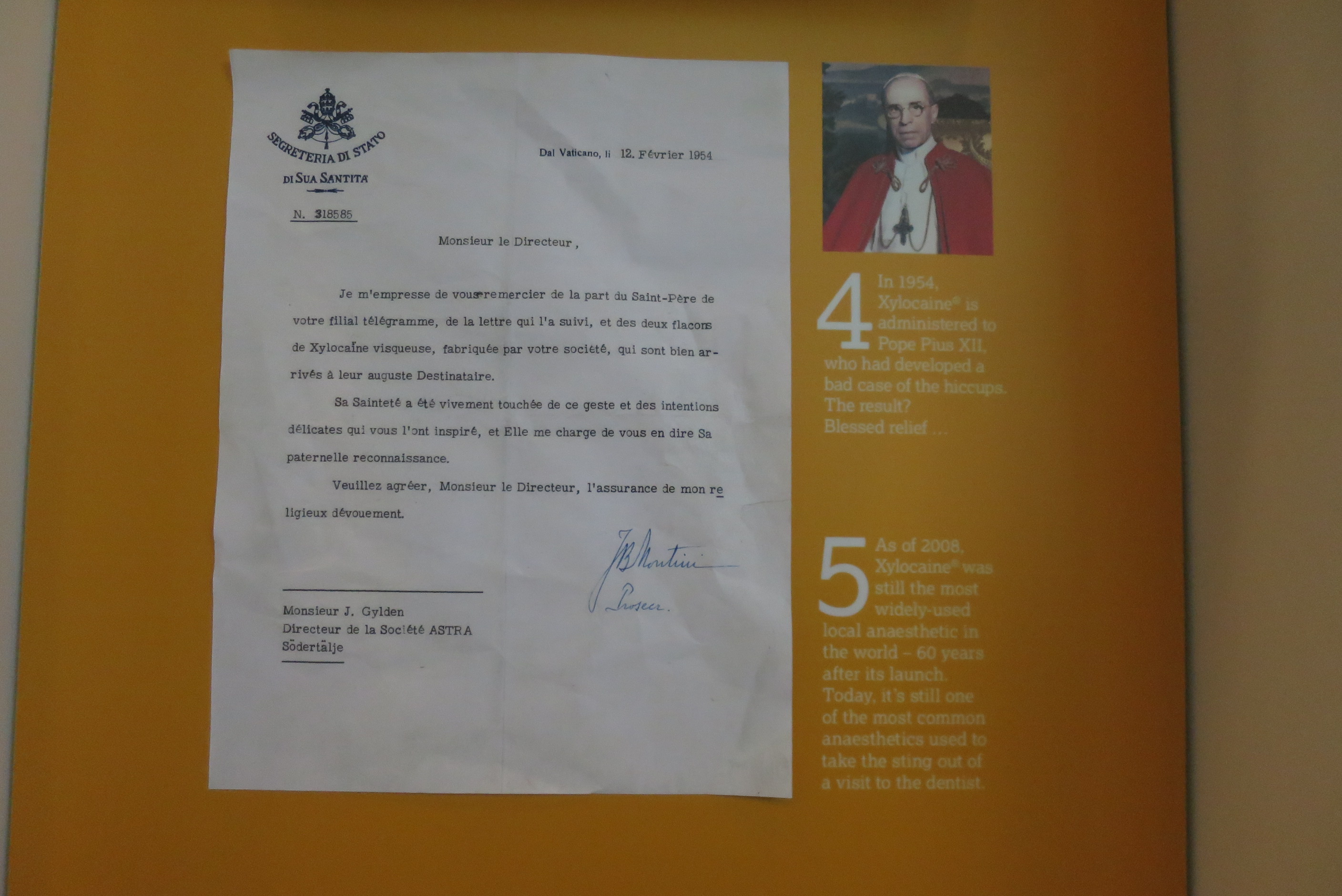
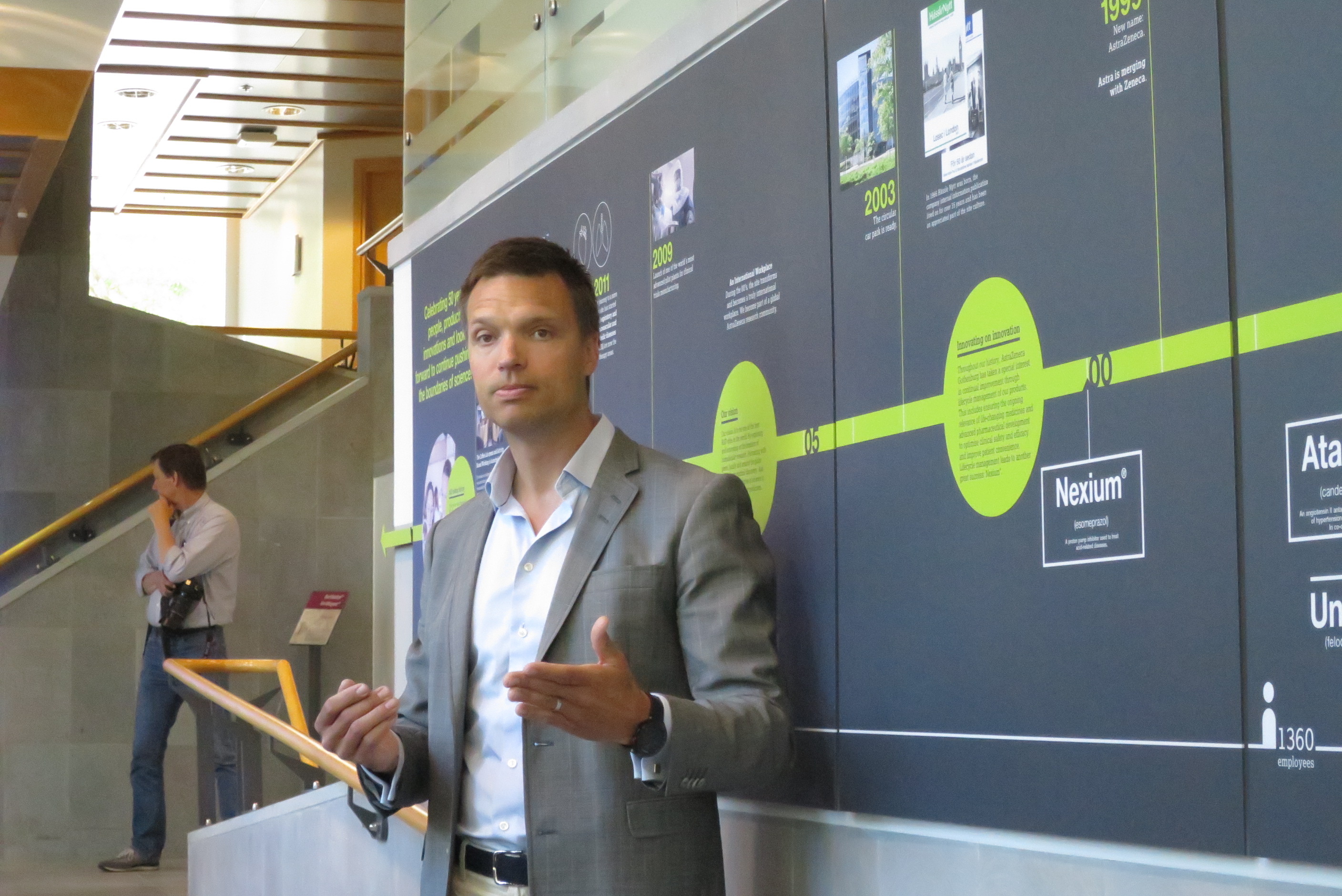
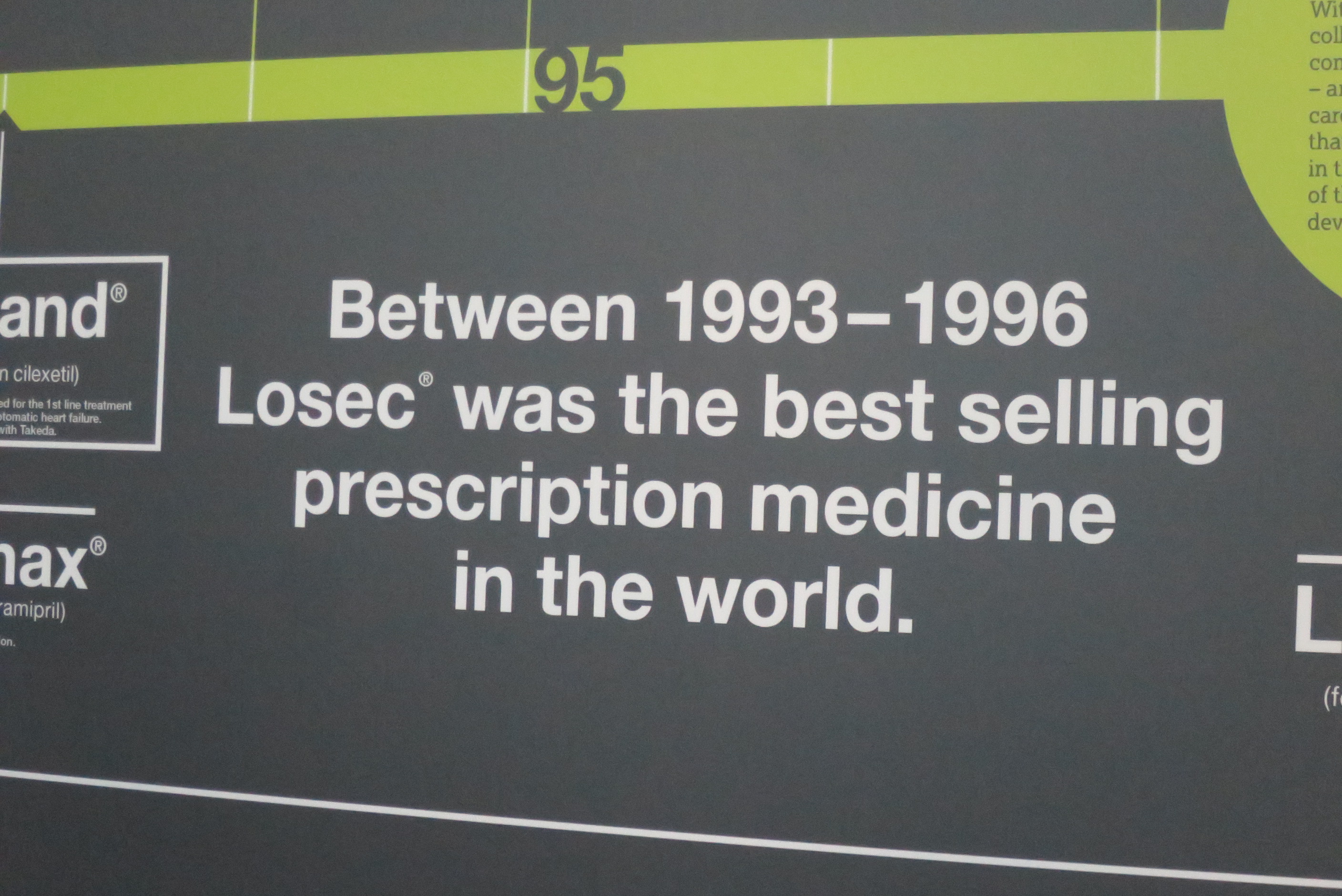
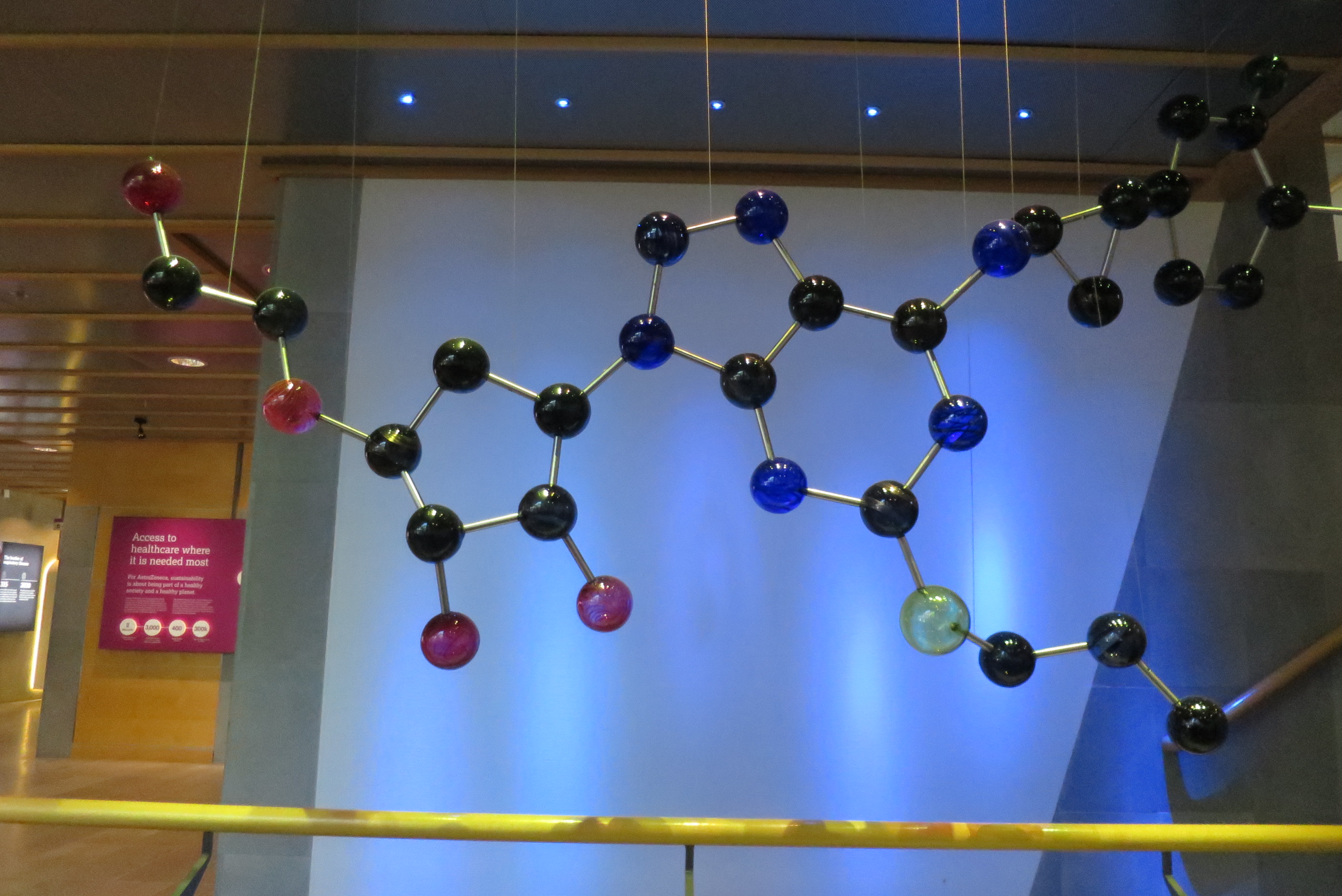

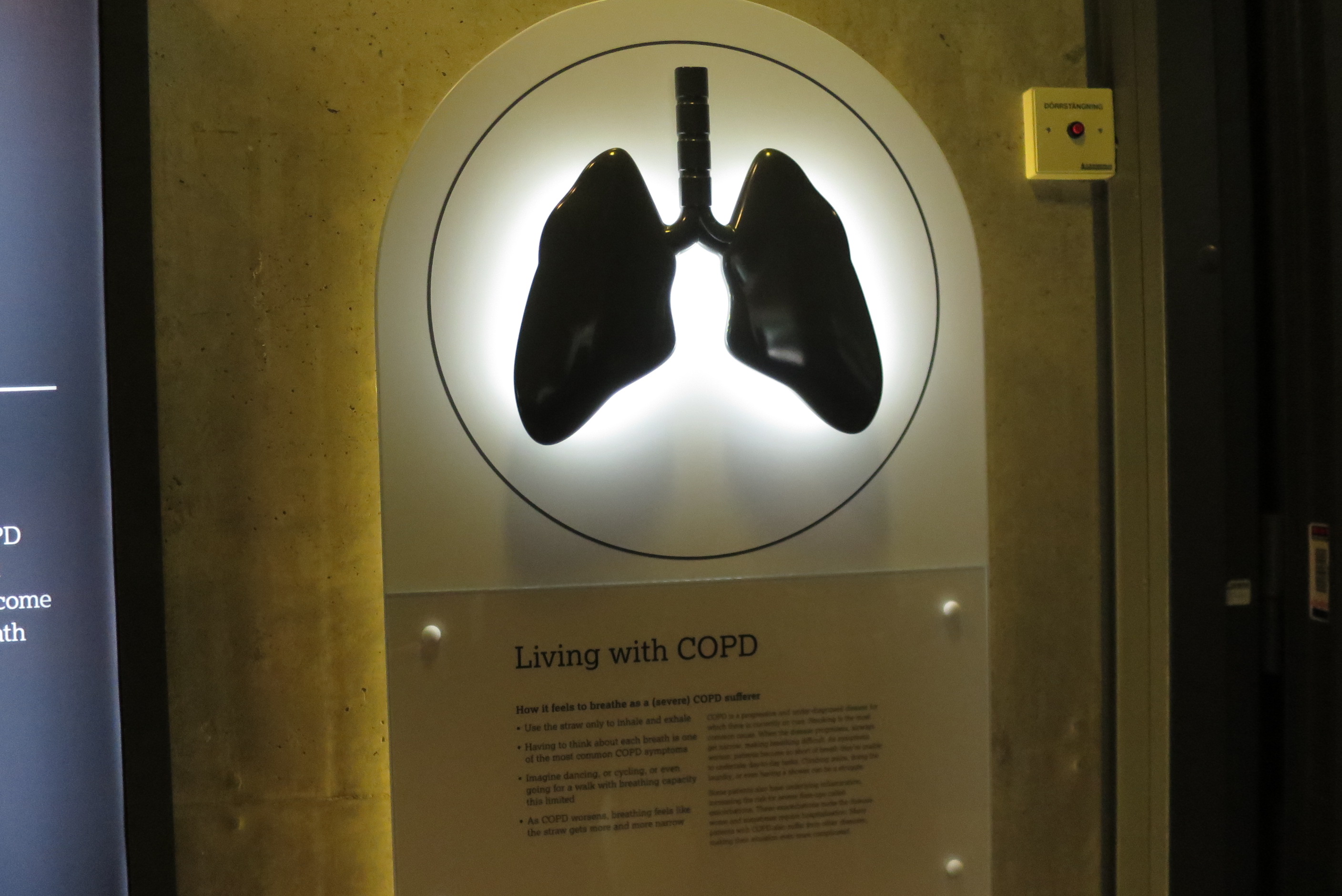

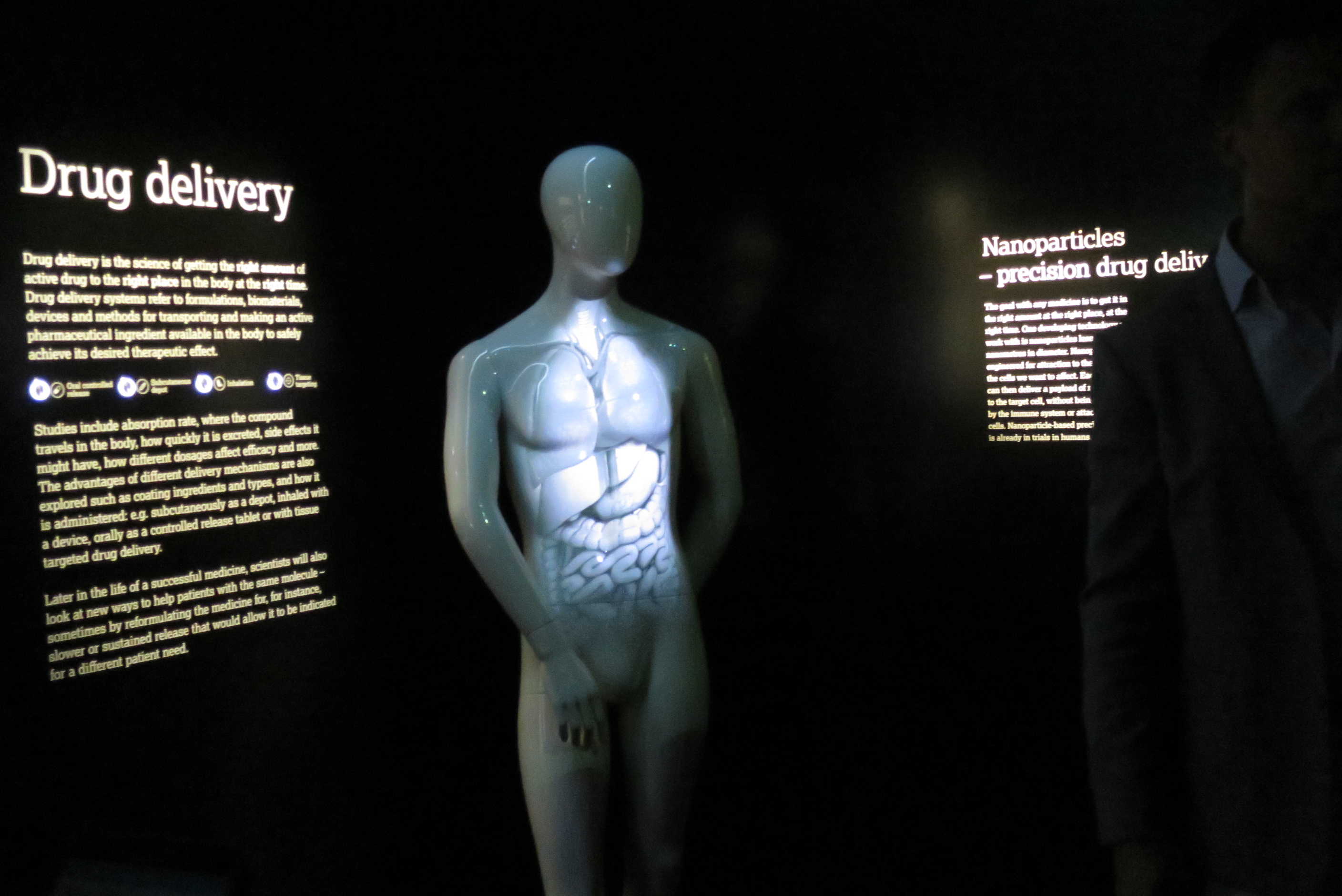
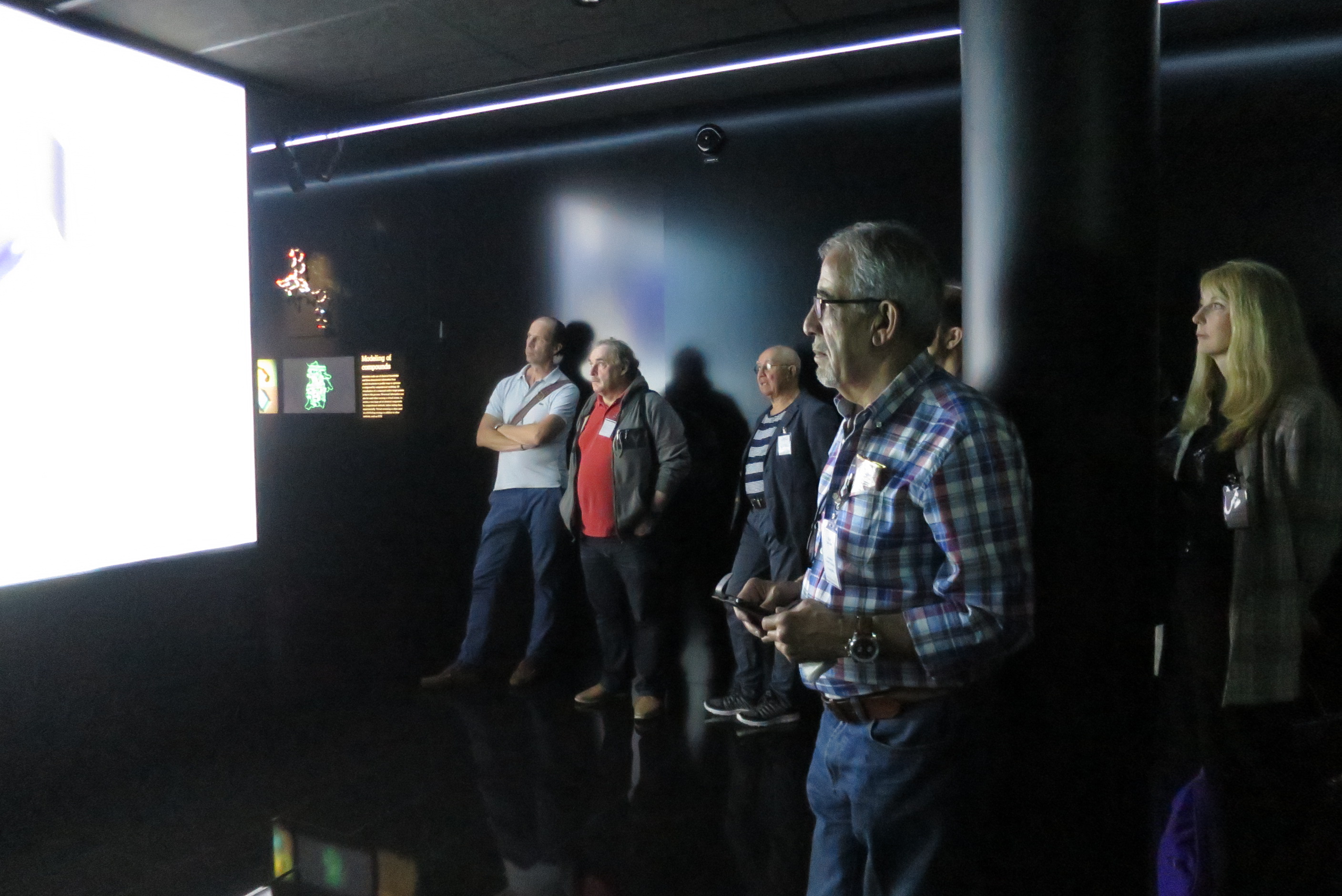
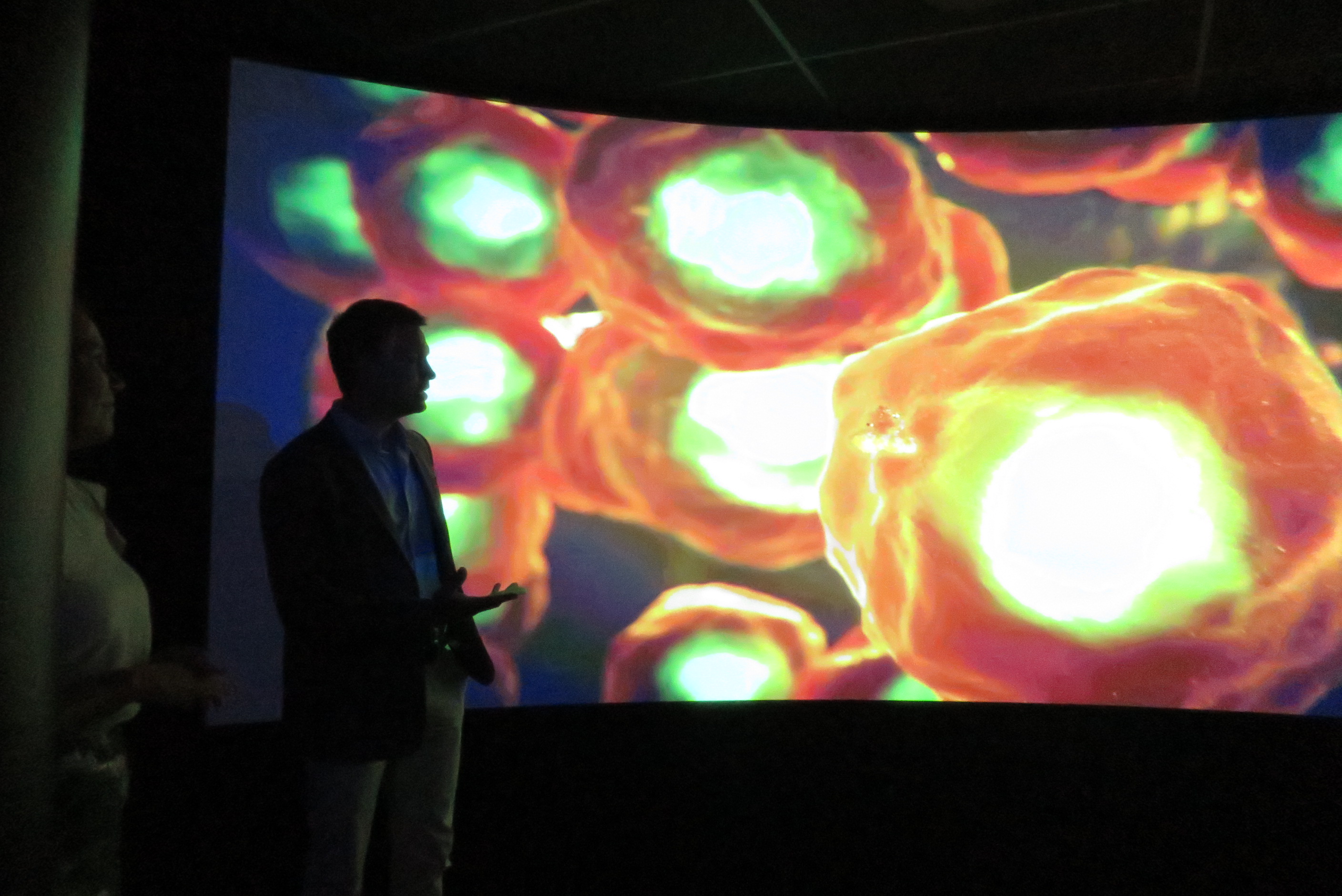
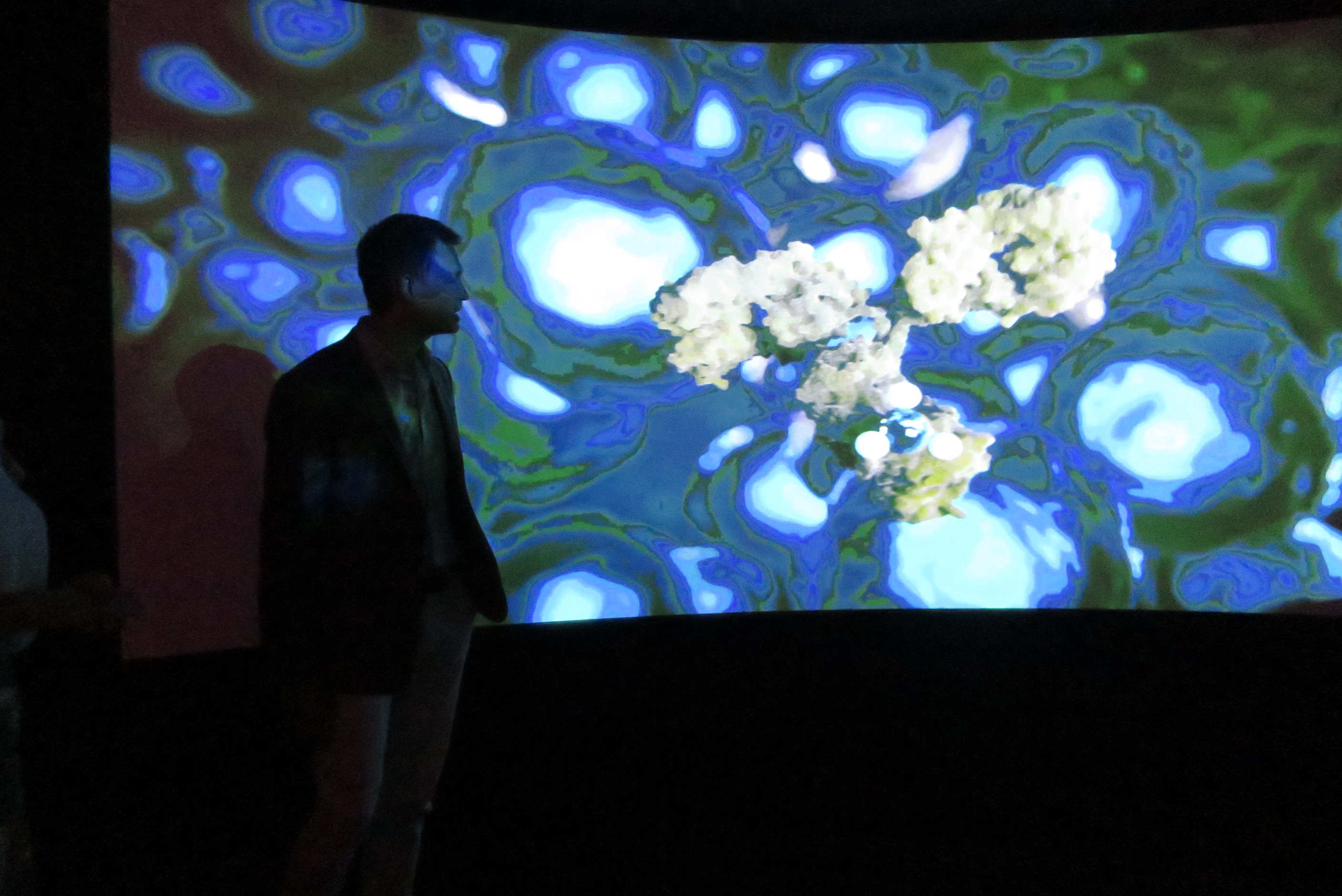
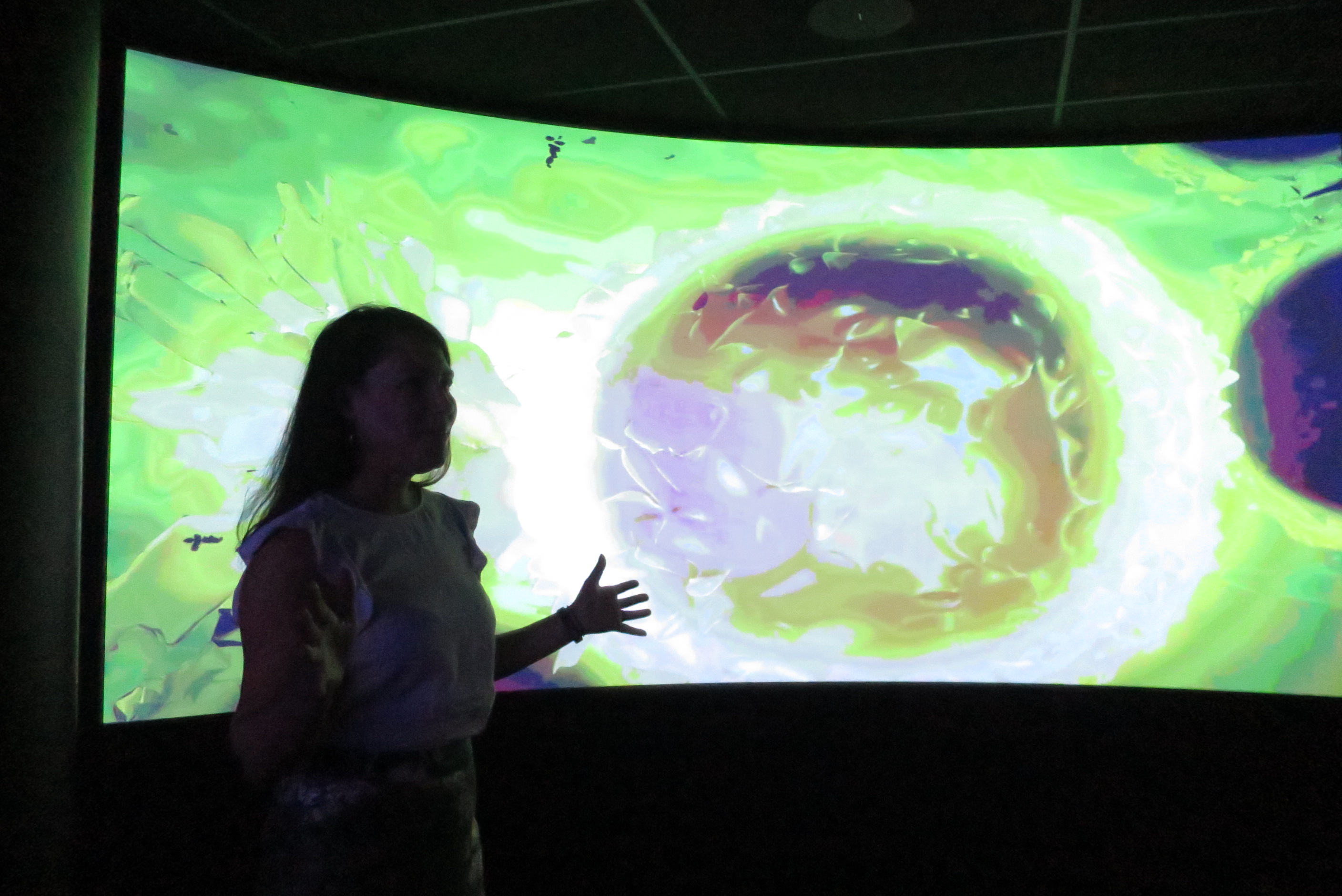

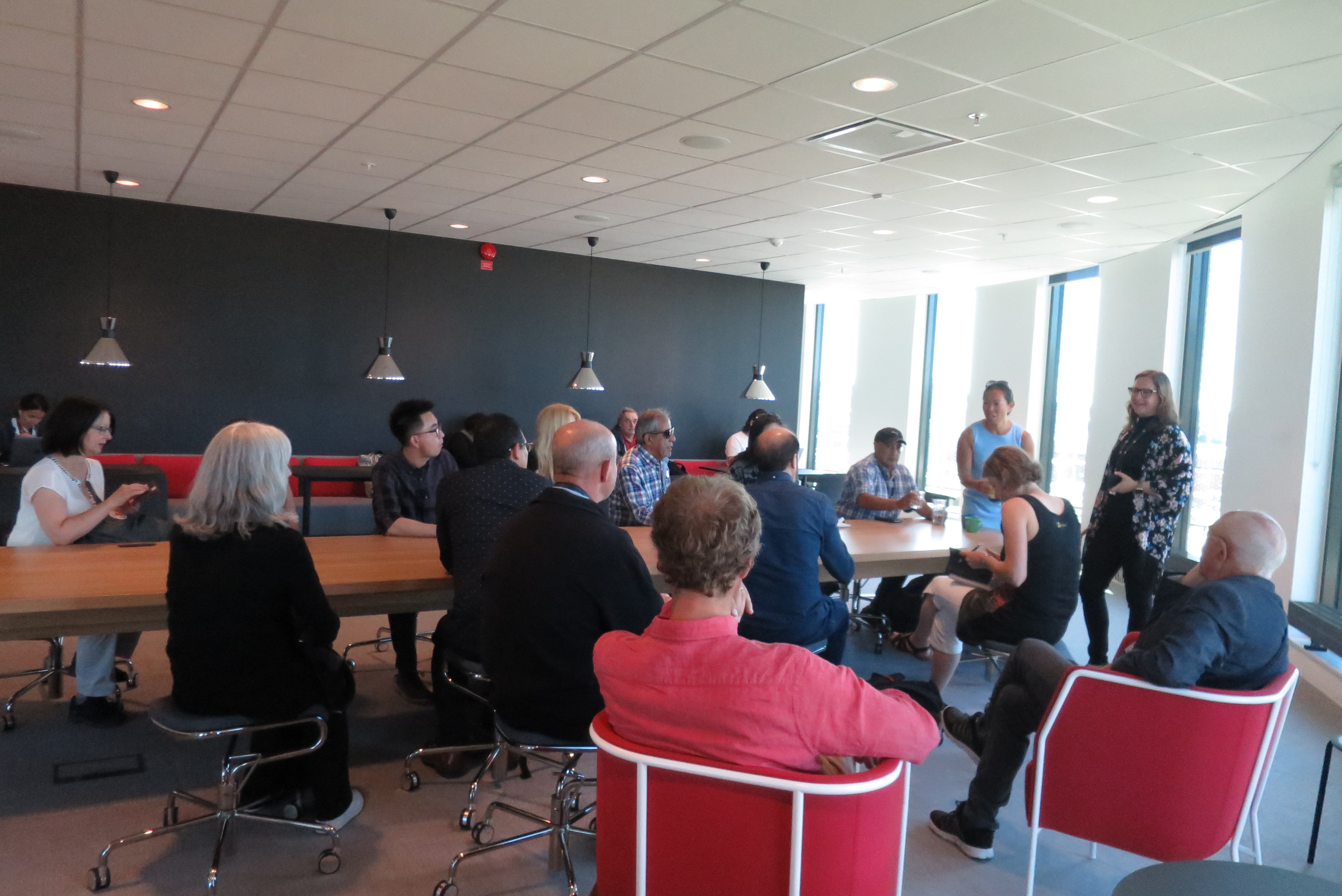


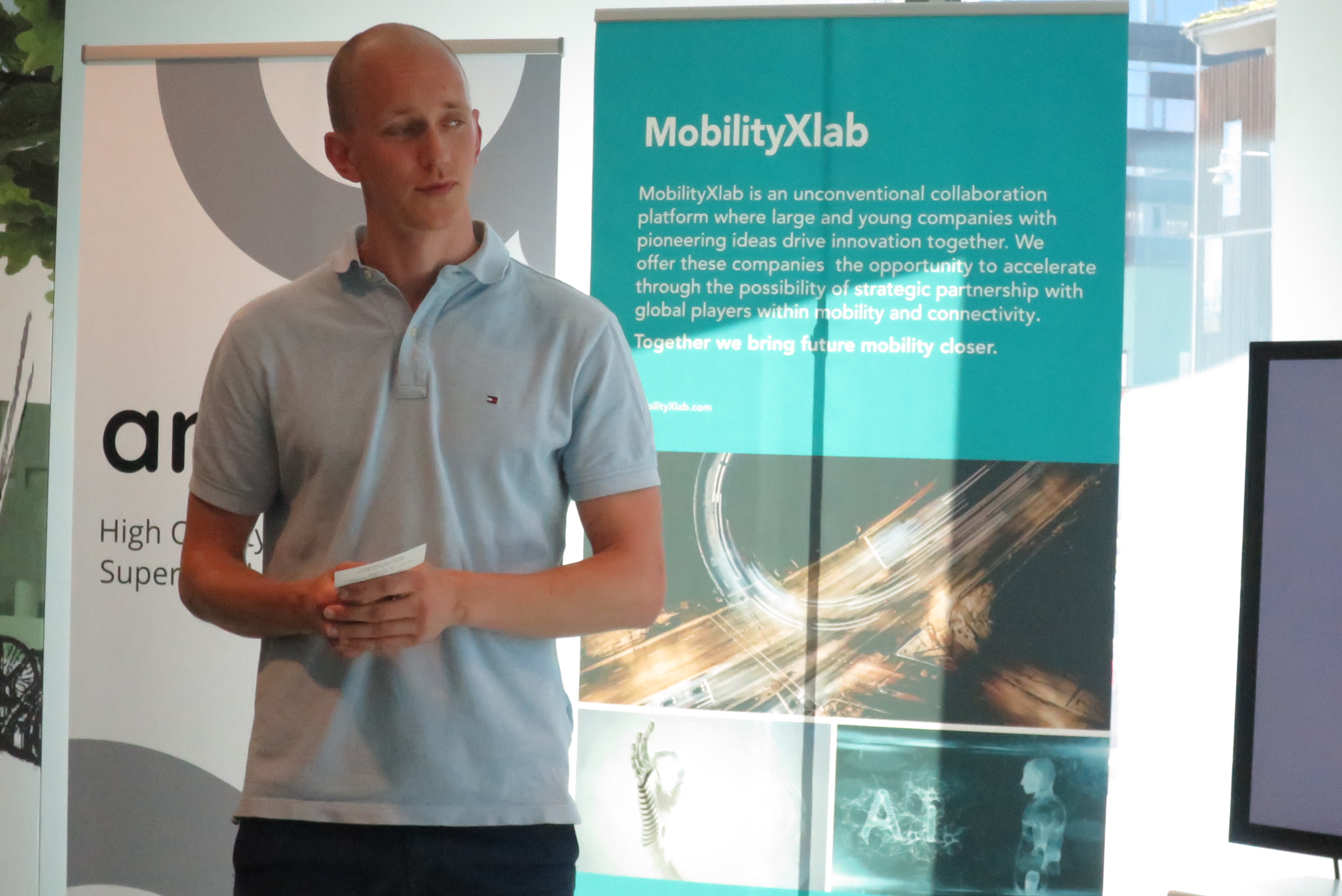

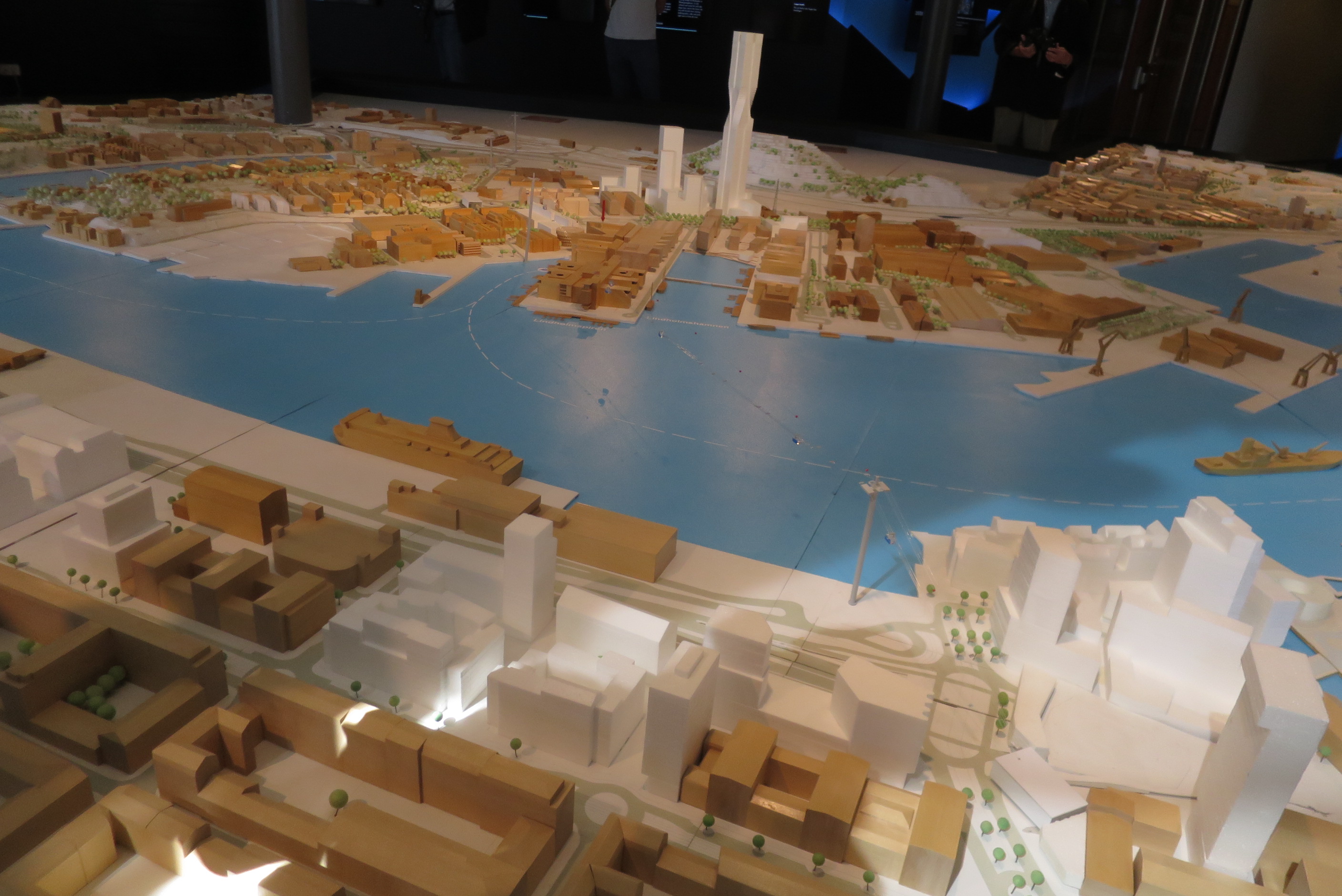
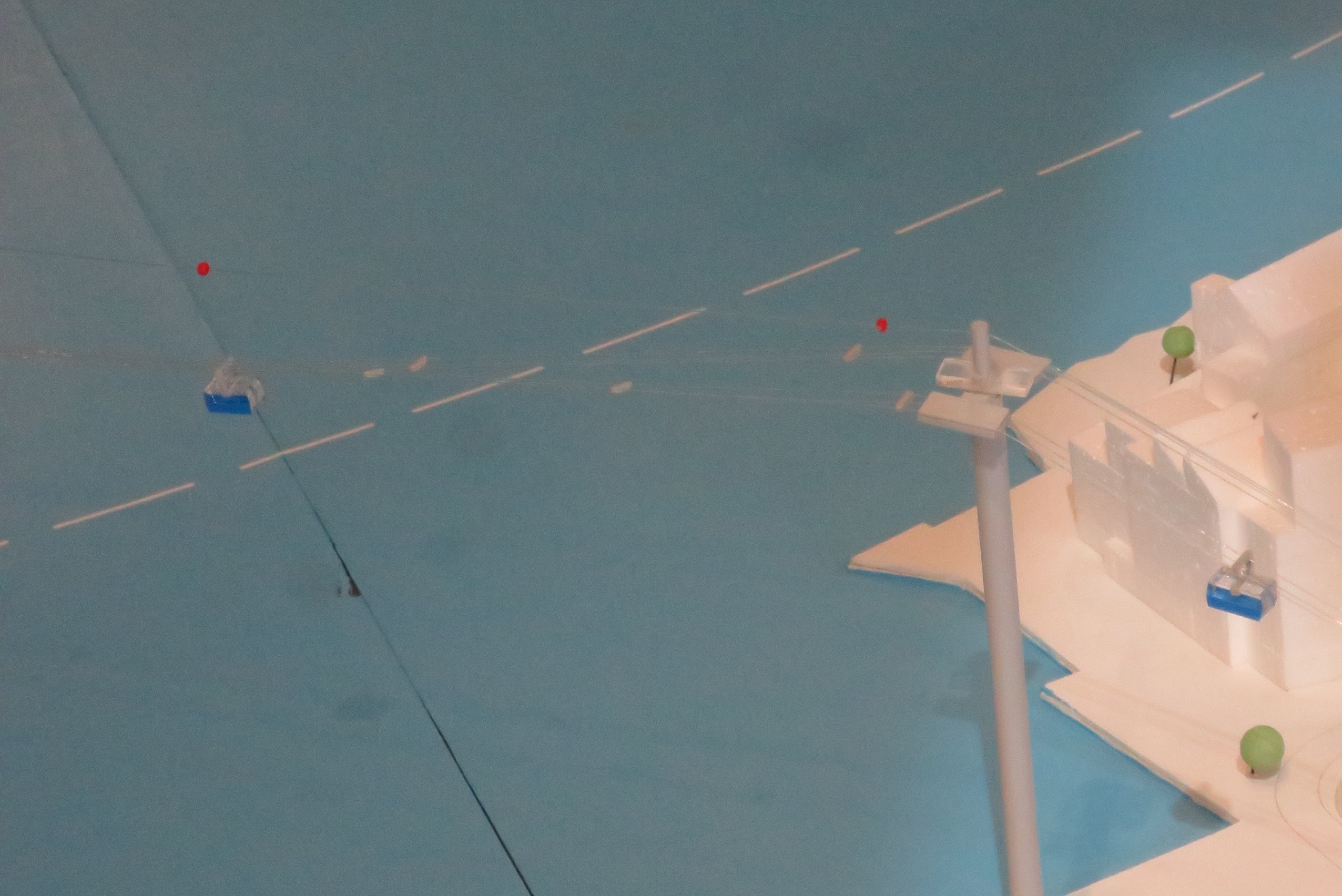
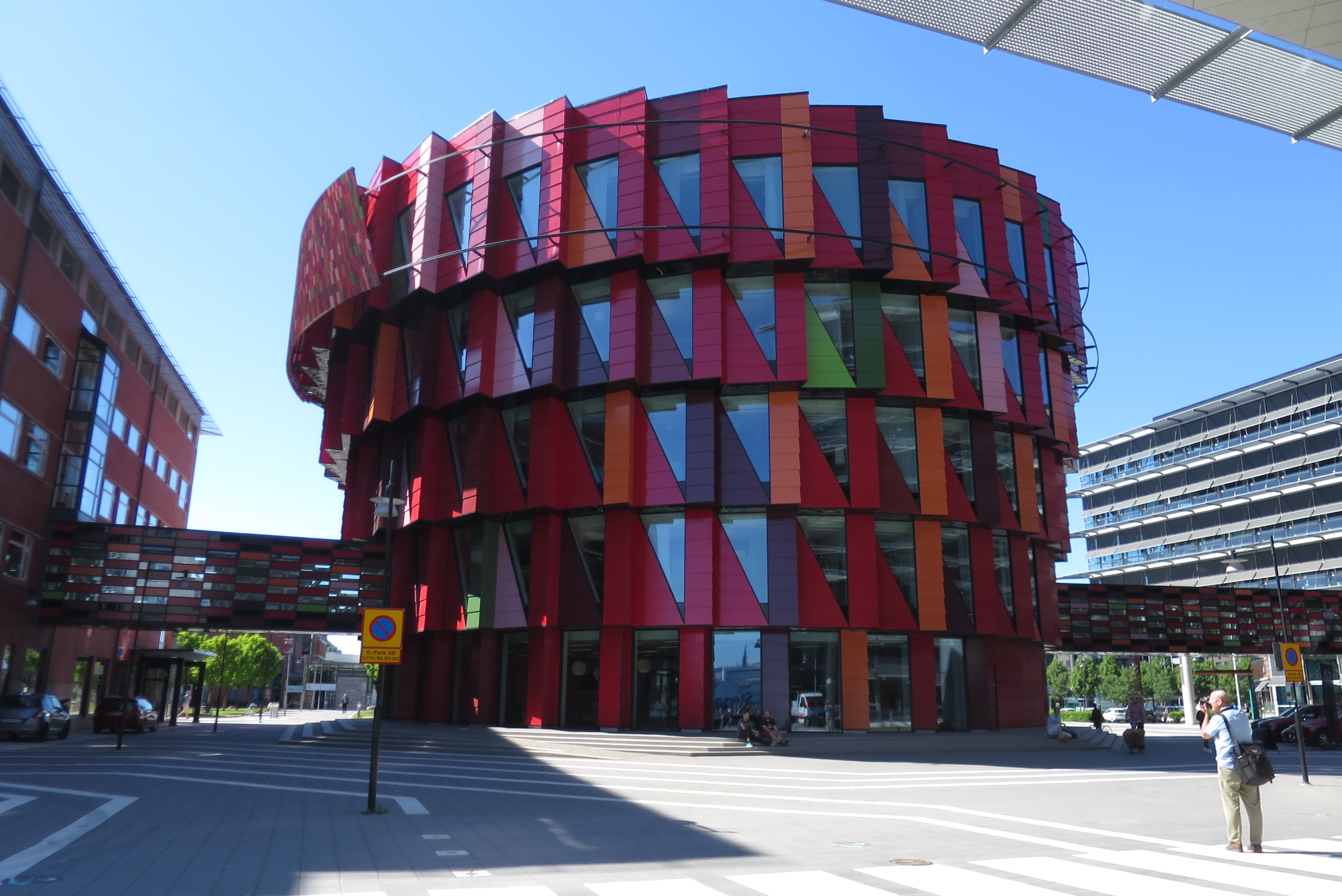
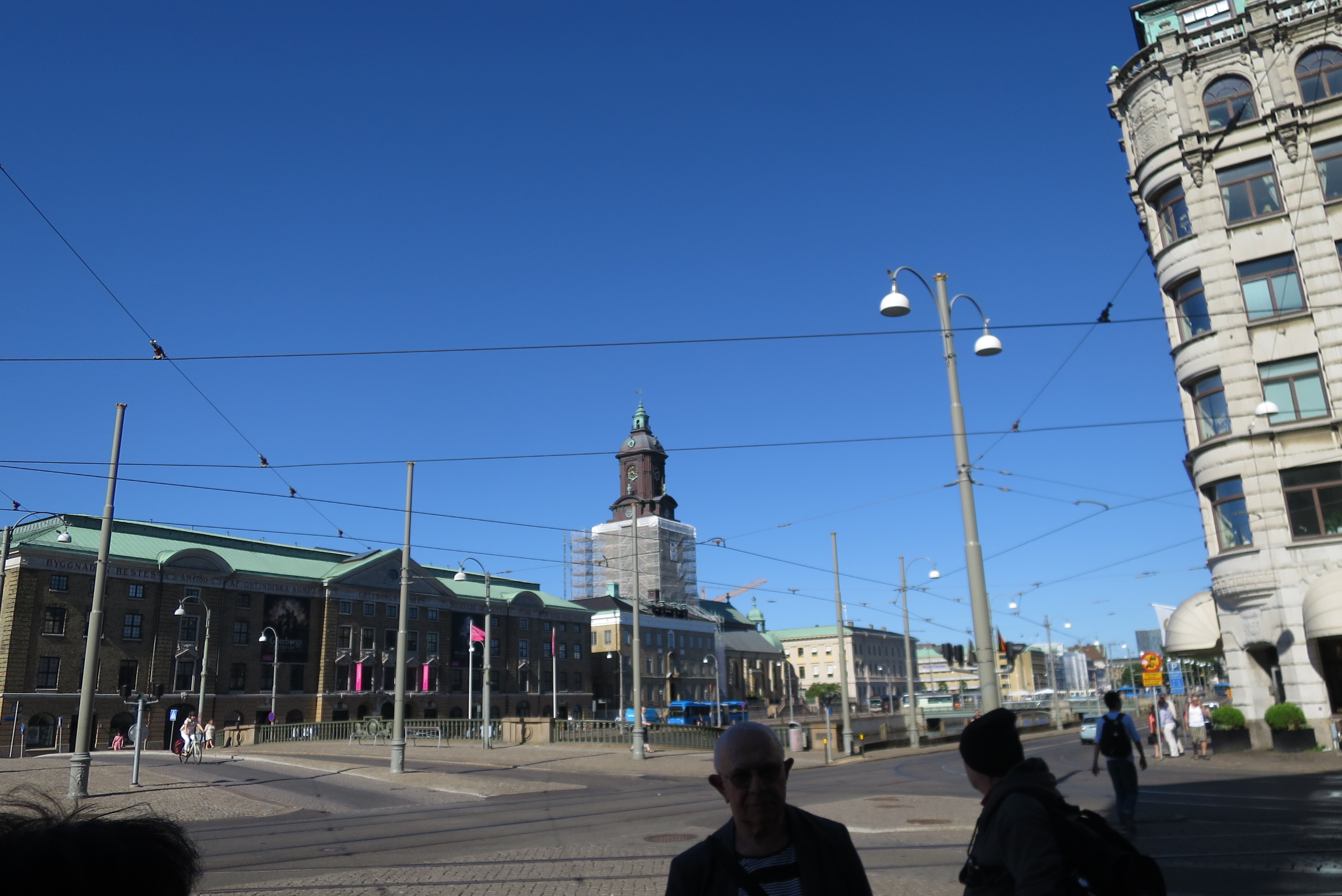


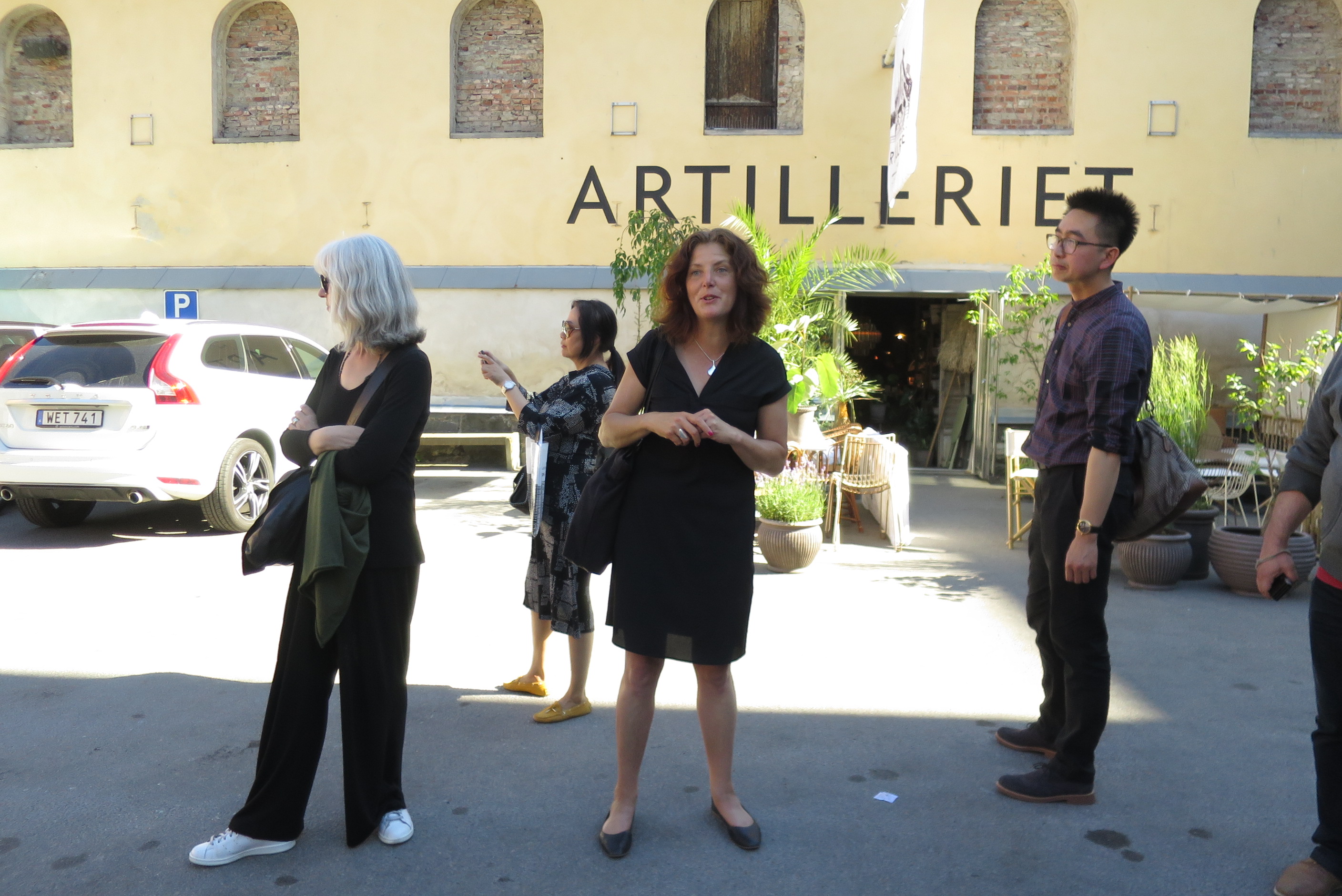

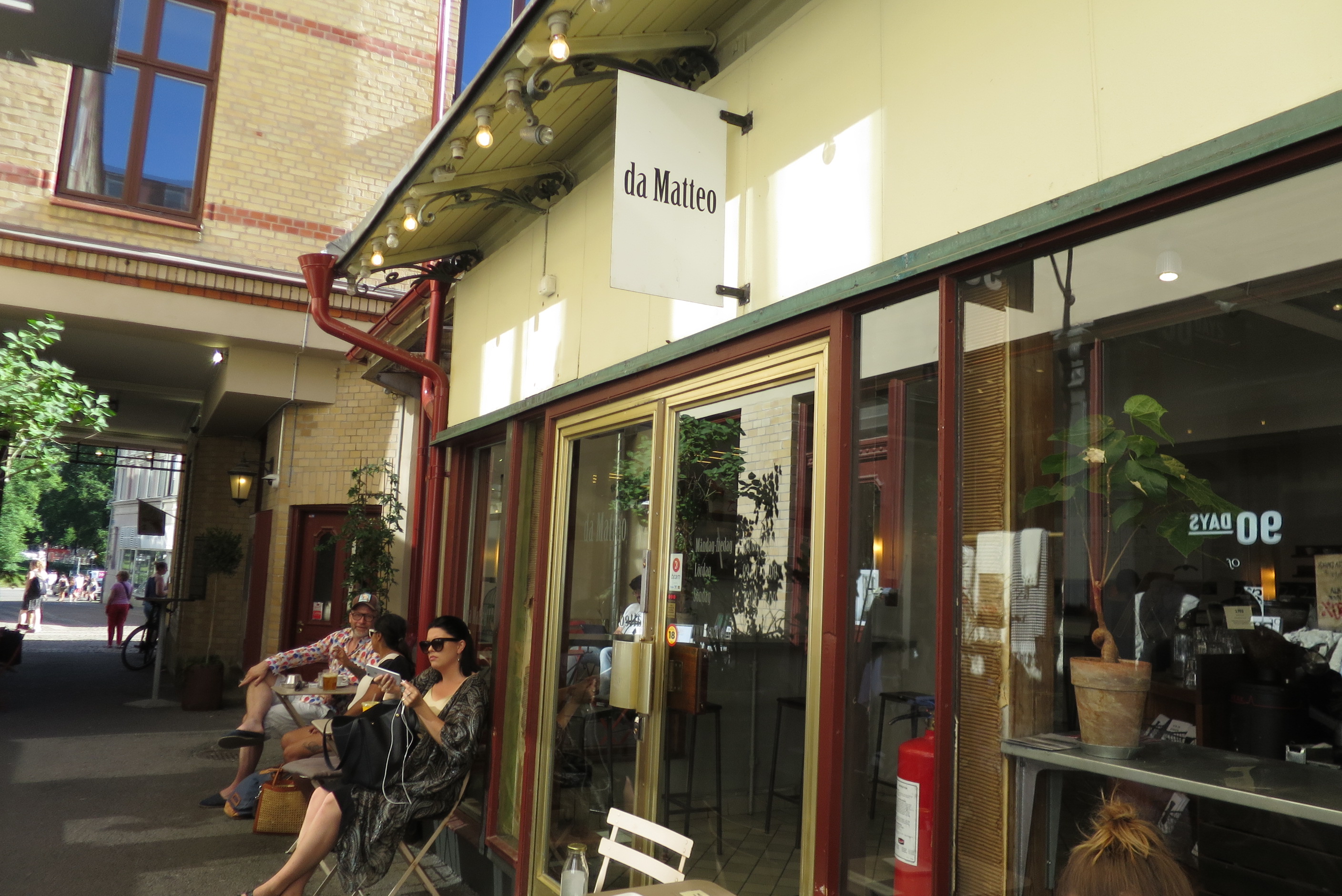
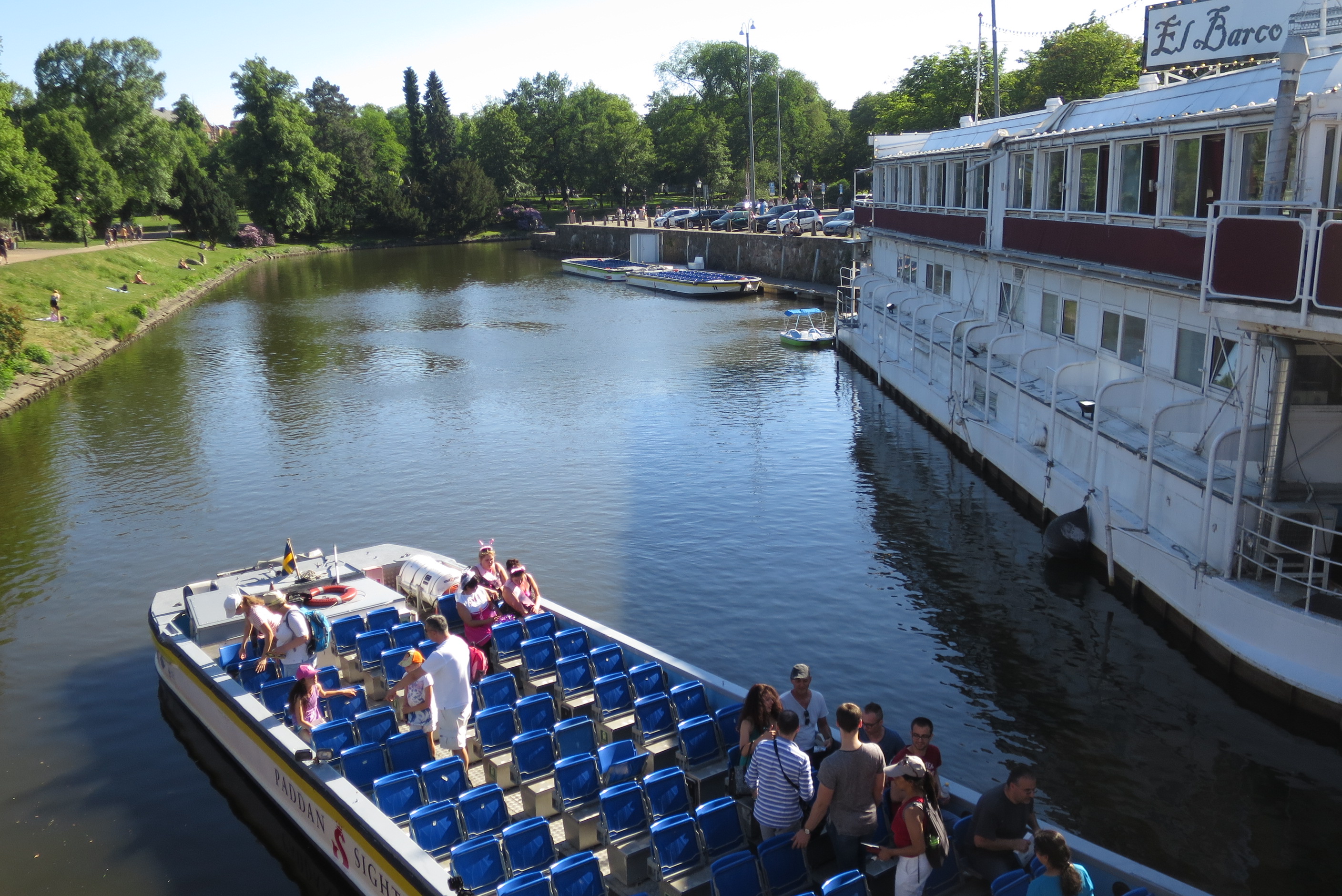

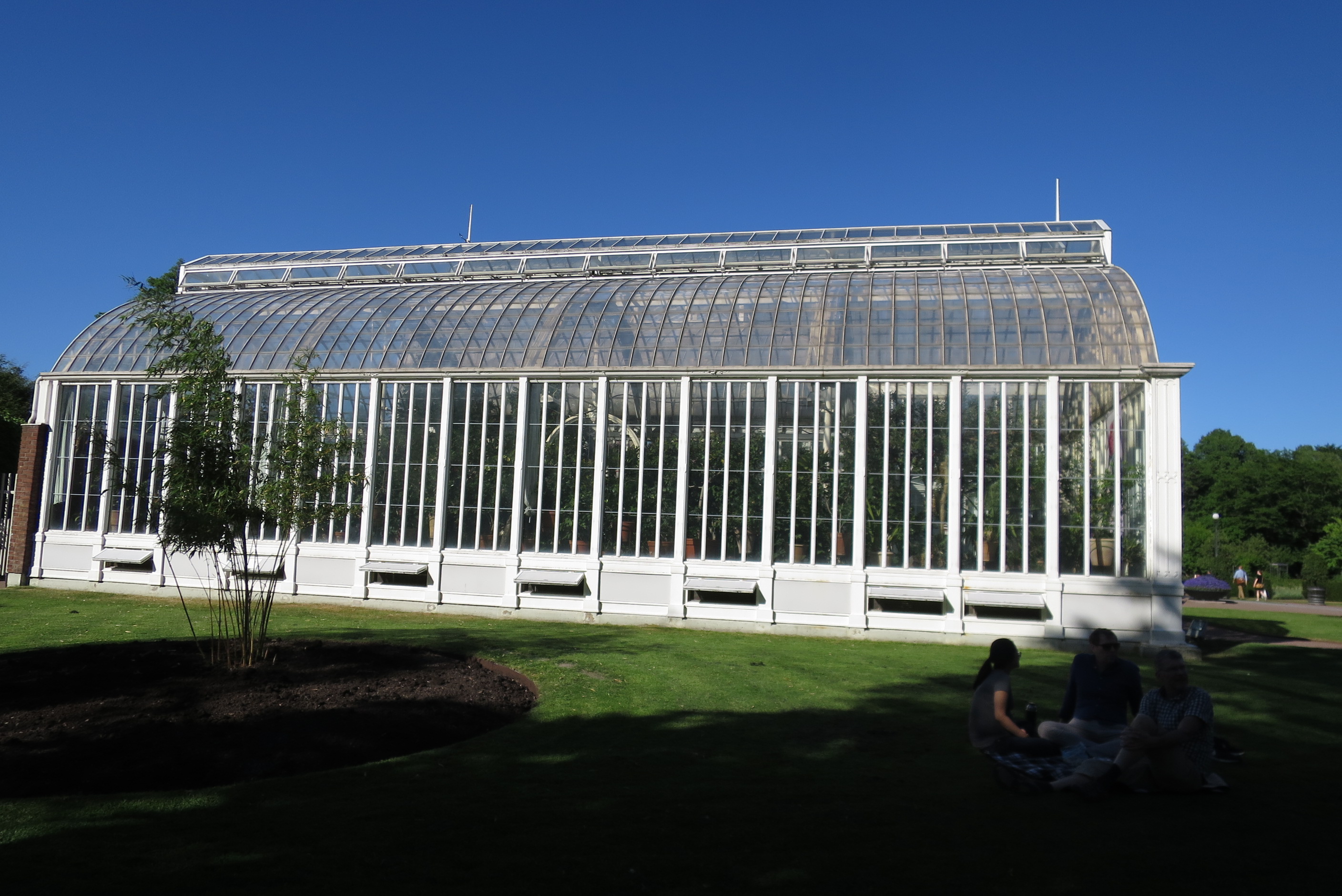
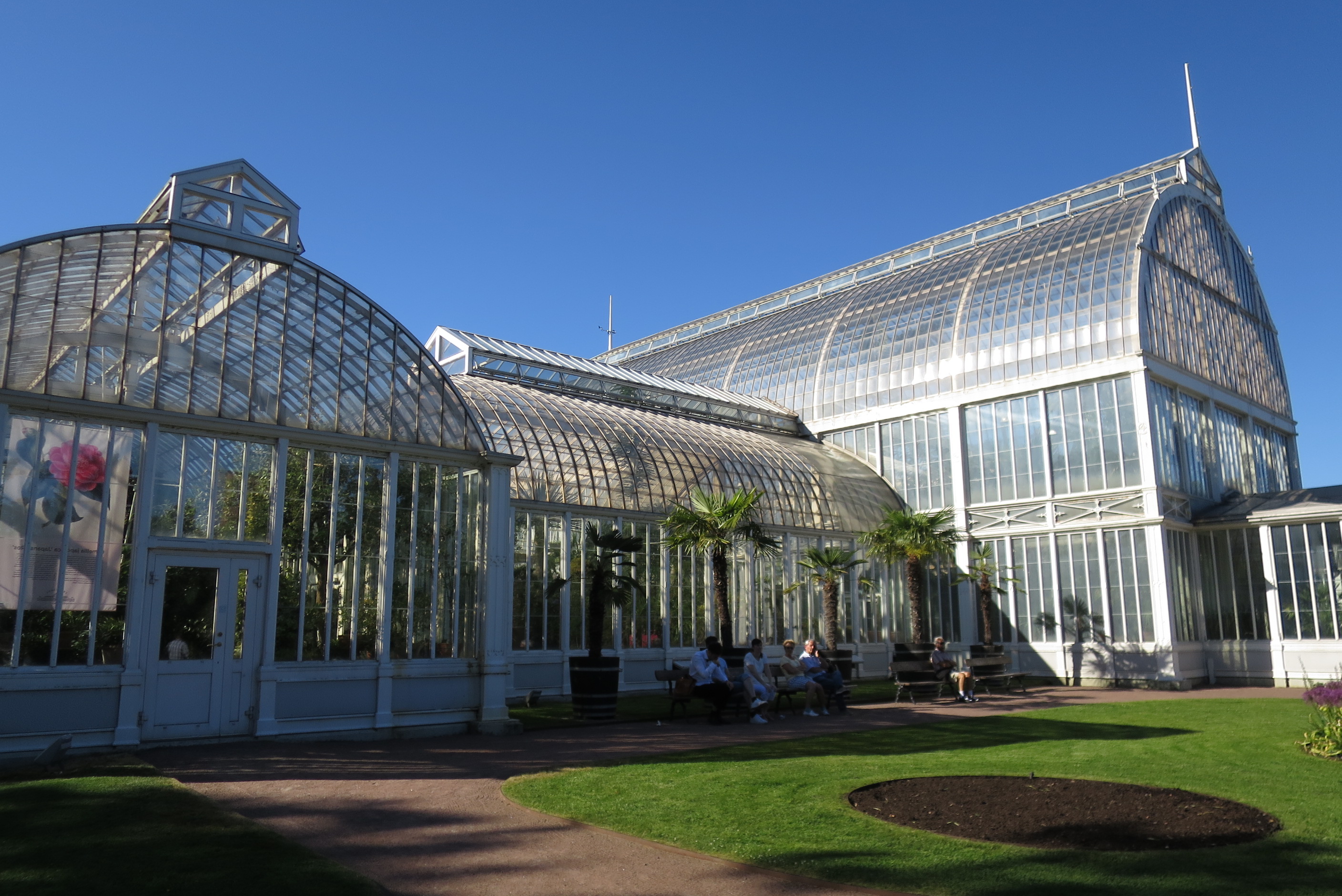
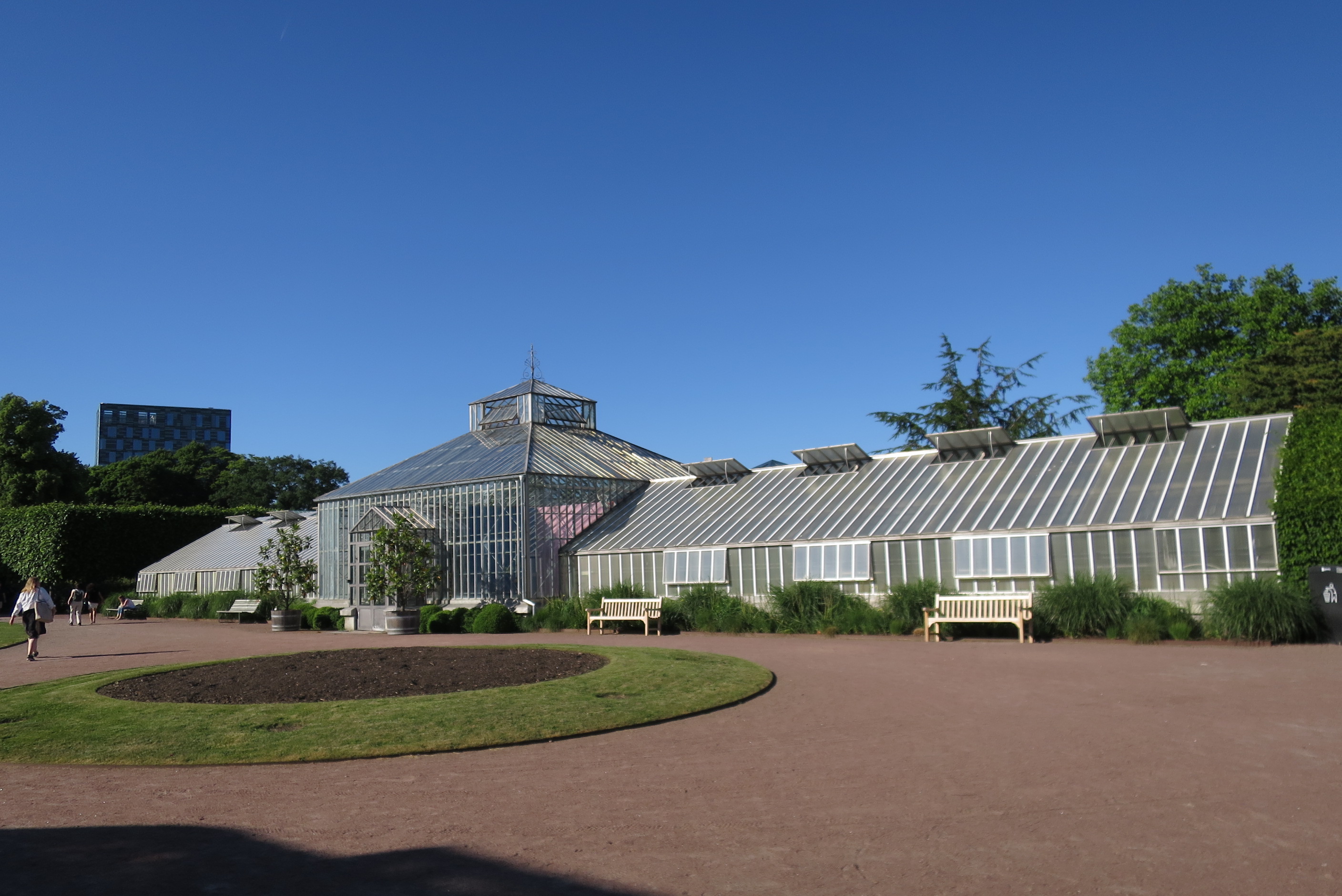

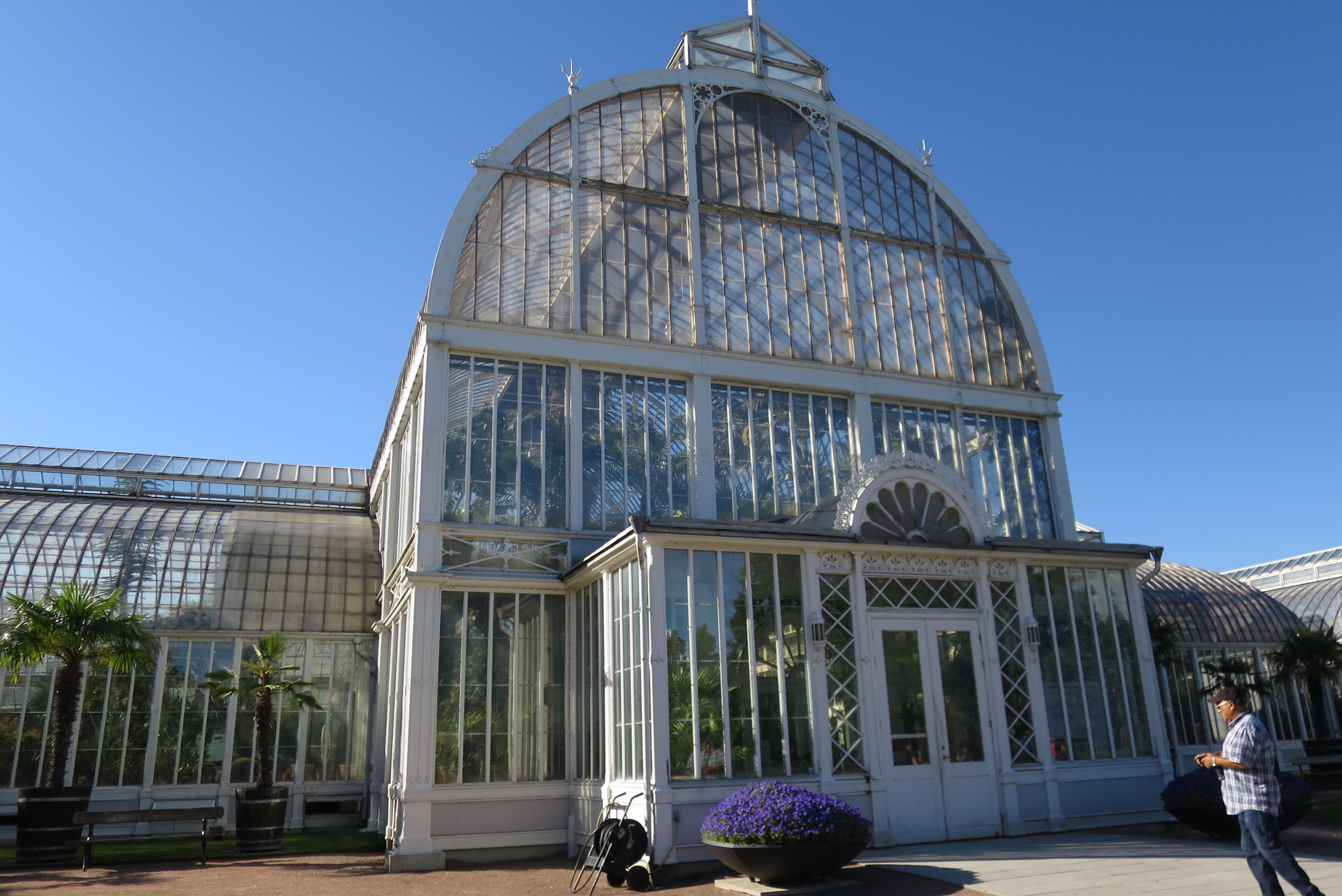
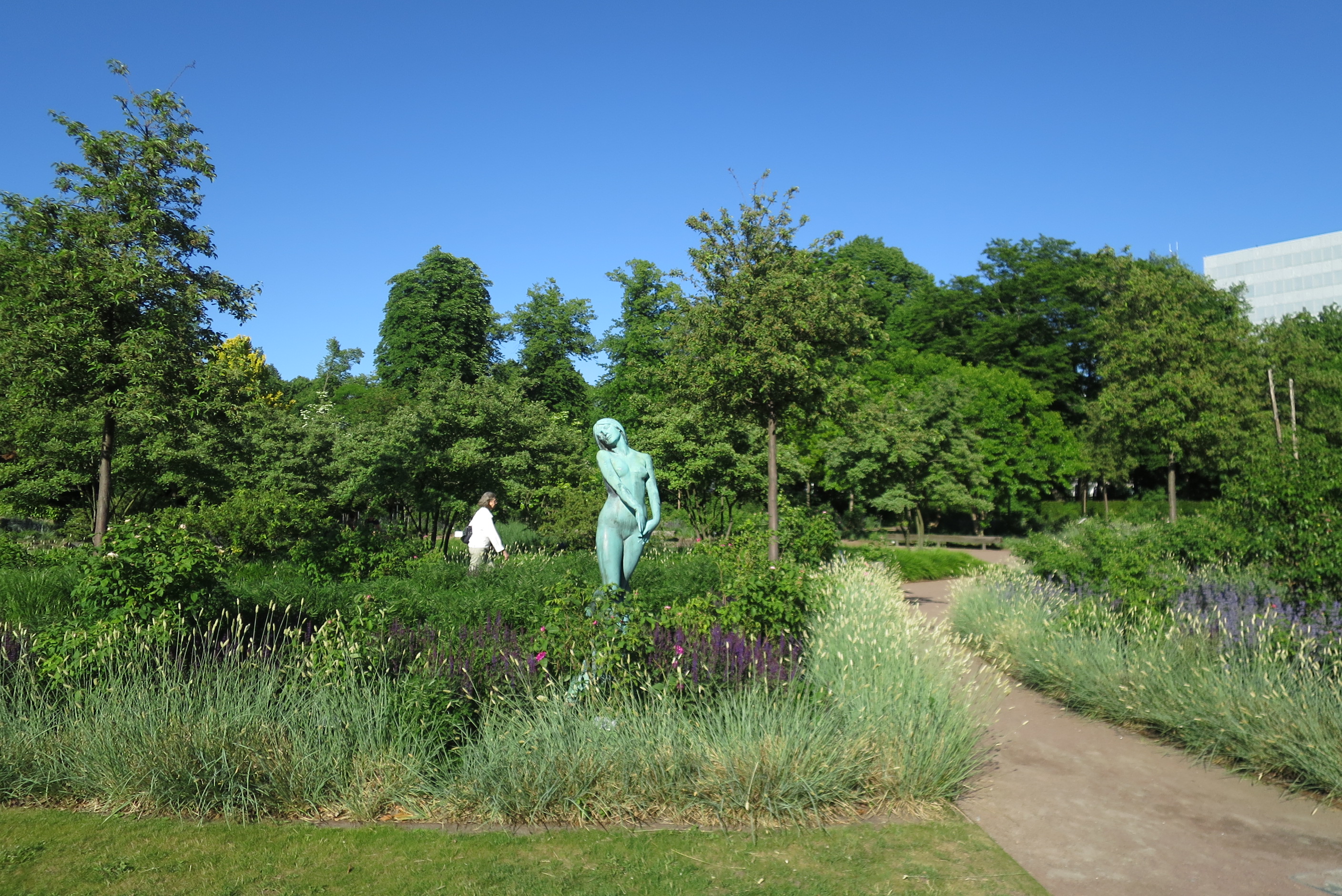
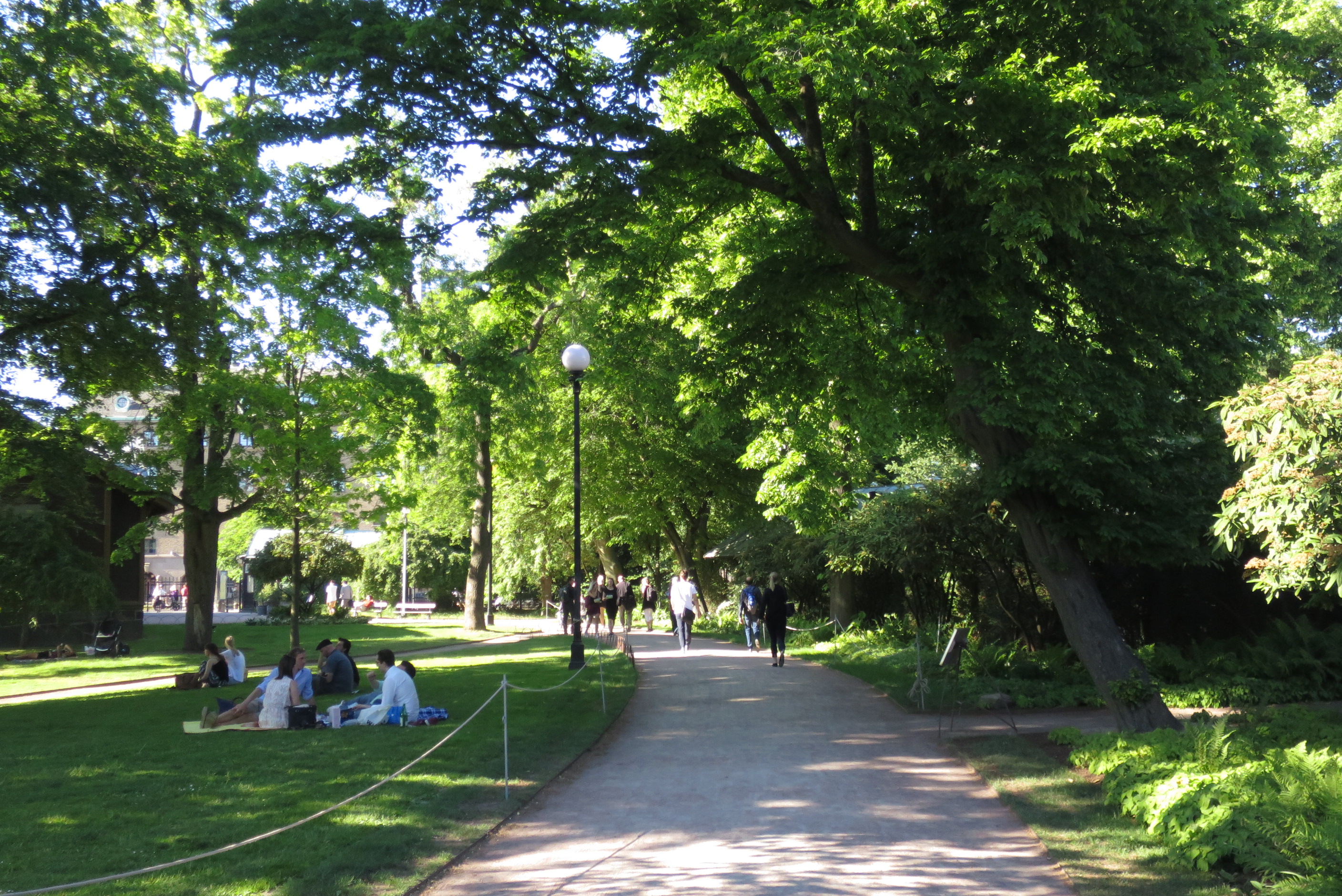

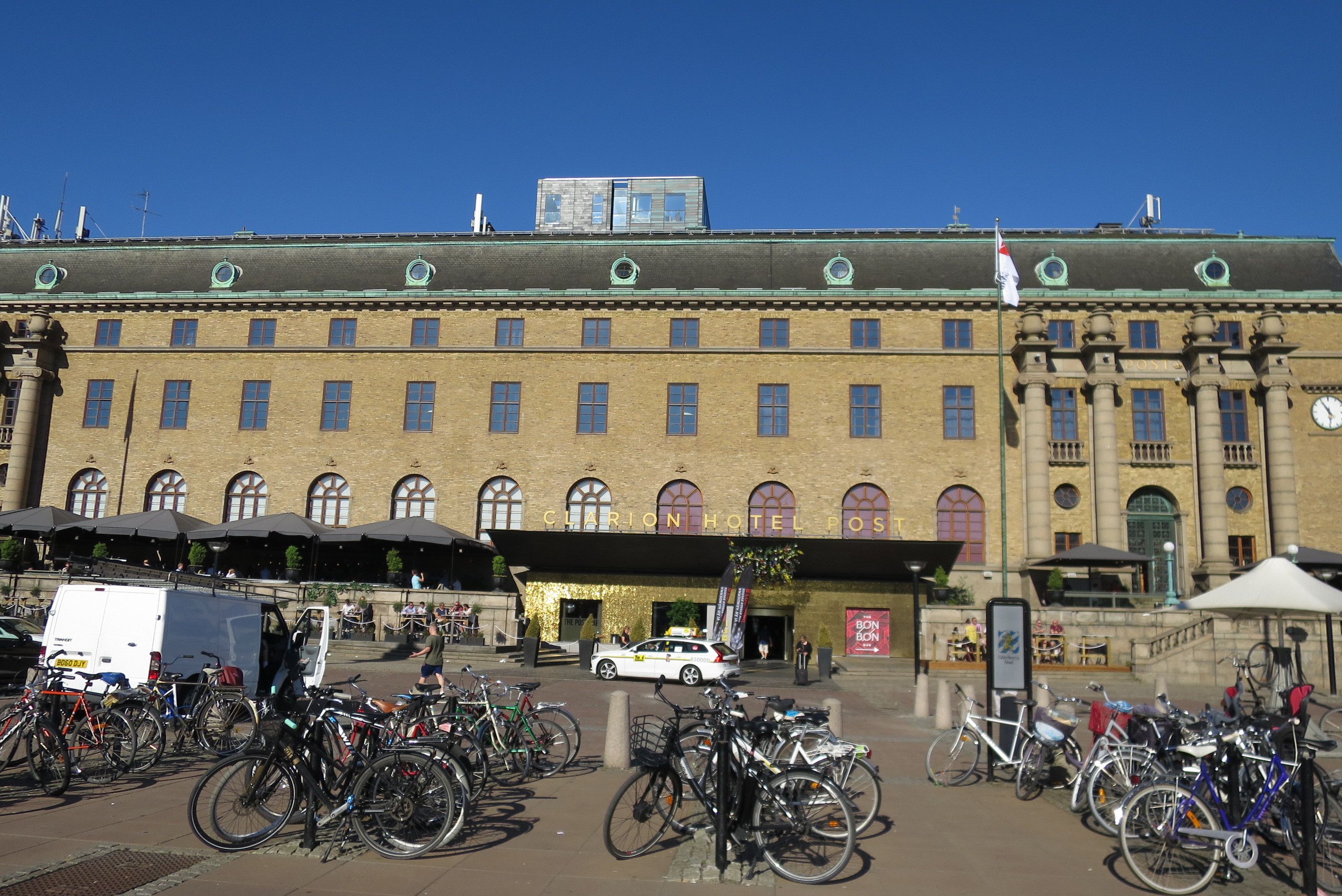
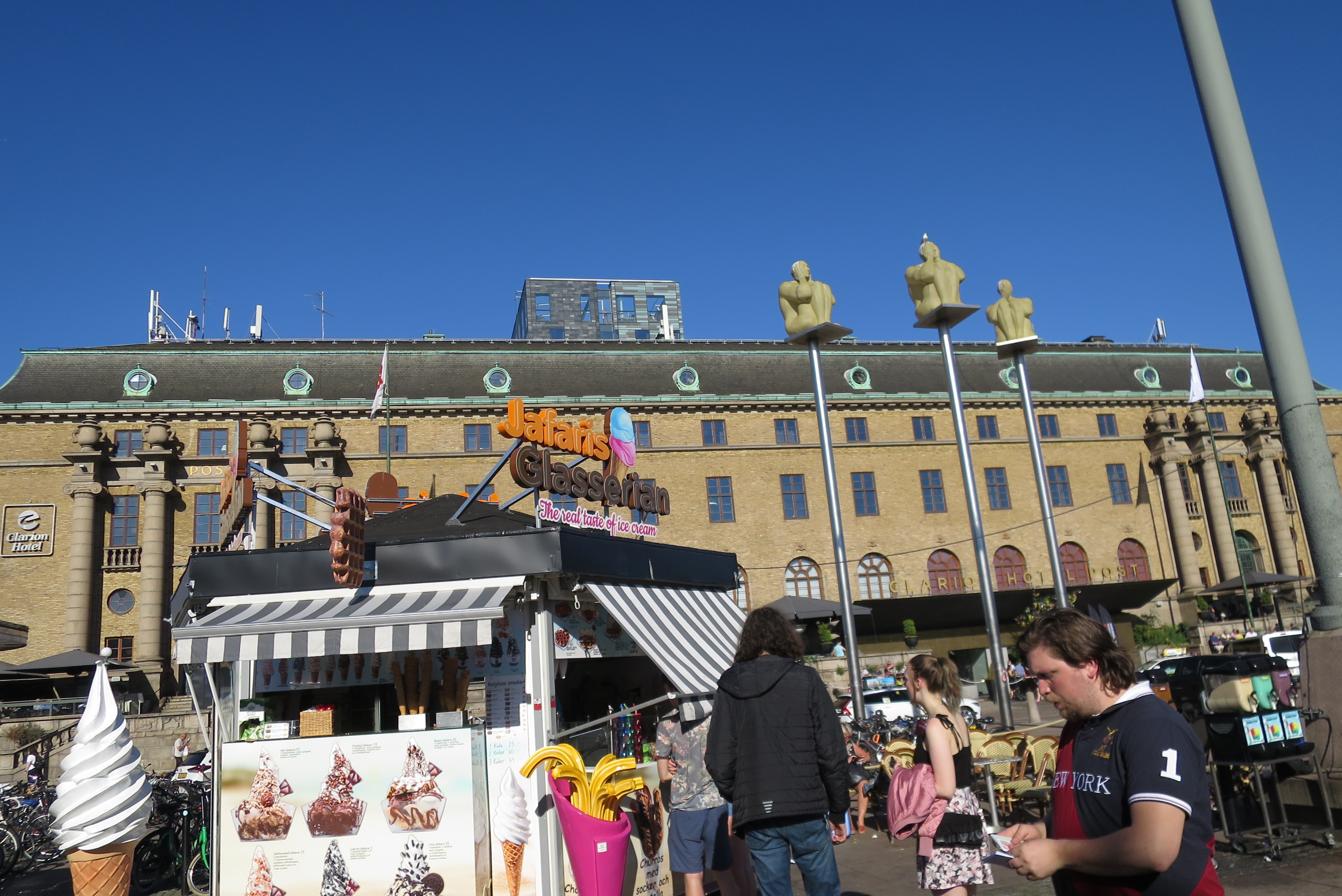

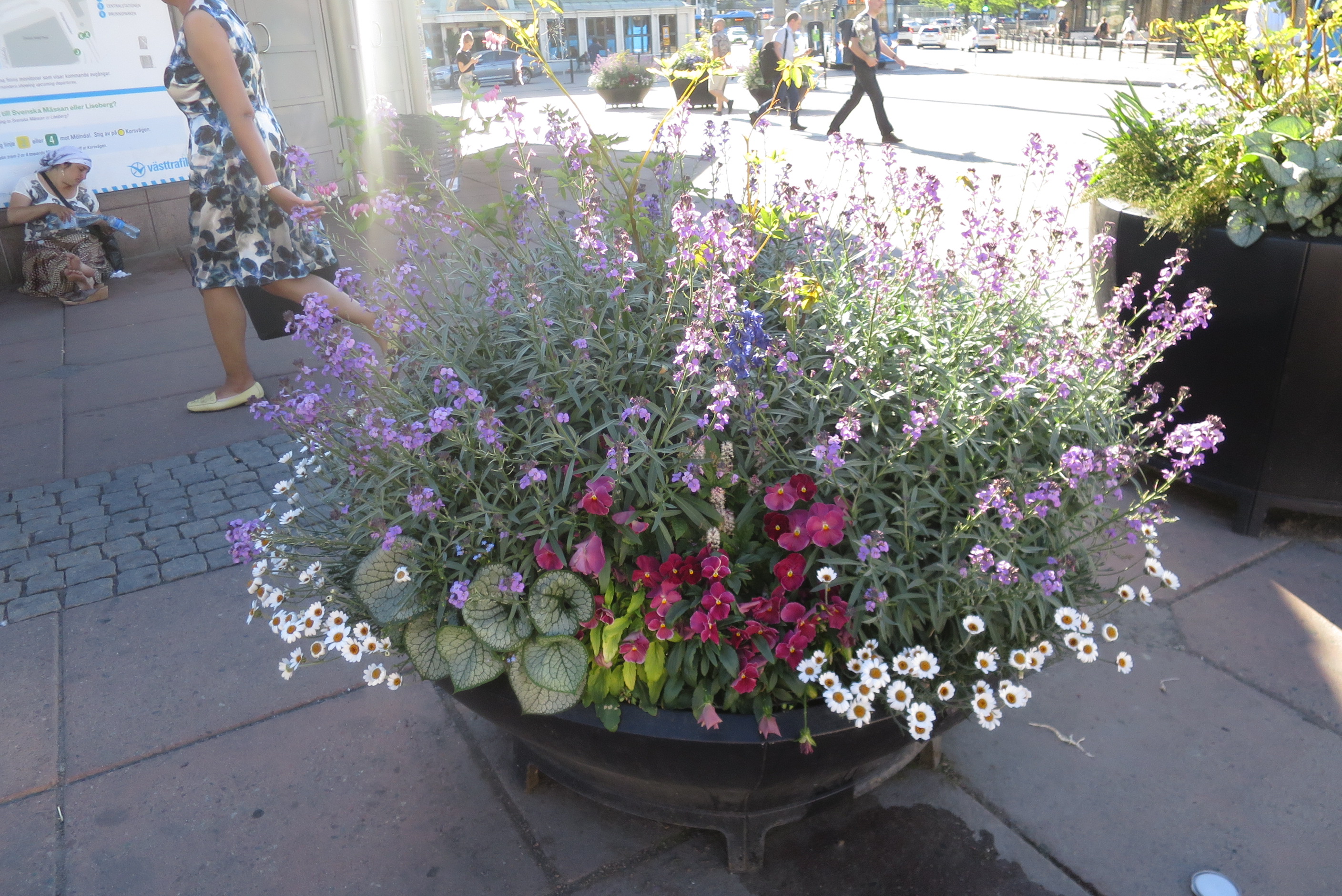
、-西班牙、-英国、-捷克、-荷兰-、比利时等国姐妹组成的欧华妇联总会代表团(队)参加了在美国西部三藩市(旧金山)旷周持久的该大赛活动,.jpg?media=1714983439)







